October 16.
Breakfast with the French group, who have definitely warmed up a good deal to me. Babbu and my driver, Tinku, pick me up, and we set off for Old Kanker and walked around, seeing several temples, and cows, then happened in on a school with kids praying and singing the national Anthem. I met briefly with a couple teachers and the principal to say hello.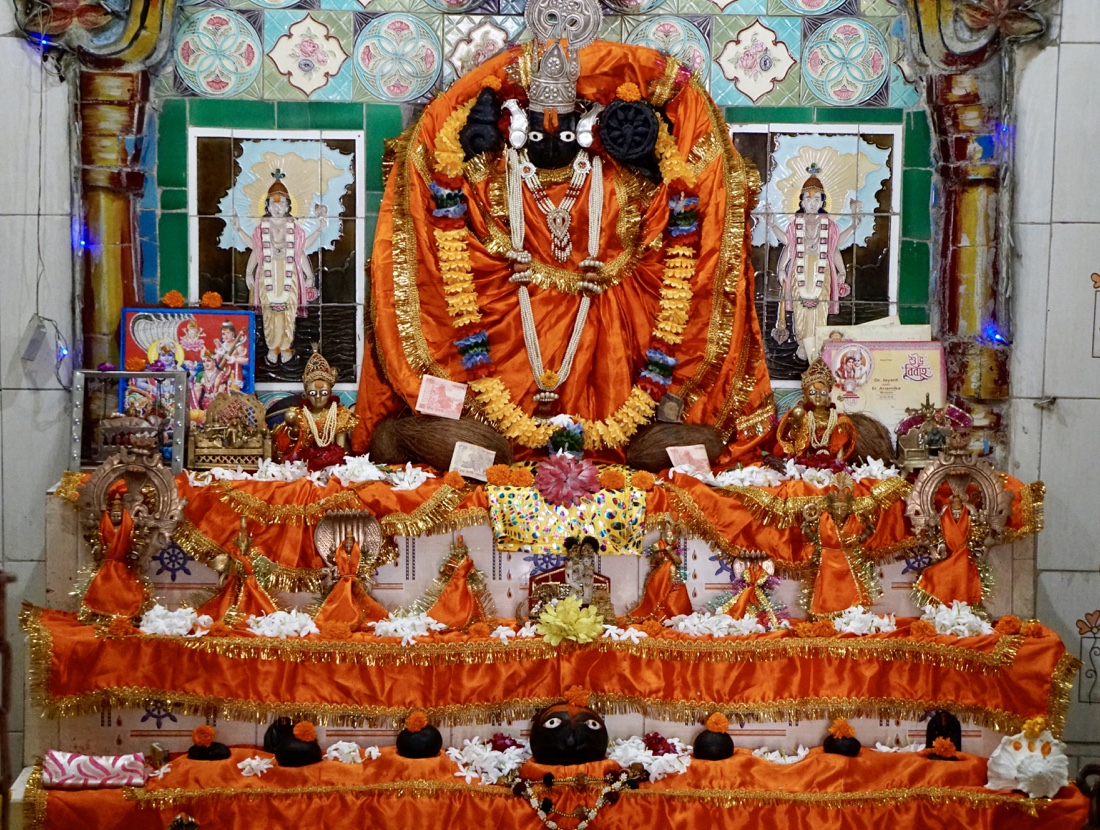 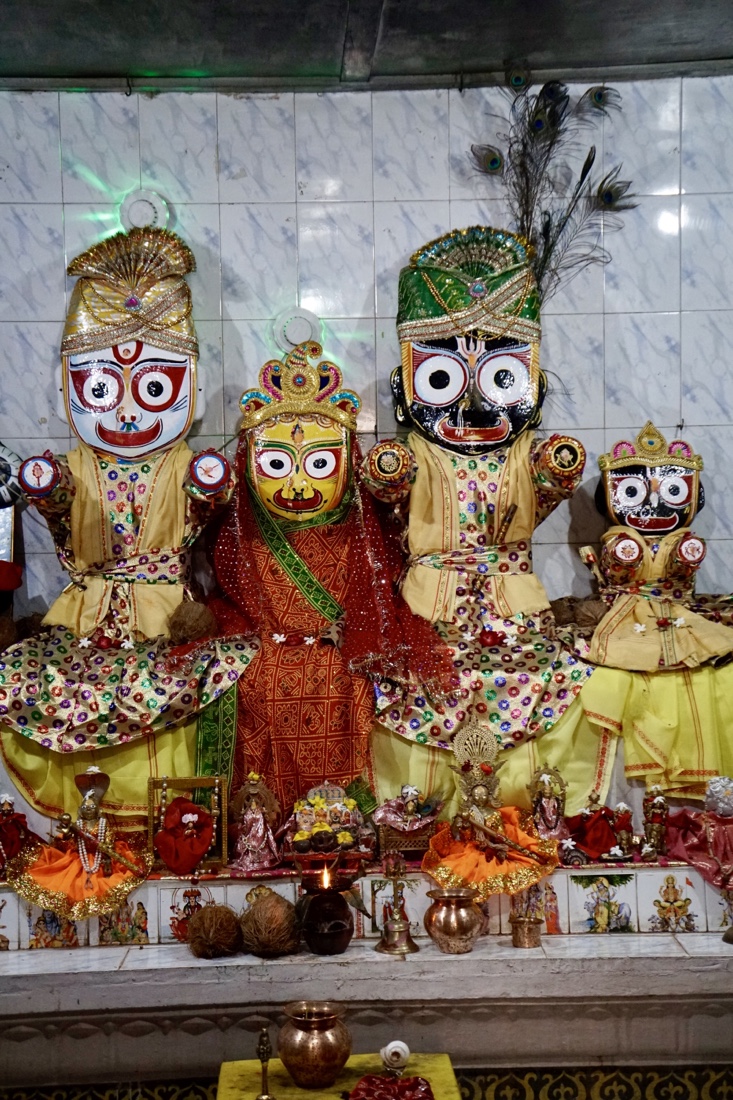 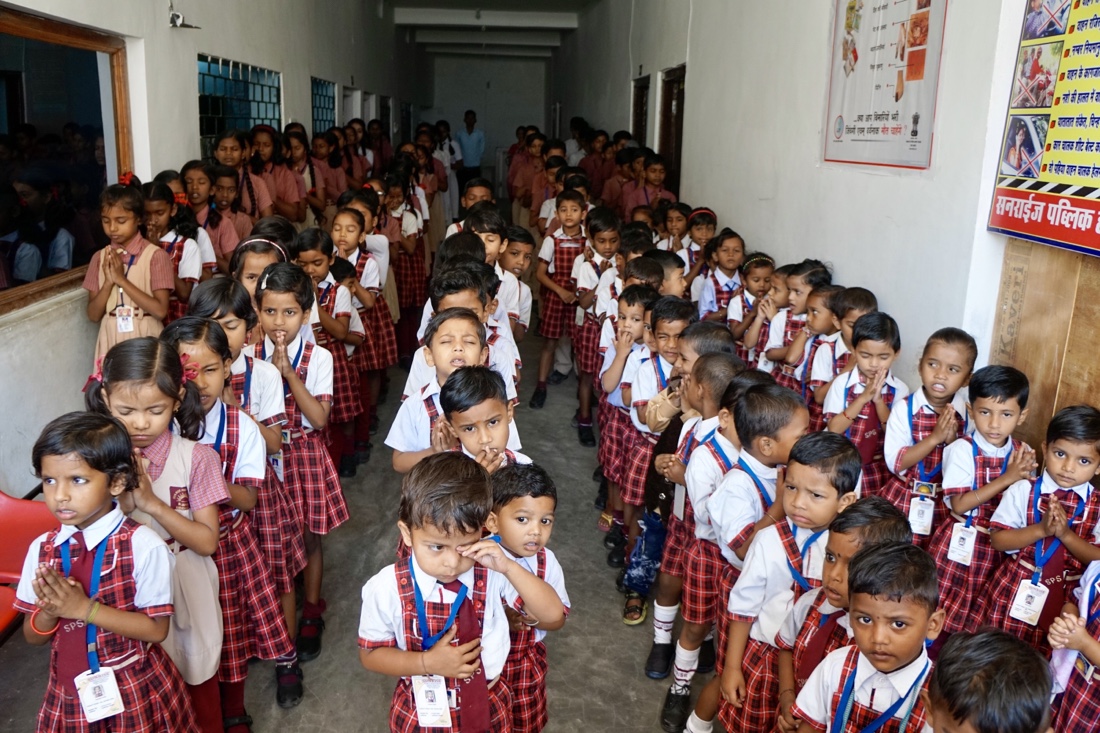 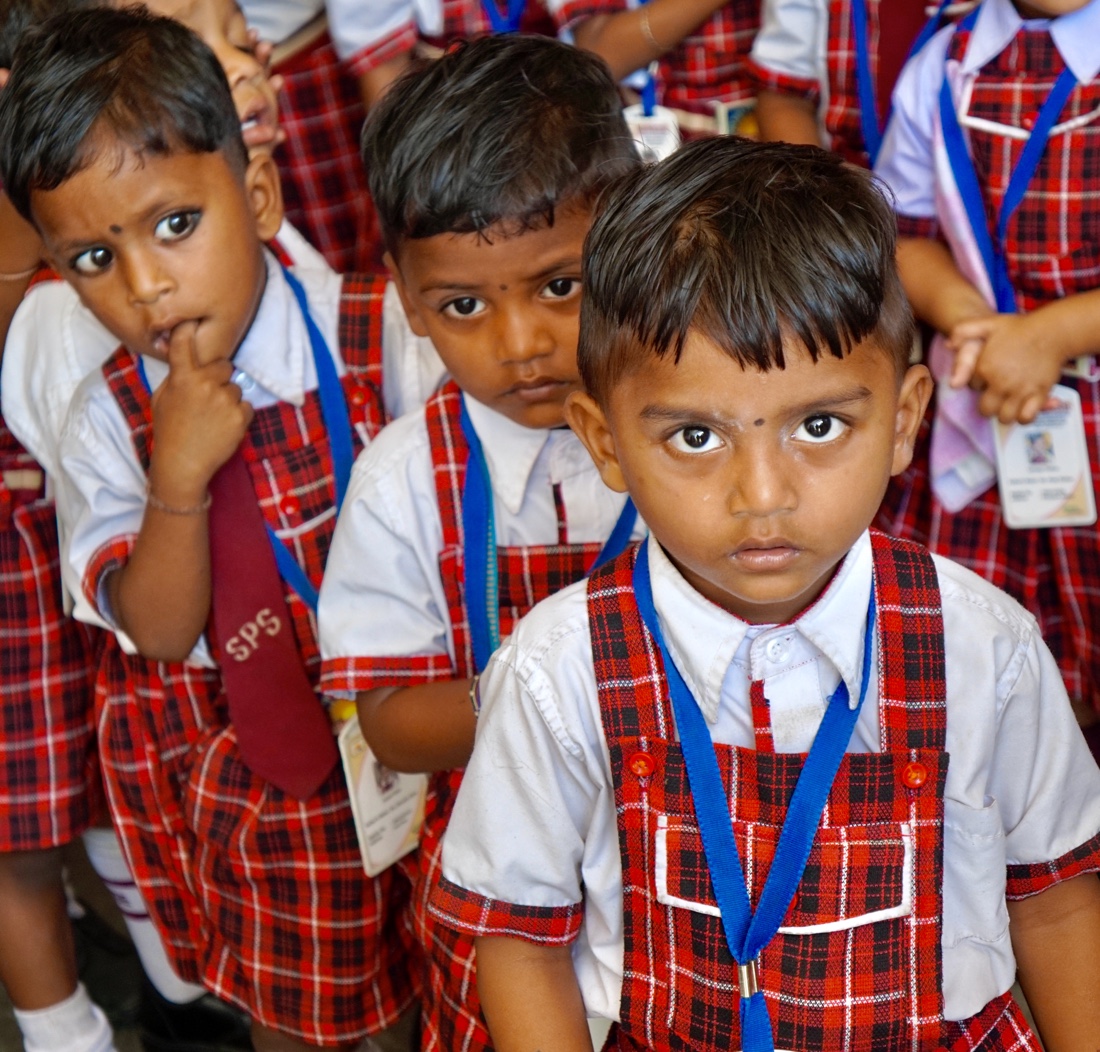 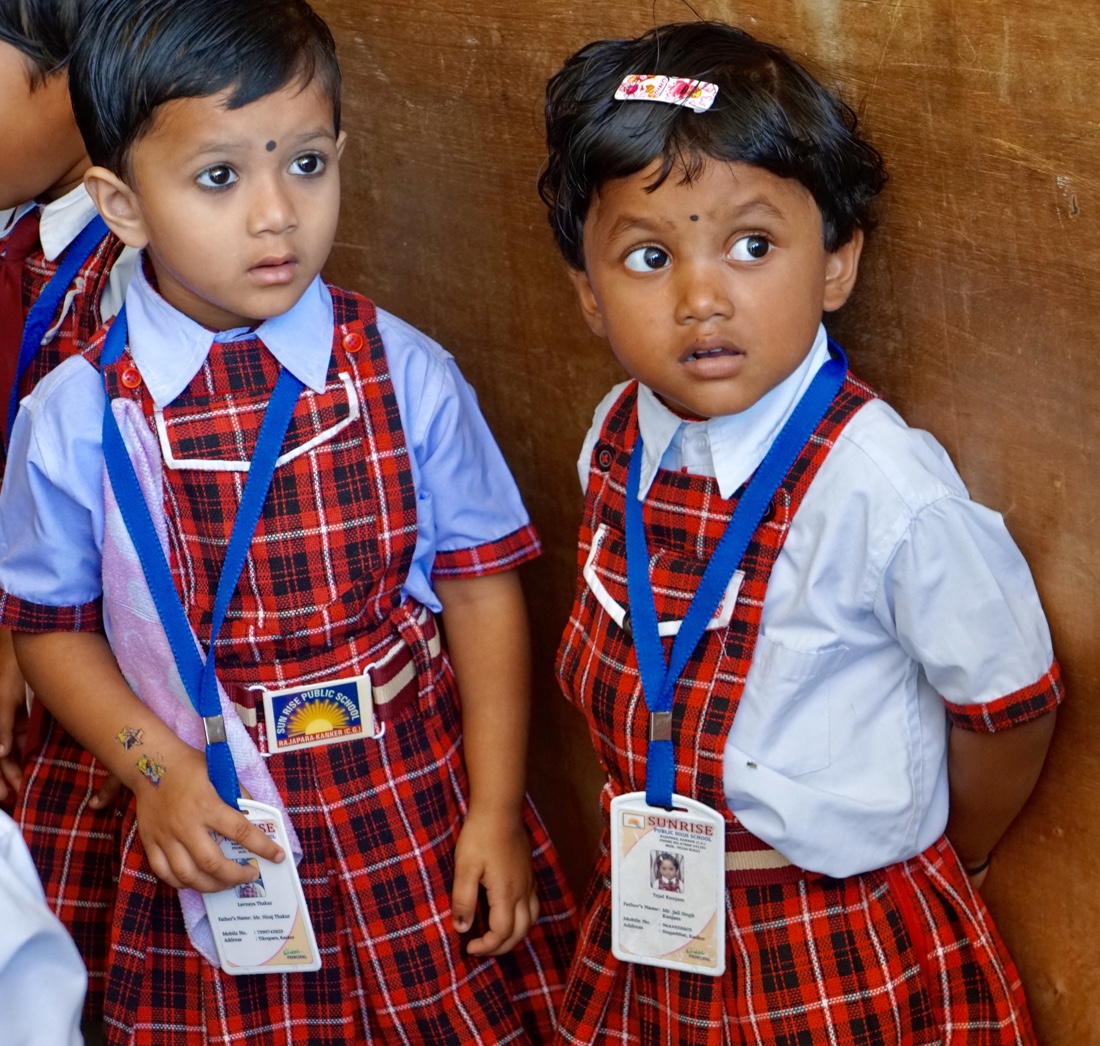 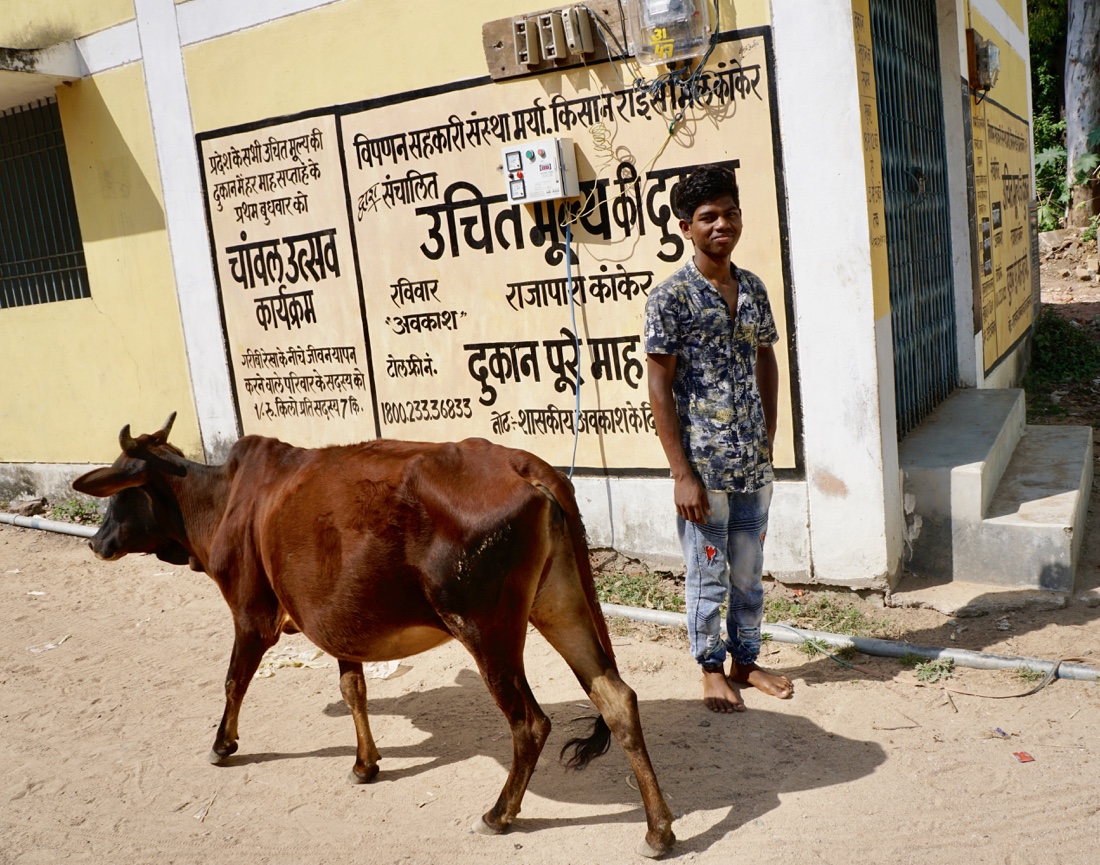
Afterwards we drove up to the top of a mountain to view the city, then to another area, with a temple and a lake from which women were gathering water. The walk down over large, uneven rocks was sufficiently unnerving that I asked for Babbu’s hand. The return, walking uphill, was considerably easier.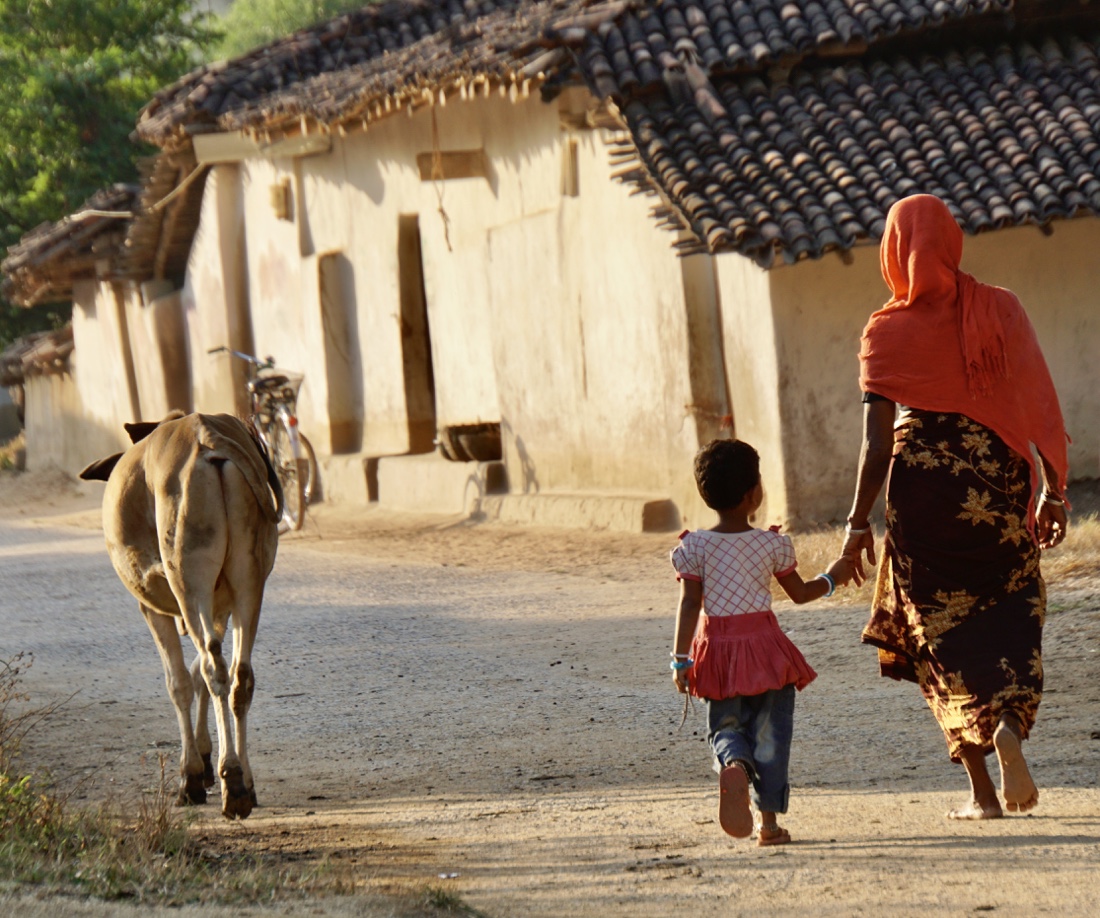 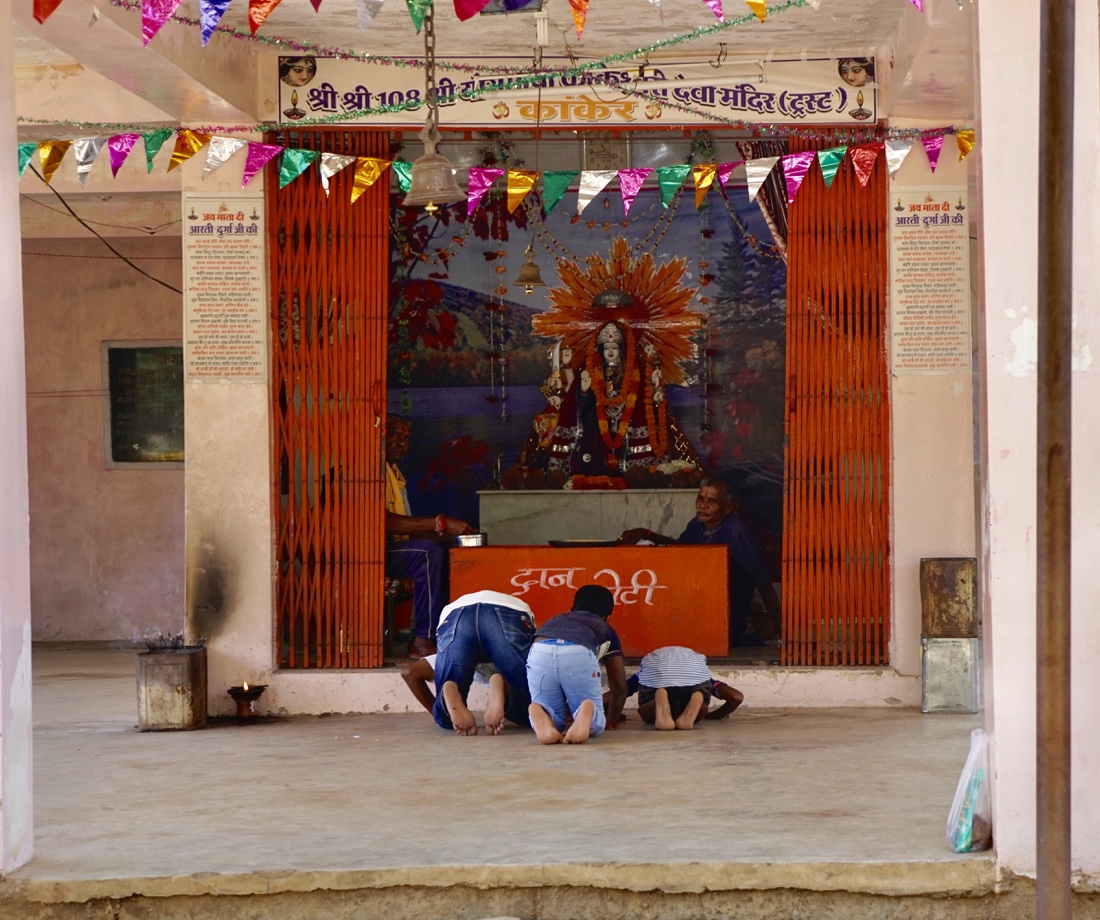 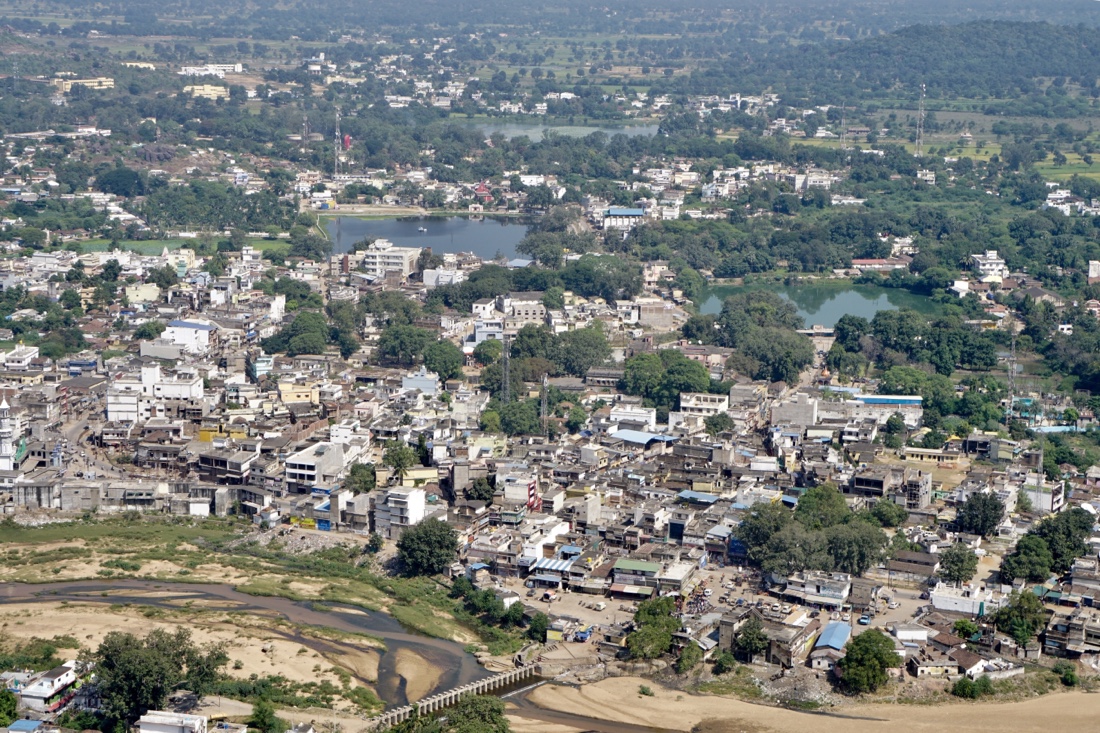 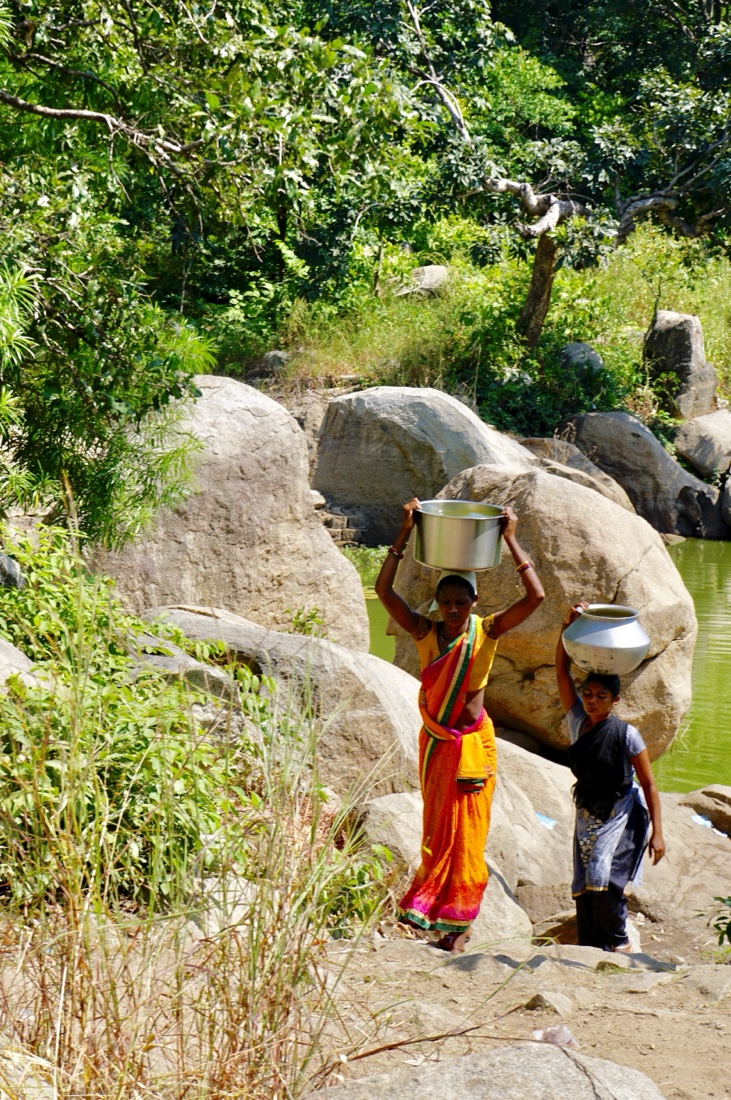
After lunch back at the palace and a rest, we drove to an area with rock paintings. Once again, traversing the uneven rocks was a challenge. Tinku found a large, sturdy stick, though, that I used as a walking stick on the way down, which helped a lot. I generally find these ancient paintings to be not all that great or interesting, and this was no exception. The view from the cave was nice, but not worth the trip.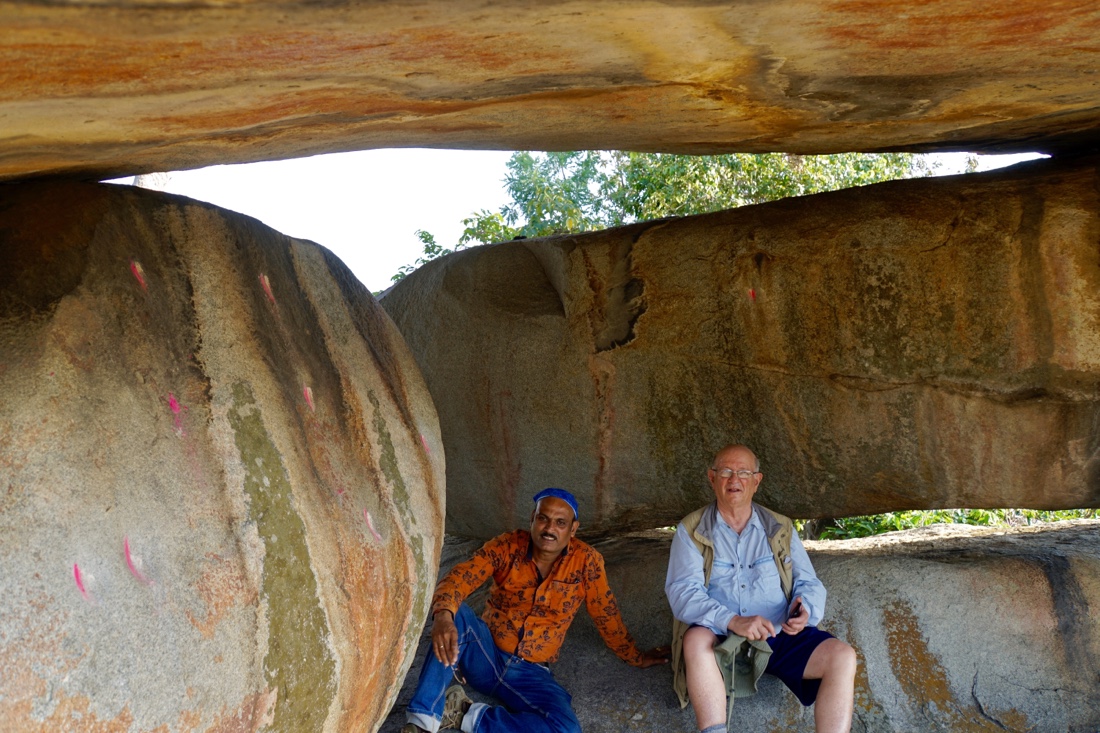 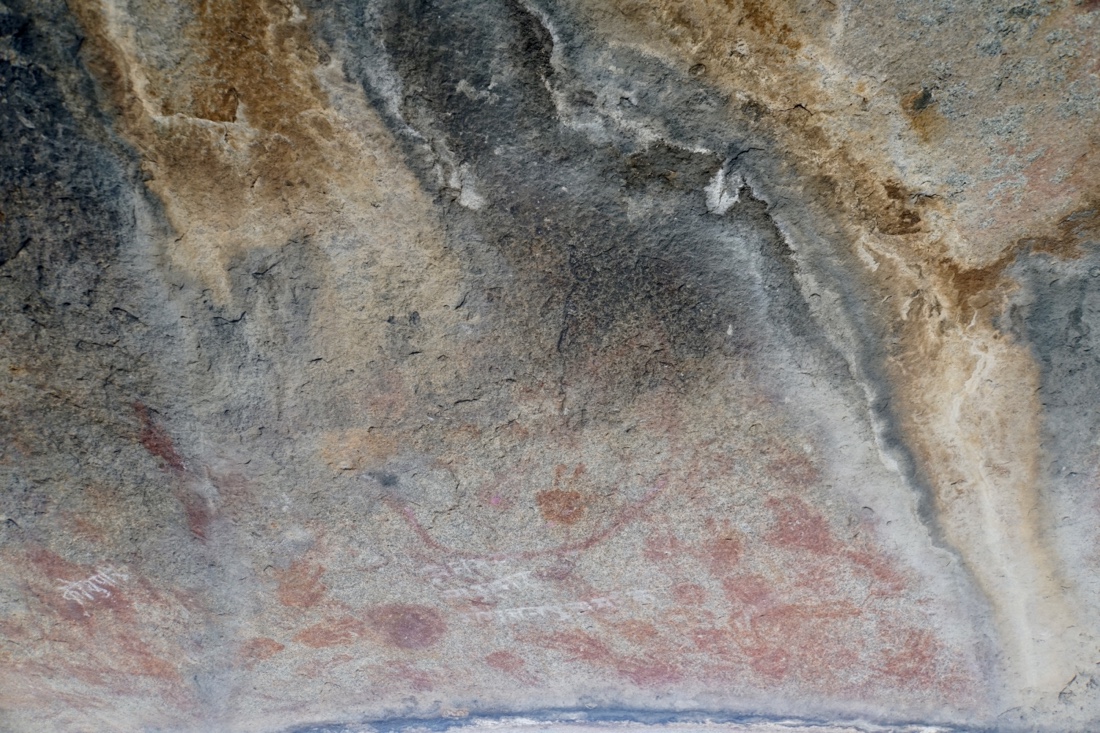
In town on the way back, we encountered some young men who were about to start a game of kabadi, a popular Indian local sport. All of the players wanted to introduce themselves to me and shake my hand. I was given a chair and seated on a stage overlooking the game with the director and other officials.
The game consists of teams of about eight, standing on opposite sides of a dirt field, divided by a white, chalk line. A player from one side runs over to the other team and tries to touch one of their players, typically by kicking them with his foot, and then run back to his side of the line before he can be tackled by the other team. The player who is trying to do this can use only a single breath and repeatedly says a word to show that he is just using one breath. Any unplanned and very unusual treat. 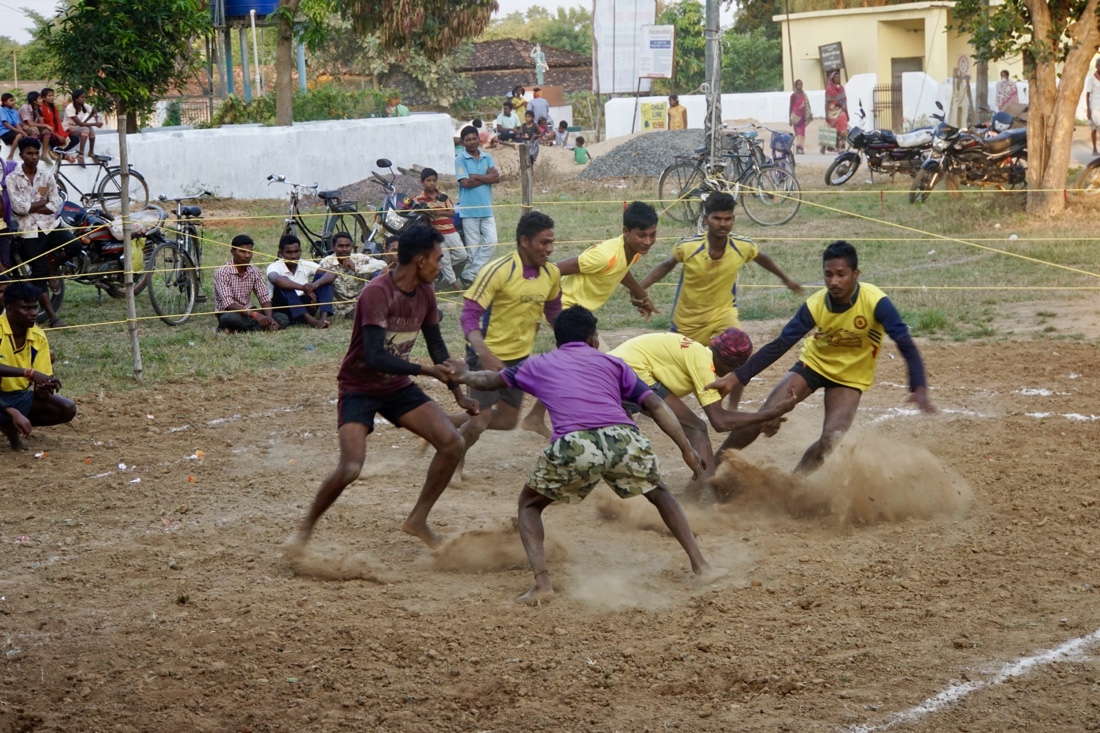 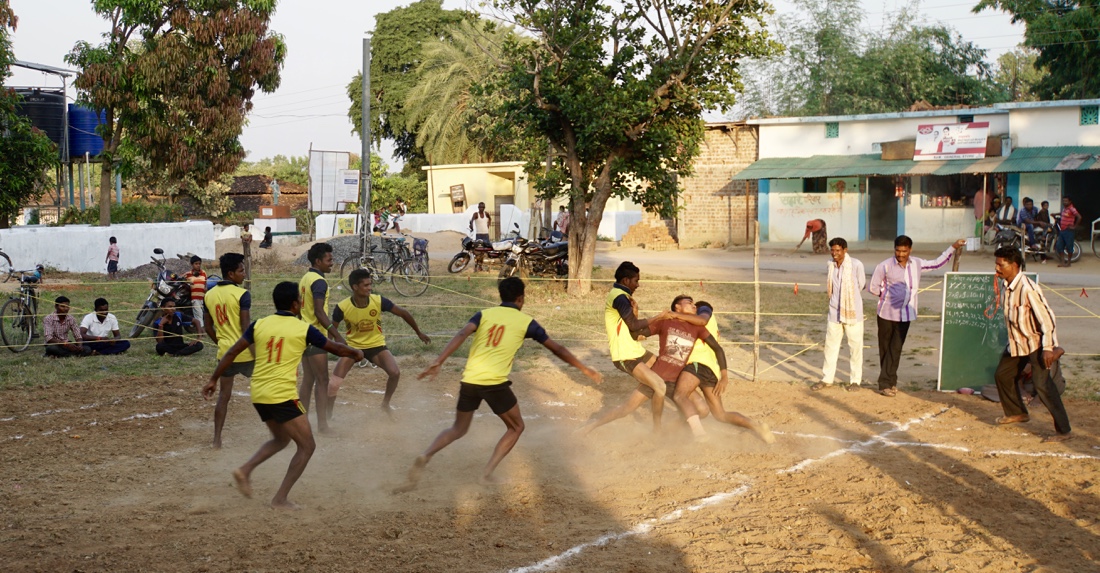 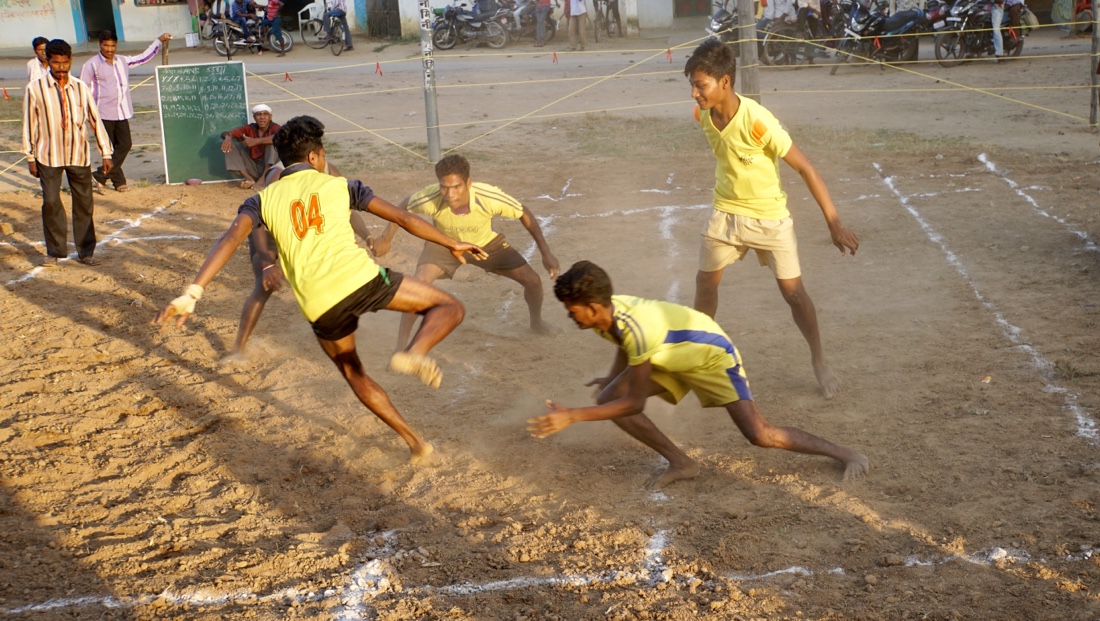 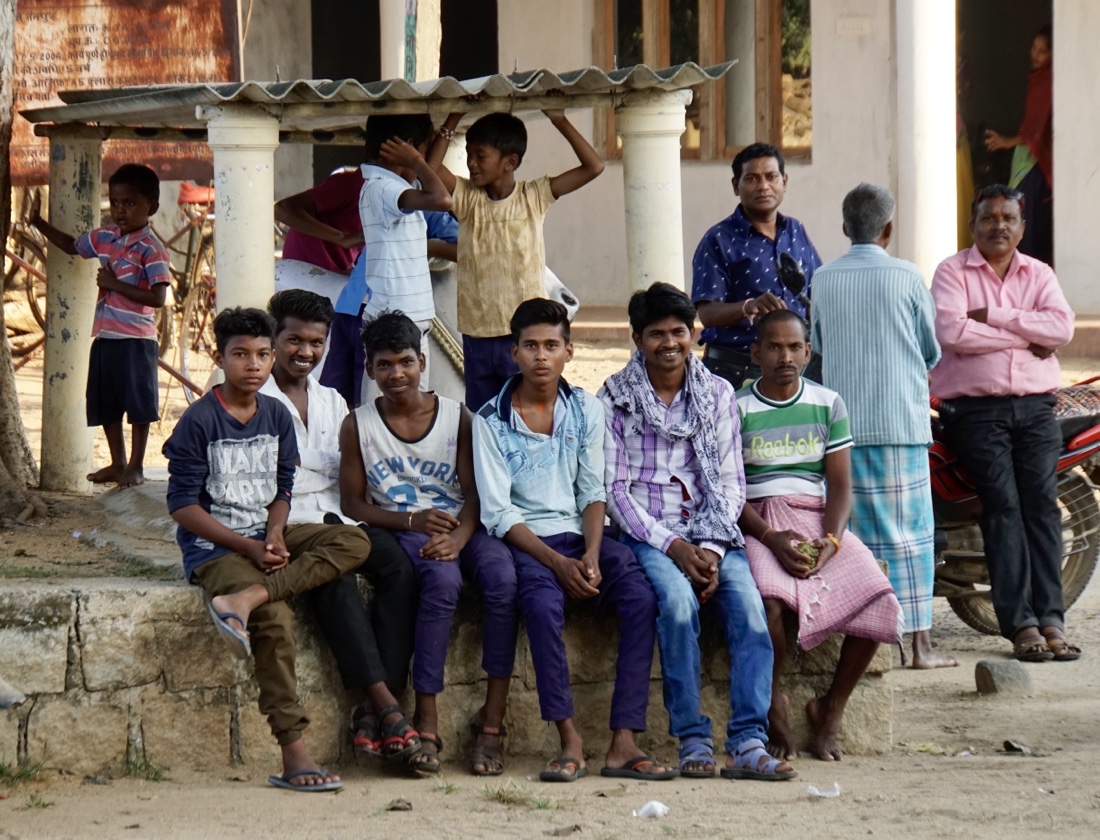 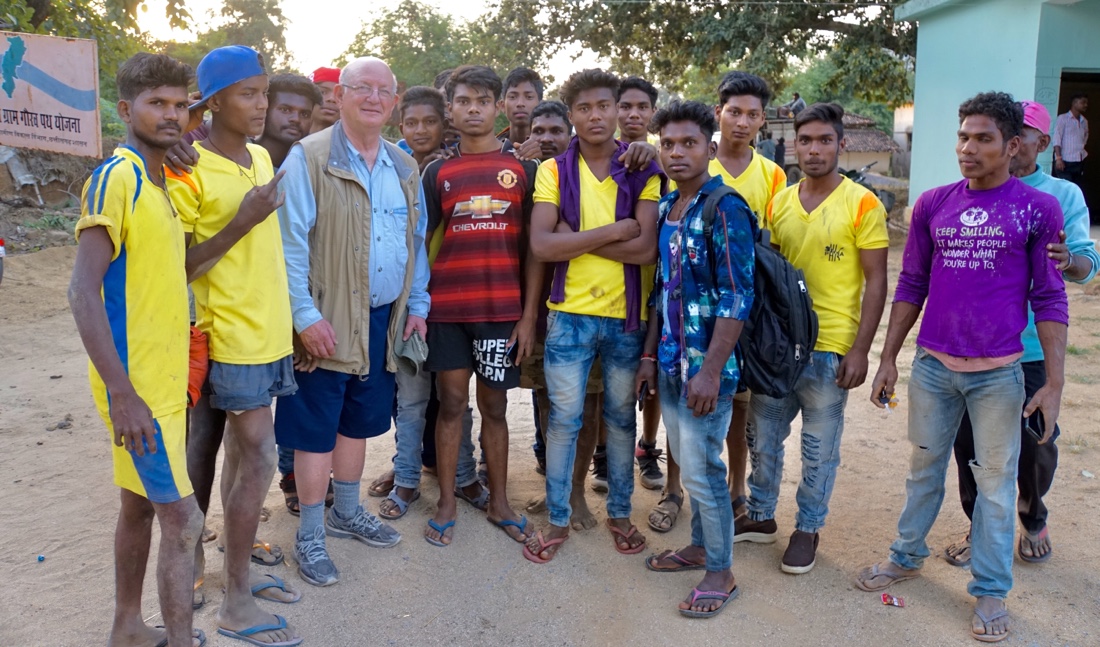
After the game, more handshakes with players and requests to be photographed with them. On the way back to our hotel, we shared the road with herds of cow and goats, and with bicycles. 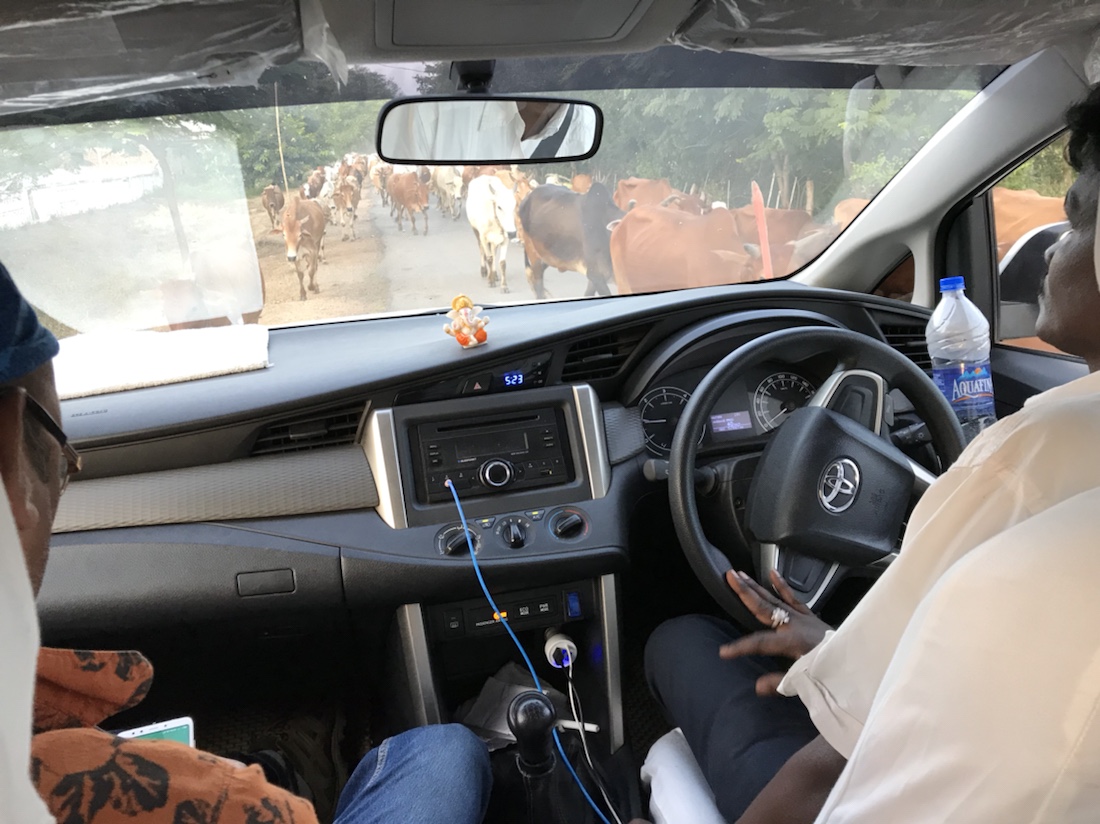
I had a very good dinner conversation with Jai, learning about all the diverse businesses that he is involved in. I also learned about his family history. After independence, the kings were no longer kings, but were encouraged to stay home. Later the kings were stripped of their powers, but invited to remain as heads of their villages. Most agreed to do that, but not Jay’s family. His father did not run for election, as most kings did. They did not want to get involved in corruption or beurocracy. Jay no longer has particular governmental functions, but the advice of the family is widely sought by people in the area and they are asked, to come to officiate at ceremonial occasions. All of this takes quite a bit of time, but the family is happy to do it, and supports the community in other charitable ways as well.
Jai’s older brother, Jolly, returned from Delhi and joined us. He was friendly, but very different from Jai. Jai is debonair, dapper and sophisticated. Jolly is chubby (look who is talking about chubby here) and appears much simpler. He’s in charge of their agricultural activities and of food for the hotel. Biblically speaking, Jolly seemed to me the Cain to Jai’s Abel. Admittedly, my assessment is based on rather scanty evidence.
The palace here is divided into two wings, one with rooms for guests and the other occupied by Jay, his brother, Jolly, their mother and families. It is quite an interesting and unique set-up and an interesting place to spend a couple days.
We had heard earlier in the day that there was to be a dance contest at the place that we went to. I was not scheduled to see this and it was late at night, starting around nine, but I convinced Babbu to take me. Before getting to that festival we came a spot where dancers were doing religious Bengali dances, whirling bowls of smoke in each hand. This was fun to watch and provided very good photo ops. 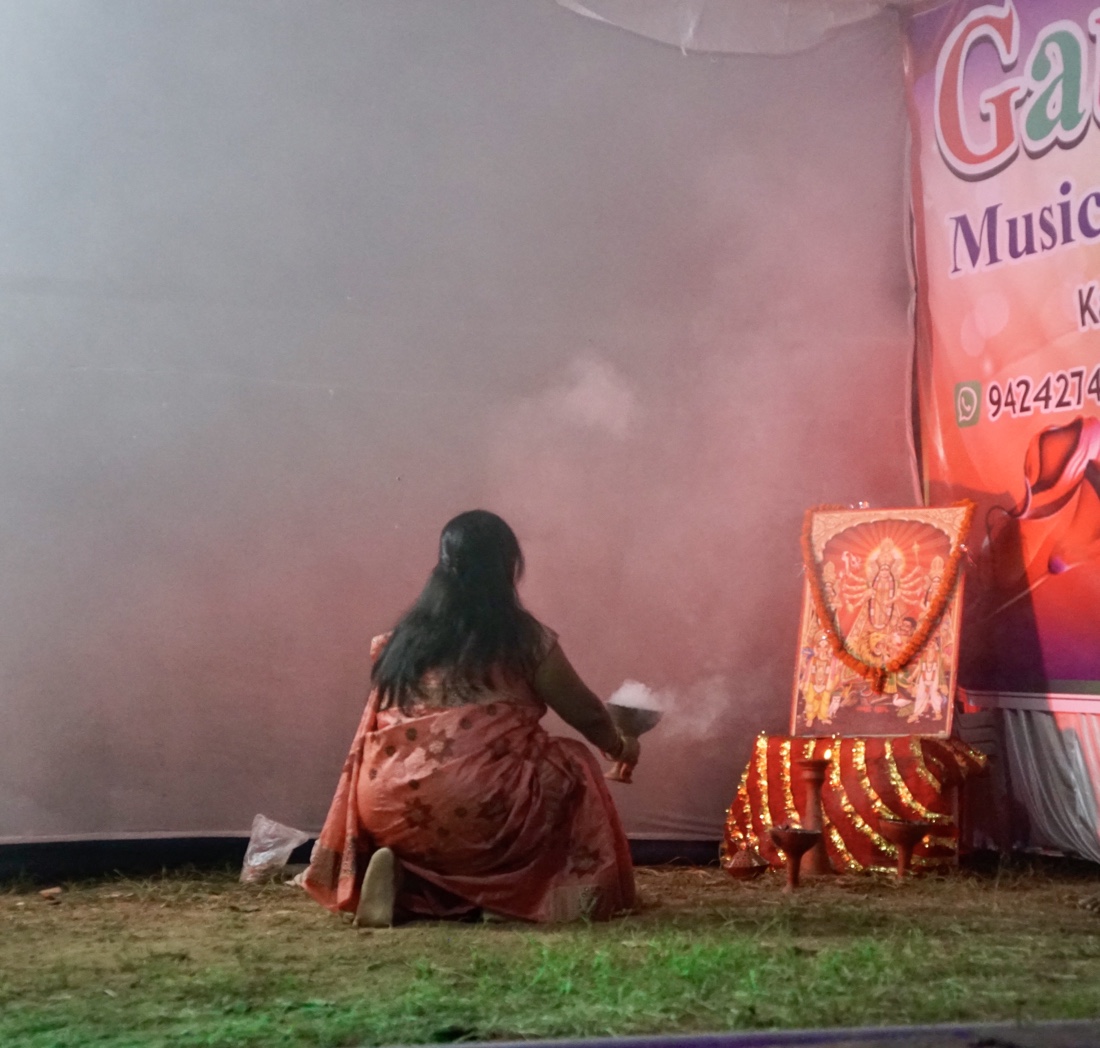 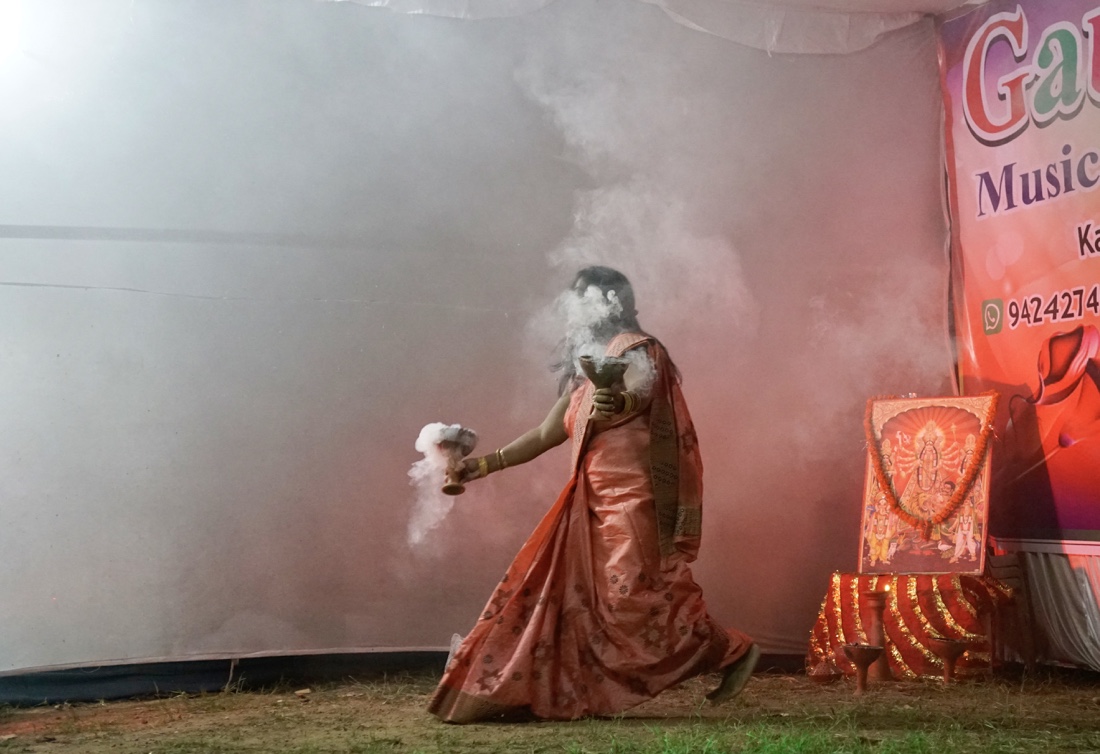 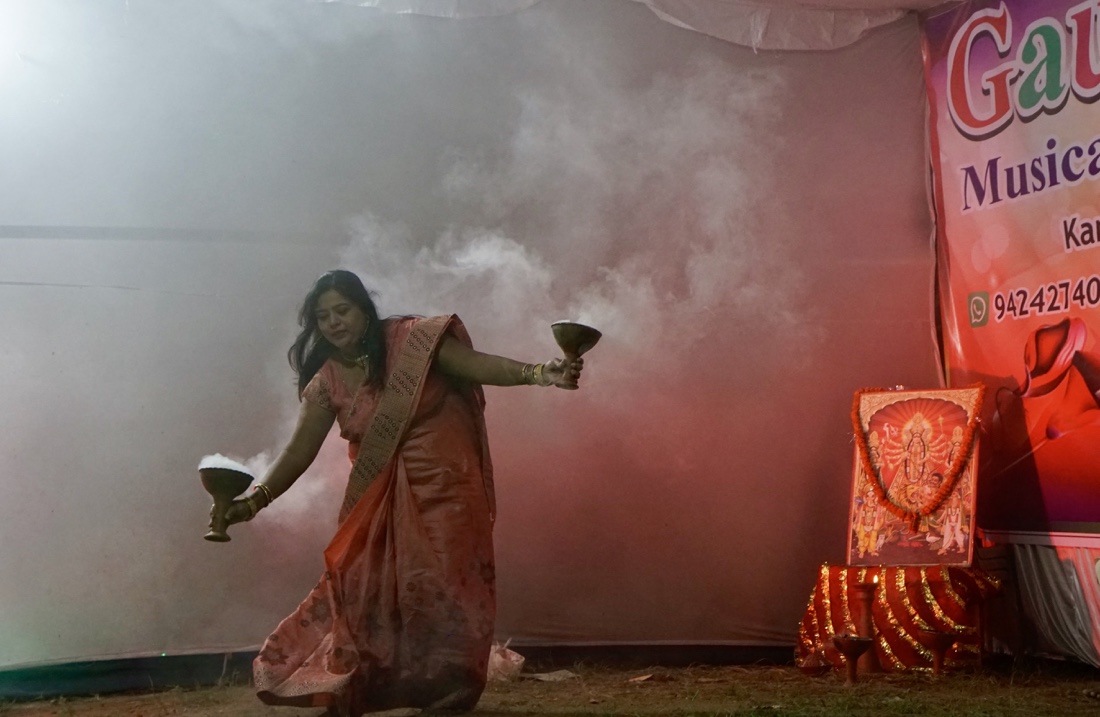 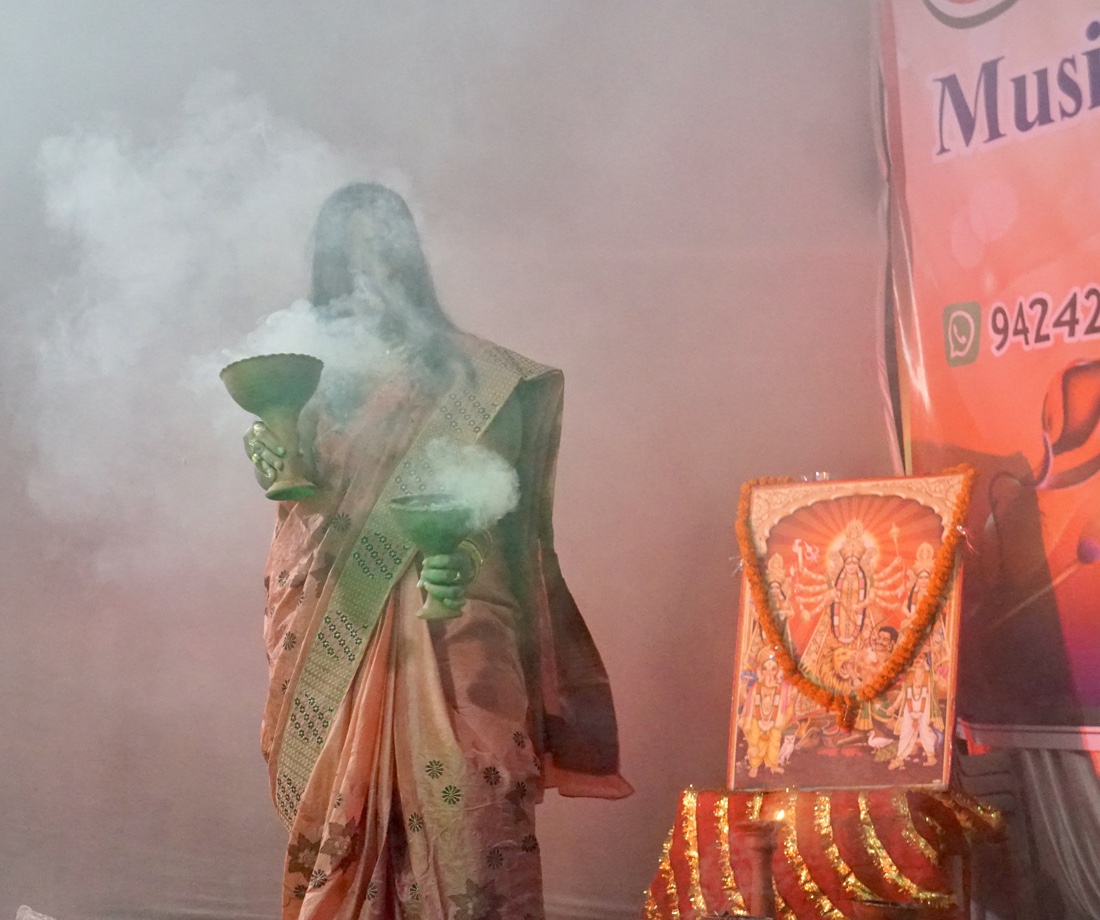
The dance contest we went to featured children performing their routines in front of a huge crowd on a very large stage, with loud music blaring out. There was a table at which five judges were seated. One of the judges, on seeing me, instructed those sitting behind her to give up a chair and she seats me at the judges table. At one point, the MC makes a joke about me being up there as a judge that I can’t understand, but it amuses everyone. 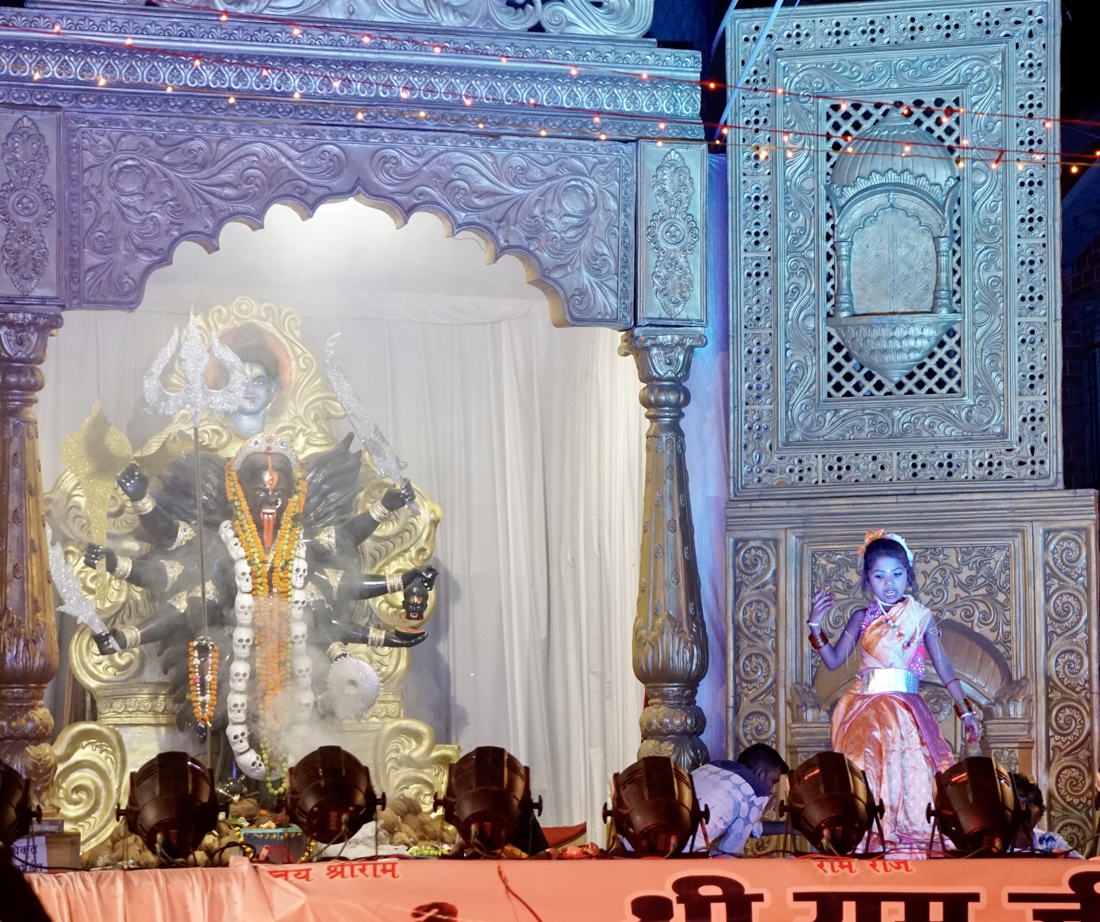
On the way home, we stopped at Babbu’s house, where his wife, kids and neighbors are doing one of the dances that was done at the palace last night. Babbu tries to convince me to join in, but I tell him that I only judge dances, I don’t do them. But Babbu’s wife convinces me to join-in, and it proves to be quite fun.
Today proves that there are some advantages to an old fart traveling alone. None of the highlights of my day, visiting at the school with the teachers, my participation in the kabadi game and my serving as a judge at the dance contest would have occurred if I had been traveling with a group. It always seems to be the case that the highlights of a trip are the unplanned contacts with real people.
One final word. I have not mentioned how much I like the way Indians greet one another, by putting their hands in front of their chest in prayer mode and bowing slightly to the other, saying Namaste. It’s really a lovely way to show respect and connect with your fellow human beings. It’s a way of showing respect for the god within each person you encounter
October 15
Up at 3:40 and off at 4:30 to the airport, with my boxed breakfast, for my 6:35 flight to Raipur. On the plane I met an orthopedic surgeon who has relatives in Chicago and come sit there with some frequency. He gave me his card and invited me to call him if I have any problems in Raipur, he seems to be a very adventuresome guy, camps out and goes to see tigers in Khana National Park, bikes around the US, etc. I hope that I will see him in Chicago sometime. Small world.
I am met at the surprisingly modern Raipur airport by somebody from our travel company. He presents me with a shawl and a lei of flowers as a gift and escorts me to my comfortable air conditioned van in which they have set up WiFi for me, so I have already sent several emails, posted to Facebook (9 “likes” in the first ten minutes) and am writing this blog. Pretty amazing,, huh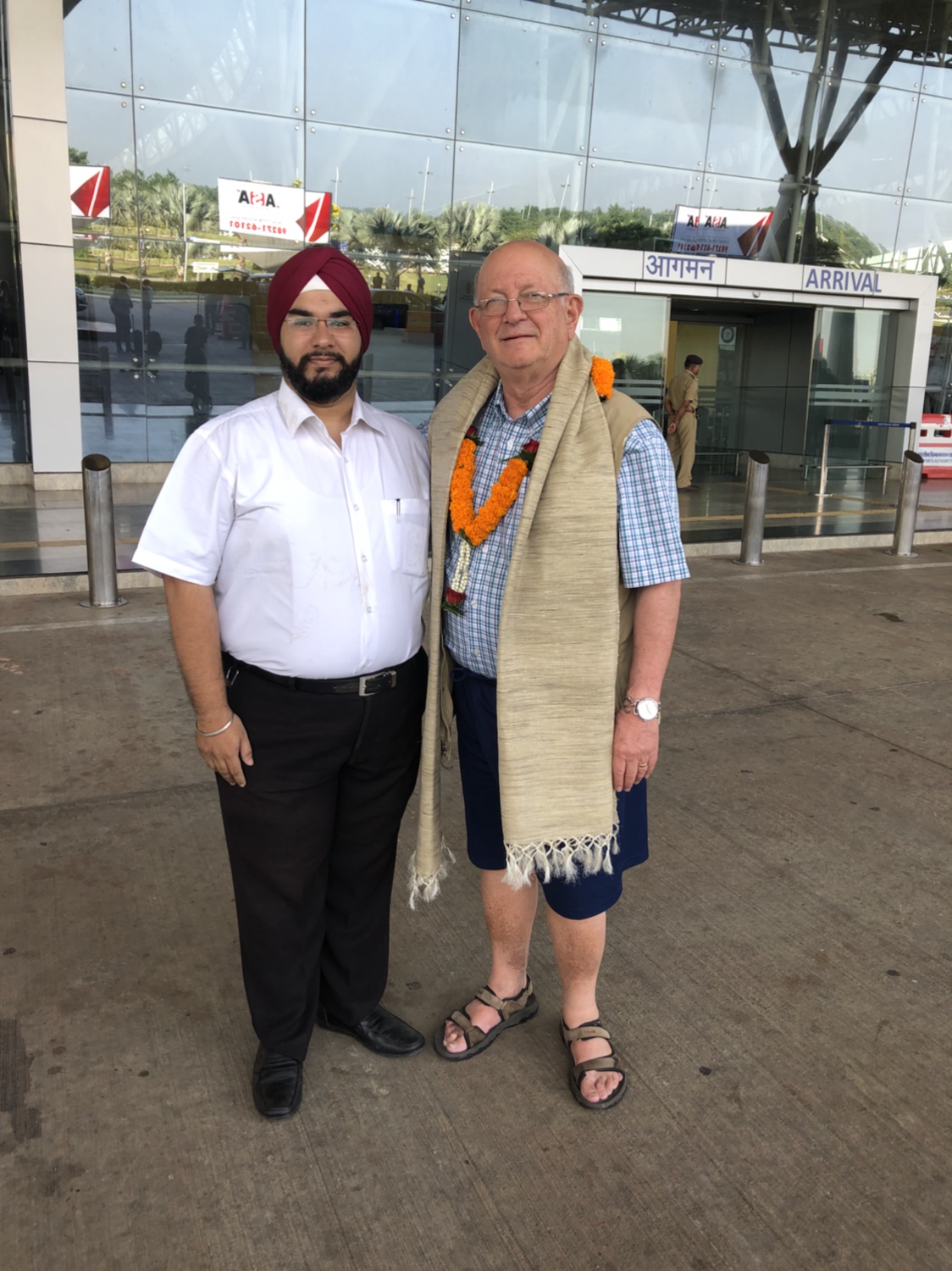
My van also has a basket with tins of various kinds of nuts and an assortment of drinks. There is a place to charge my iPad, and the driver has provided a cord that allows me to connect in order to do that. Much of the road is quite bumpy, but nowhere near as bumpy as the roads open counter and and some other places. Patches of paved highway appear in short stretches. It is impossible to know about the areas that I am passing through because my driver’ English is extremely limited. The two and a half hours of driving is harrowing, but somehow we managed to avoid crashing into oncoming traffic, at least so far, weather seemingly random honking of car horns, or otherwise. There is a lot of color in the dress of people we pass and unlike in Kolkata, we encounter some cows in the streets.
Arrive at Kanker Palace before 11AM. We are not at the Oberoi any more, 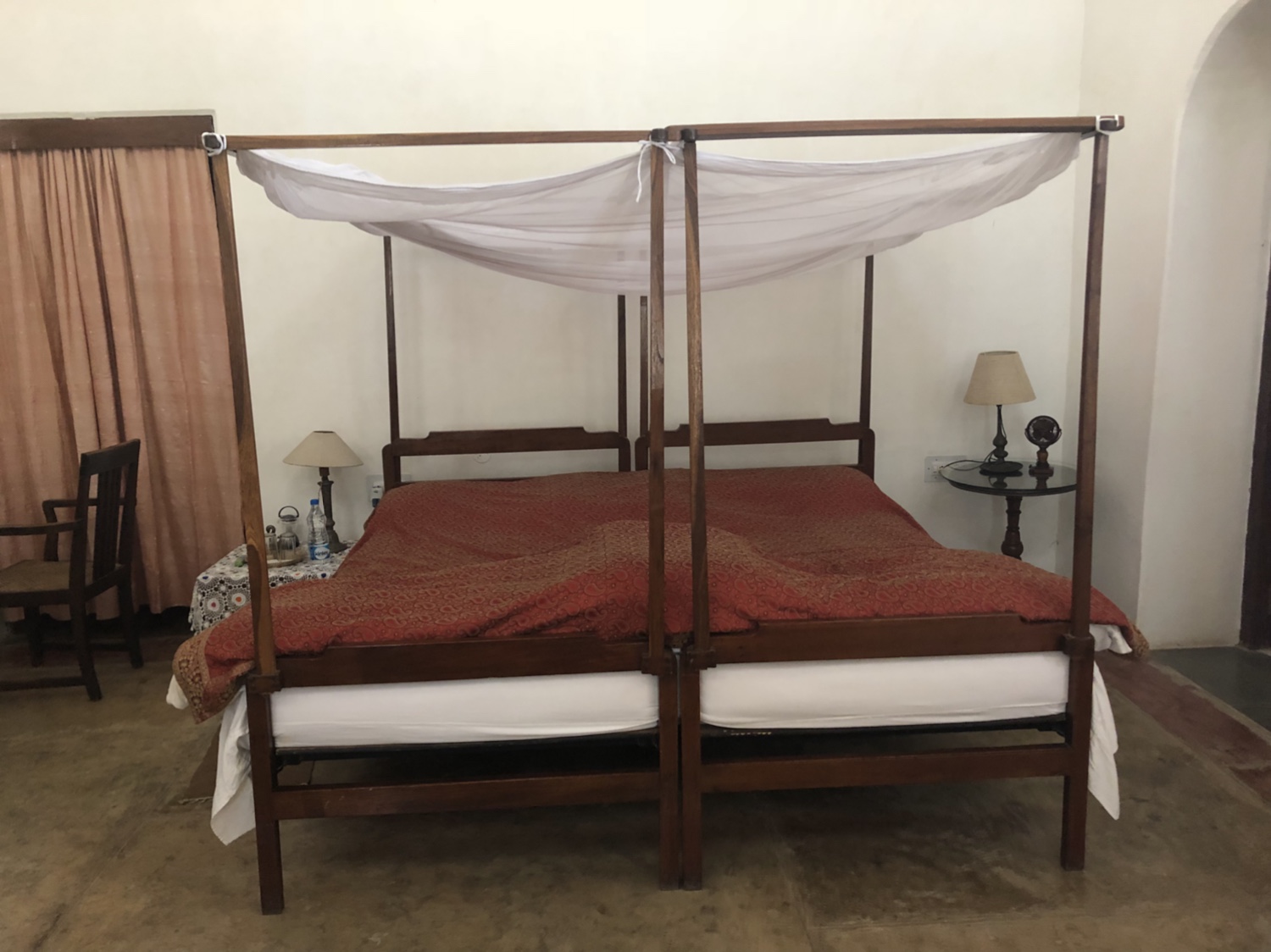
But it will do, fine, for a couple nights. My princely hosts were to have been Suyra Pratap Deo (known as Jolly) and younger brother Ashwini (known as Jai) of the Kanker royal family. Jolly, though, is in Delhi, so it’s just Jai who welcomes me warmly.
Kanker is in Bastar which was once a substantial State and for long India’s largest administrative district at well over 25,000 sq. miles. The majority of its people are still tribal with a unique though rapidly disappearing lifestyle. These in many ways are the “forgotten” people of India, who live on the edge and fight to preserve their traditional lifestyles, though one of the tribes, the Muria, has one of the most progressive systems of bringing up their children – with both boys and girls living in a mixed dormitory starting at puberty, trying out partners until settling on one to marry.
Our guide to visit the Muria, Babbu, is an interesting fellow. He grew up in a Muria village as his grandfather was a Muria chief. His family is of the high Brahmin caste and he is pretty much the tribal guide for the royal family, in whose palace I am staying. His self-taught English is quite adequate, if I remind him (as I do) that he must turn around to speak to be and speak loudly and slowly. Here’s a photo of Babbu and me with some young Muria tribespeople.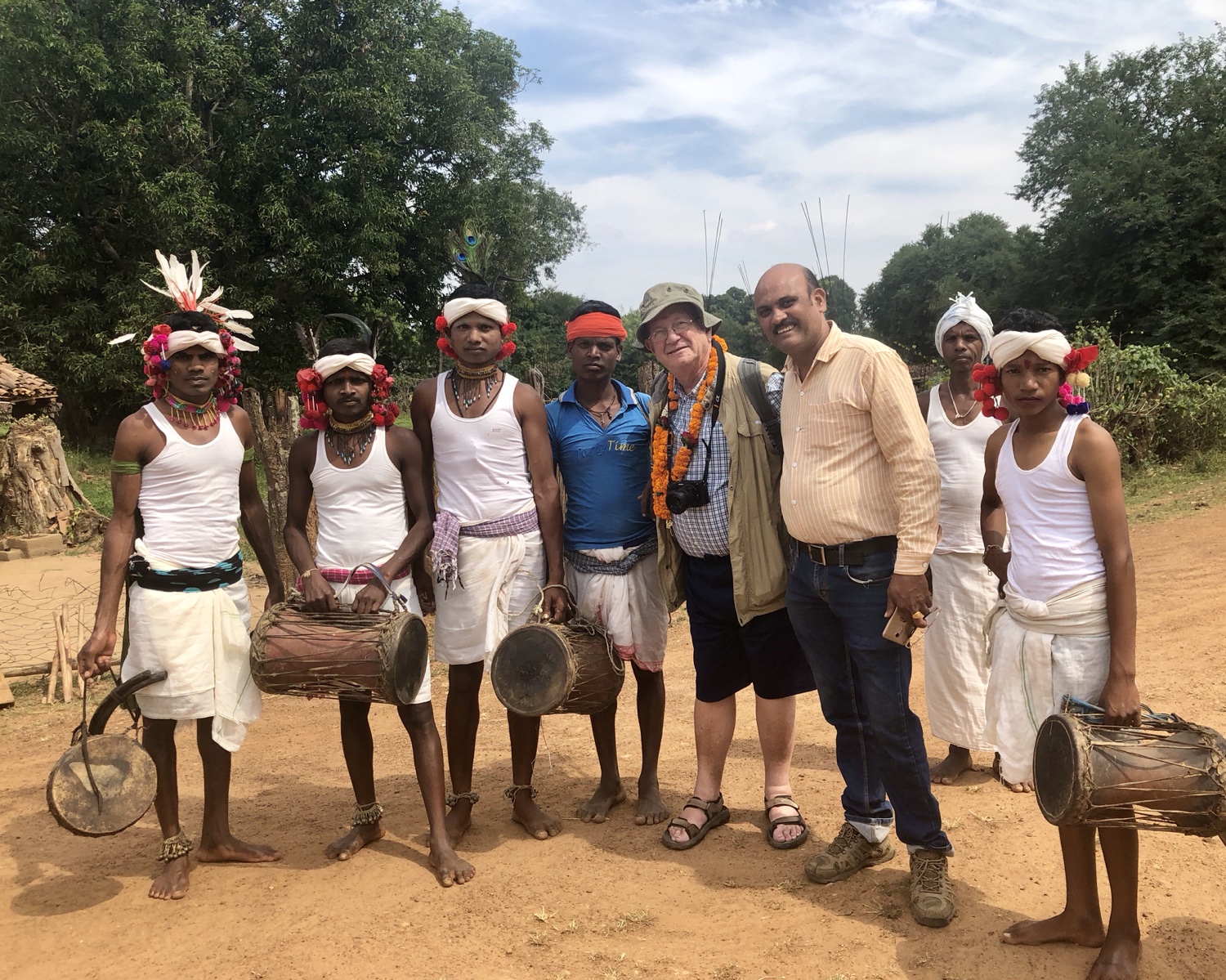
We are the first to arrive at the village, before a group of about eight French-speaking people, who are also staying at the Kanker Palace. Here are some of the Muria, including several of some dances that they performed for us.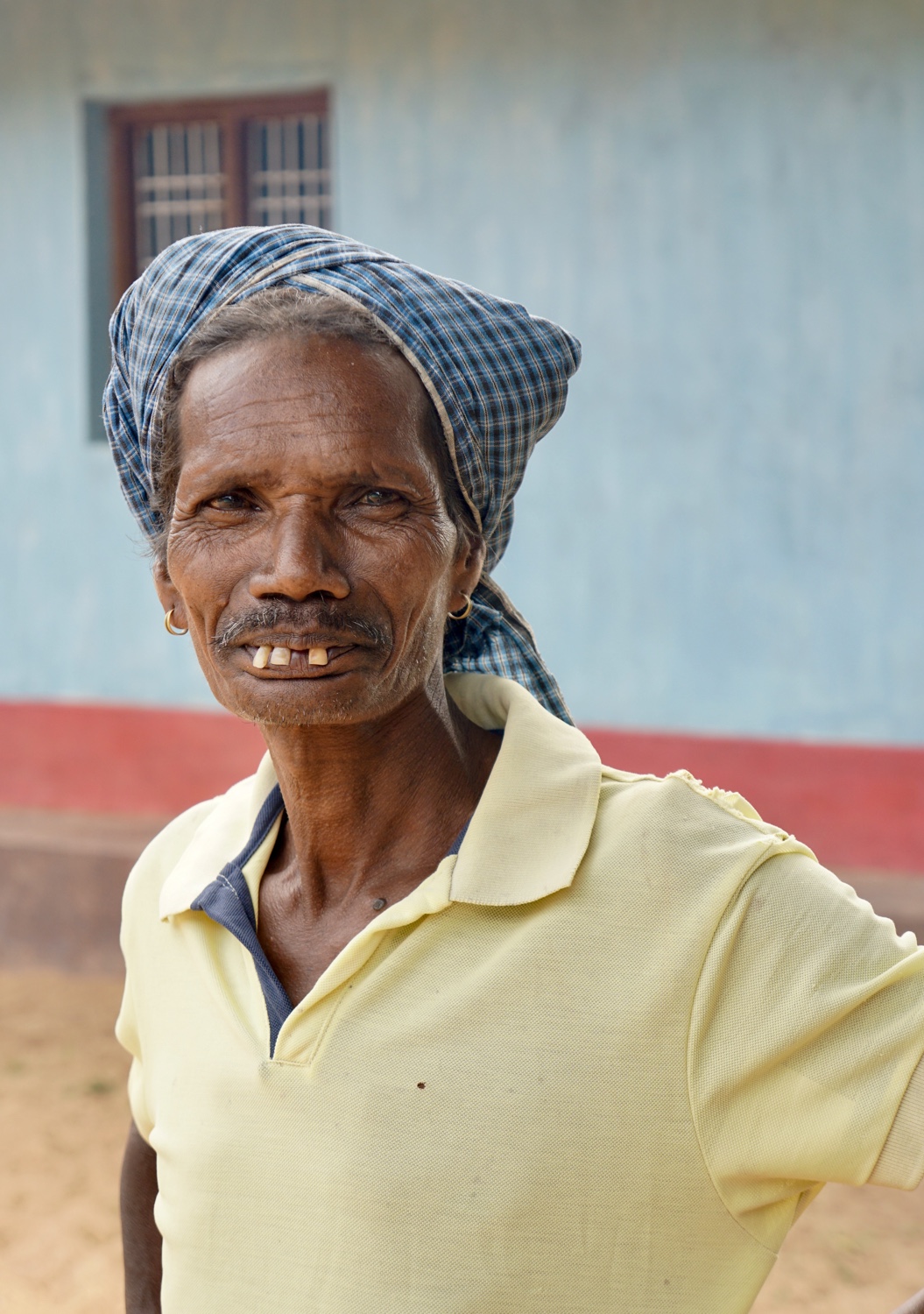 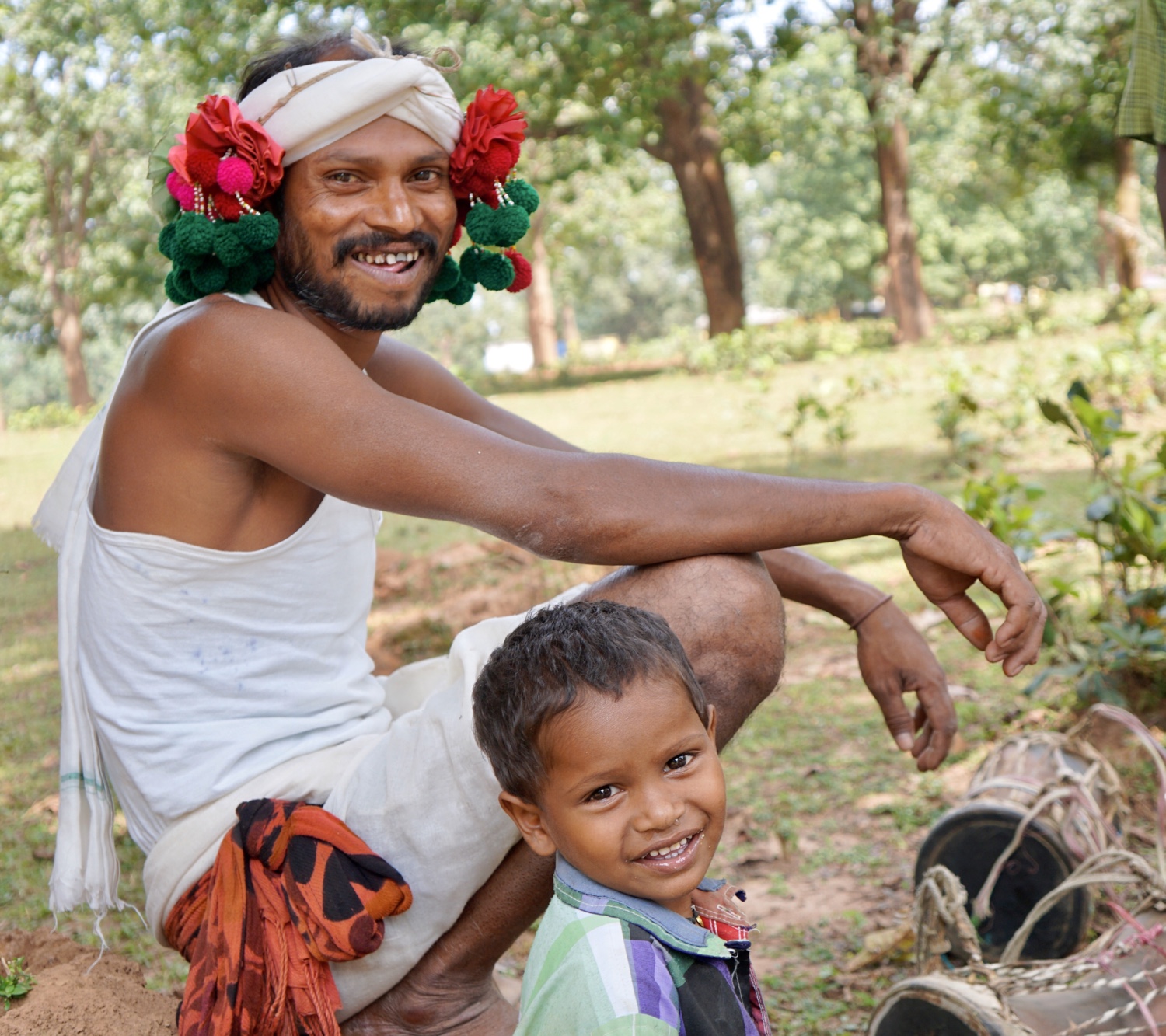 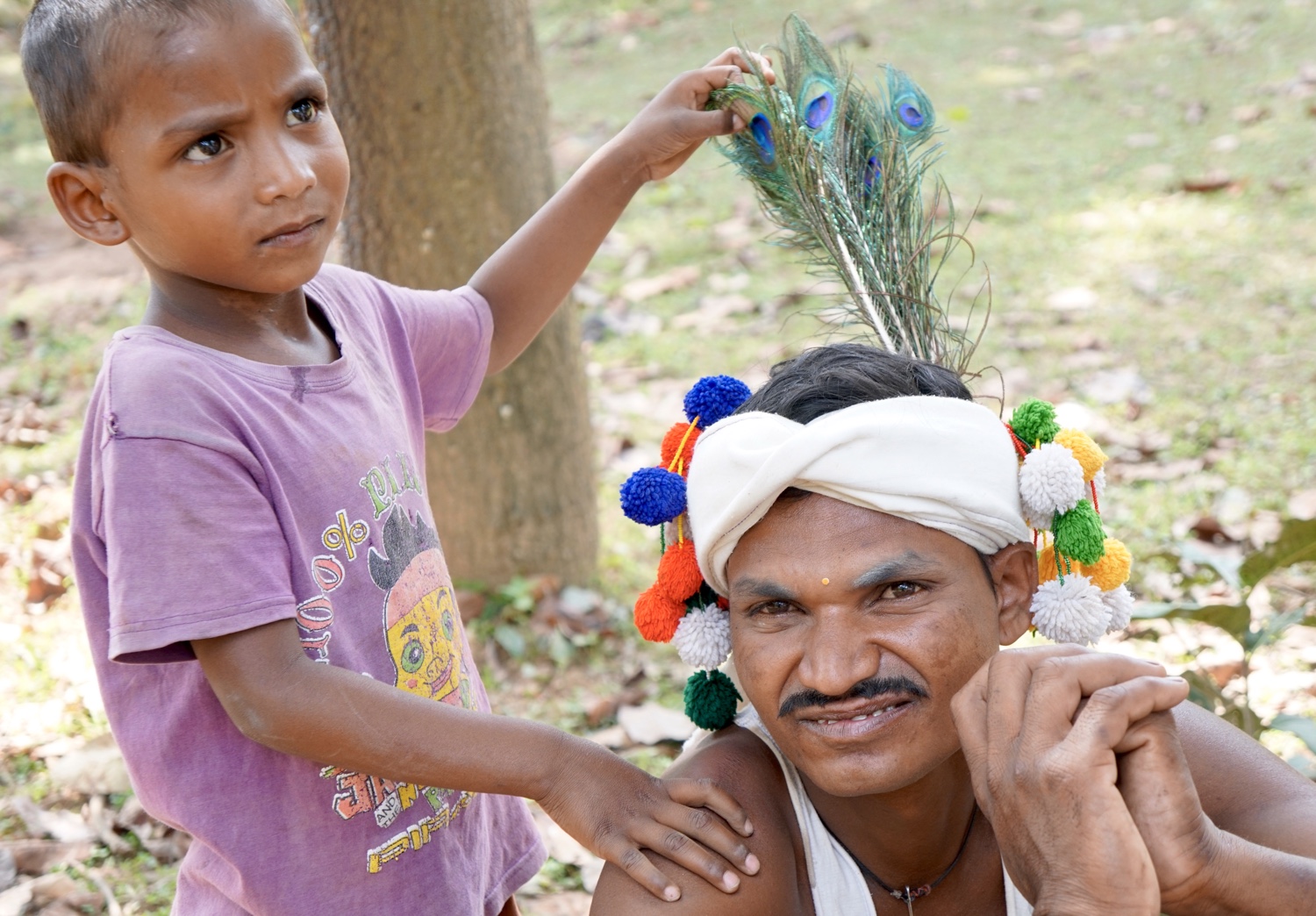 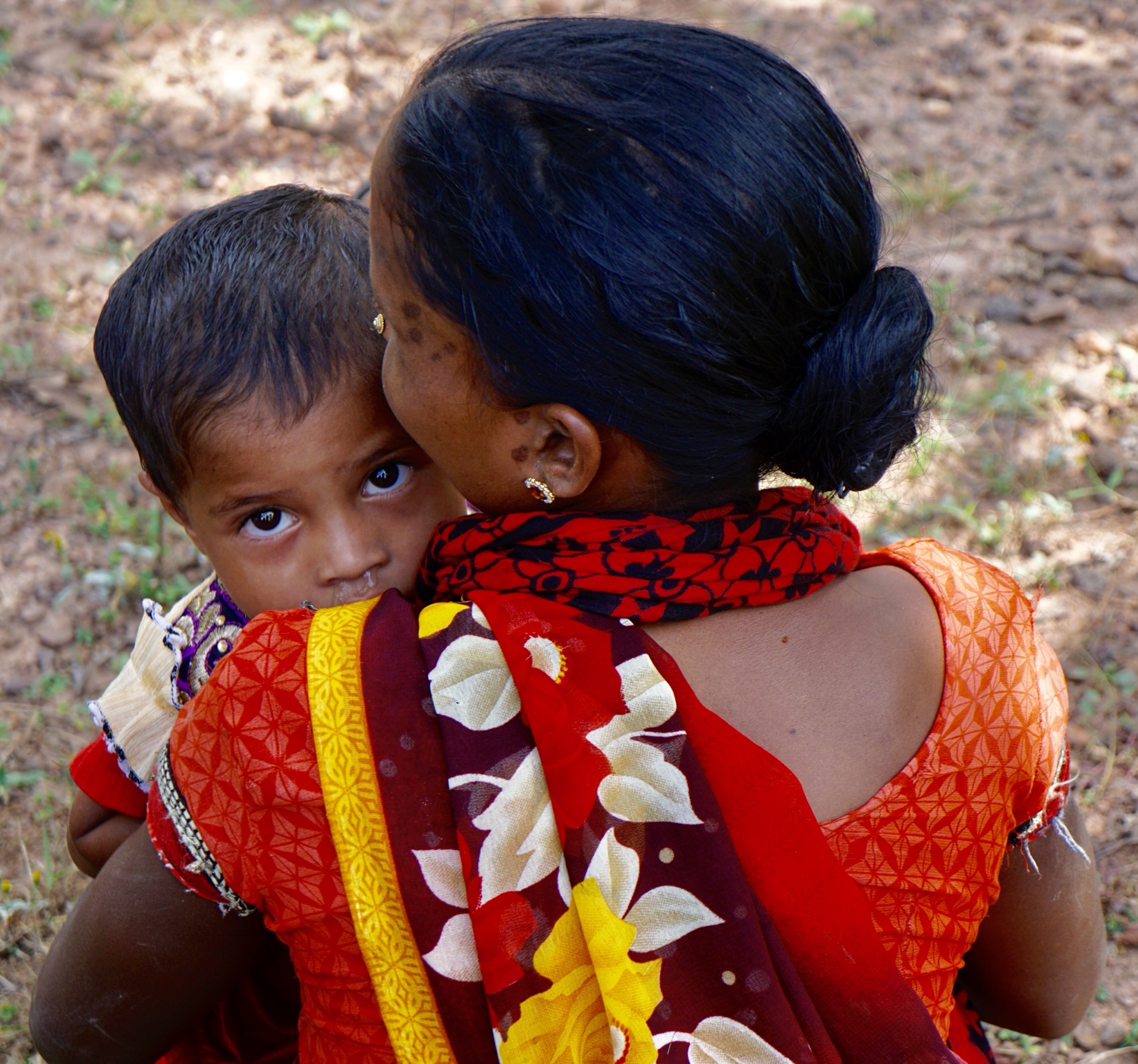  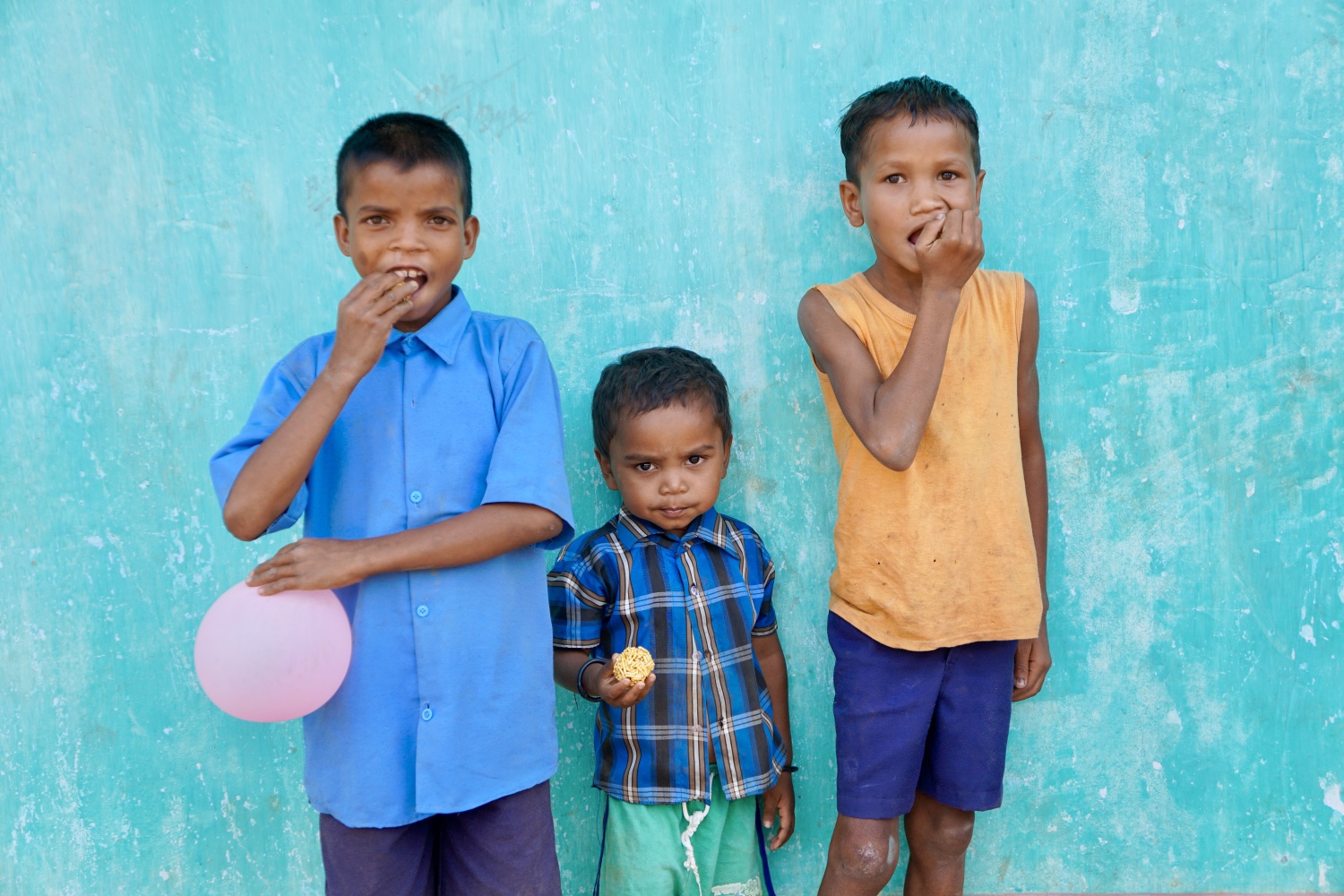 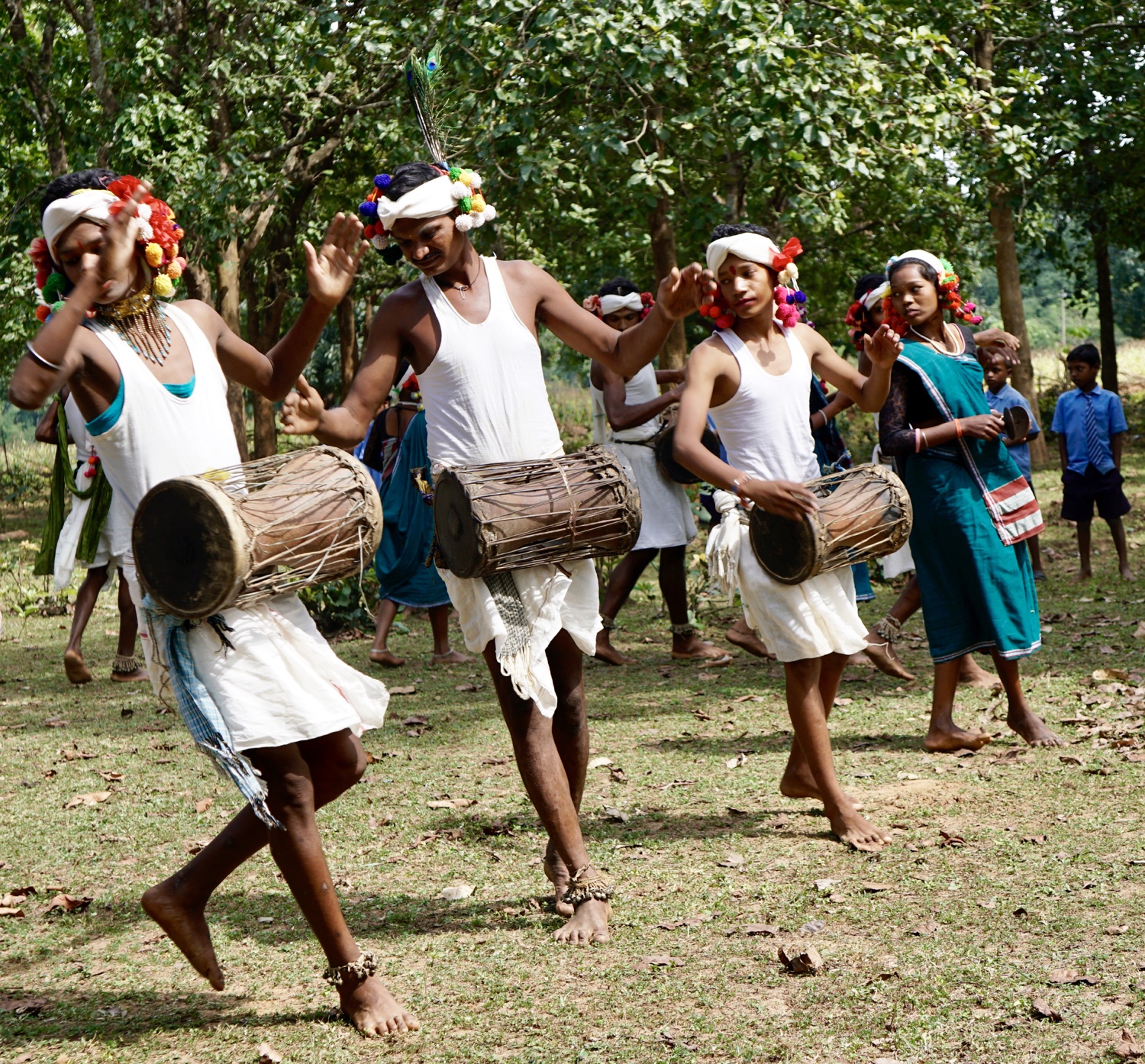 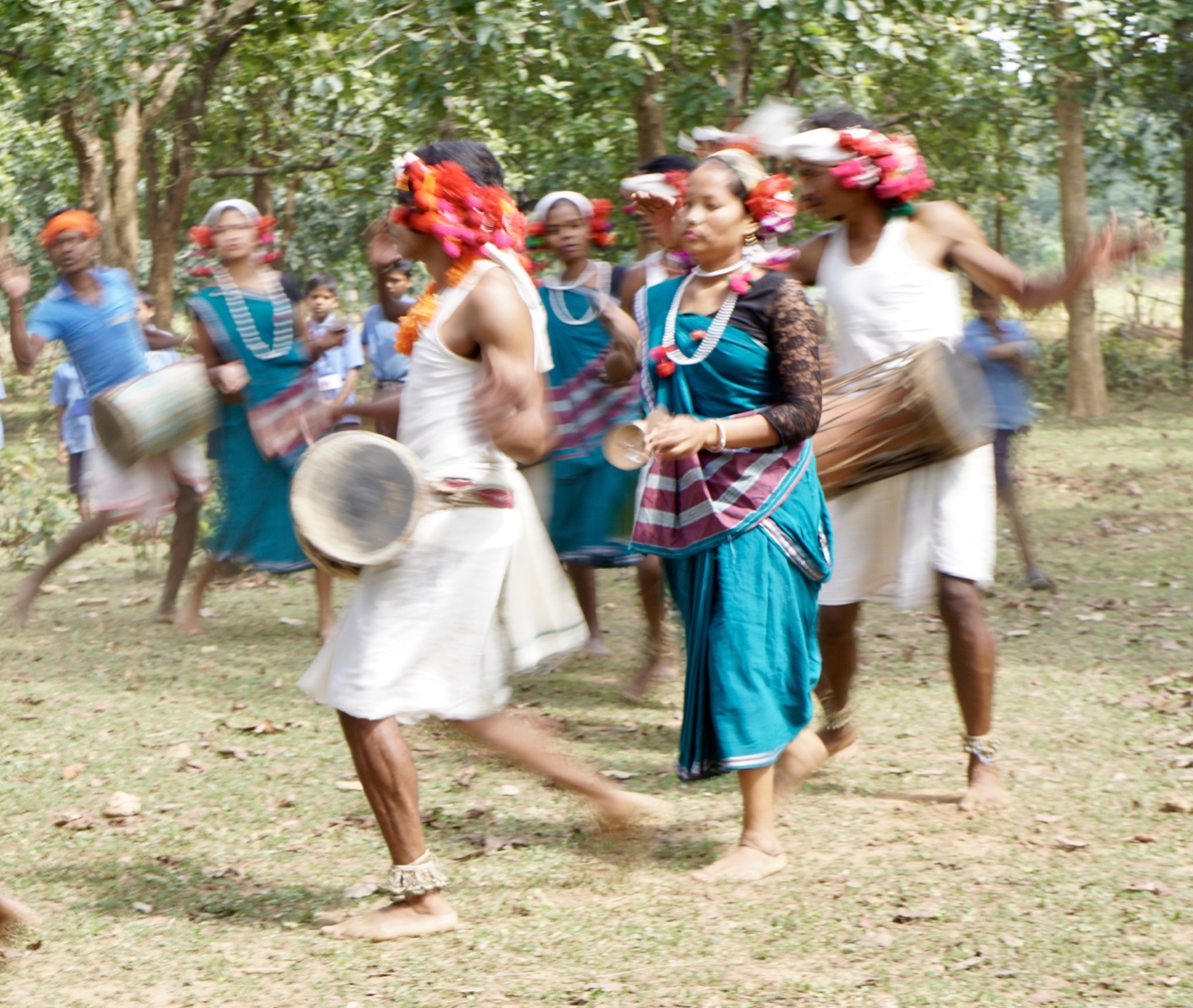 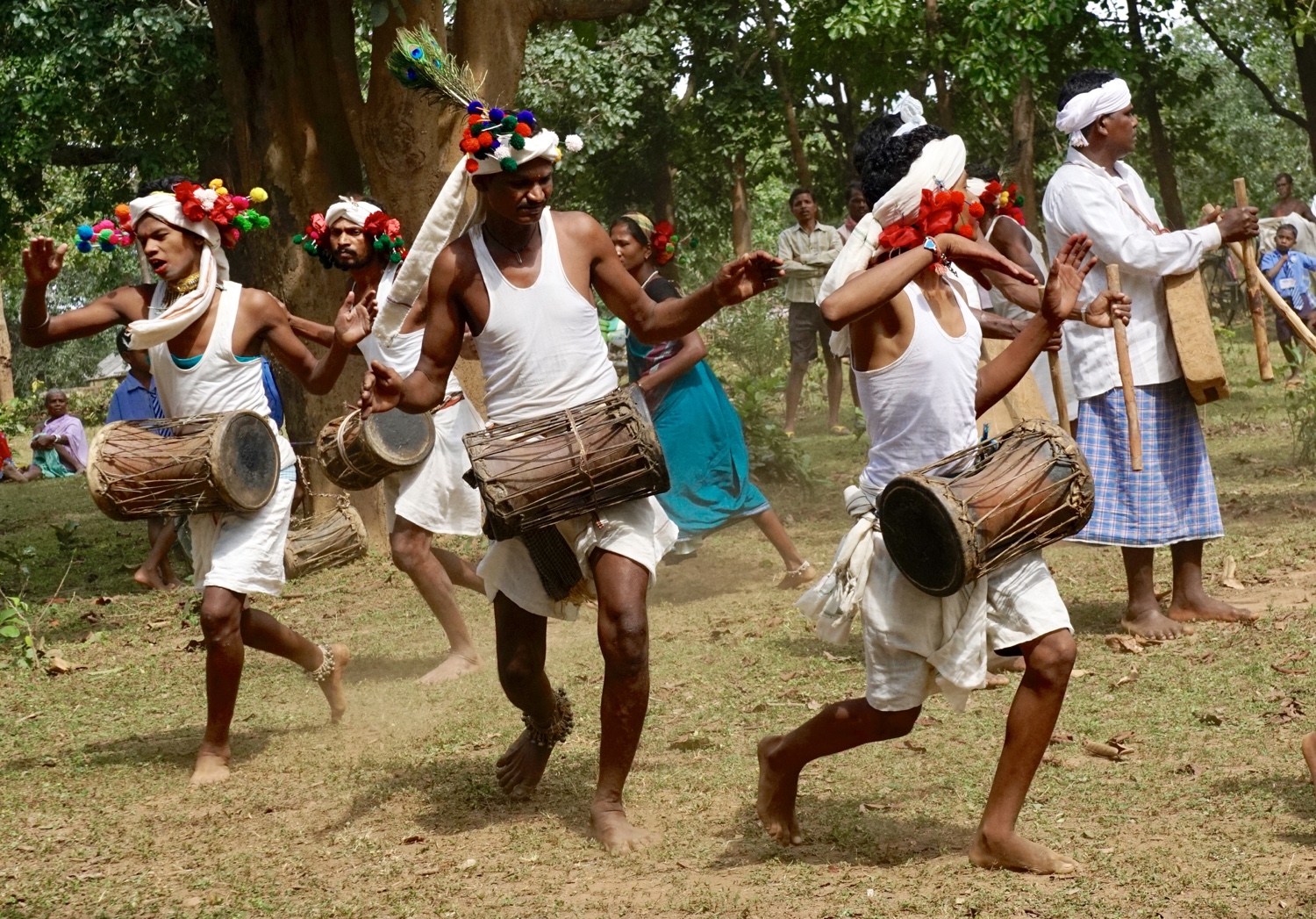 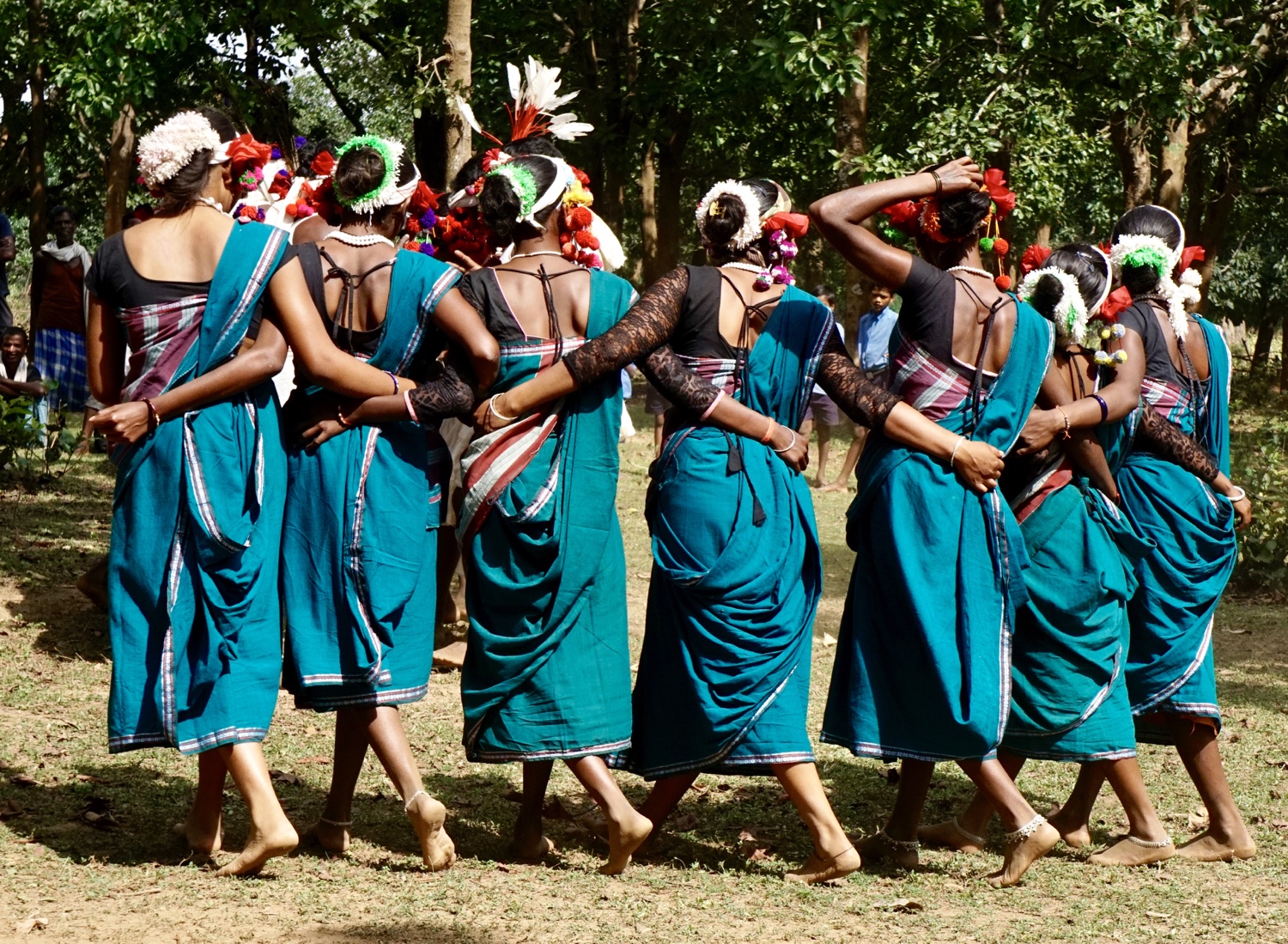 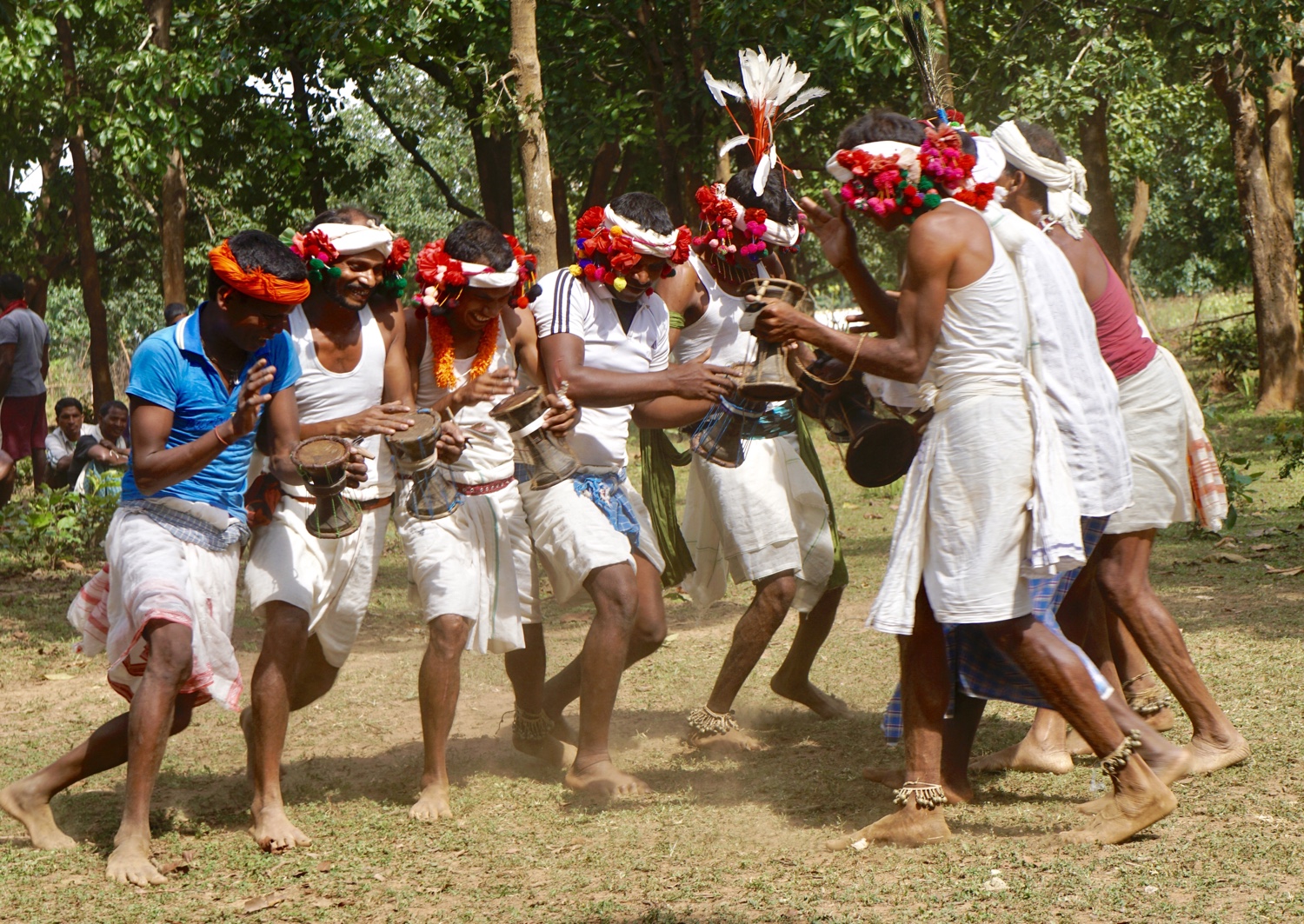
After the dancing a rather good meal was prepared for us, served on plates and bowls made from leaves.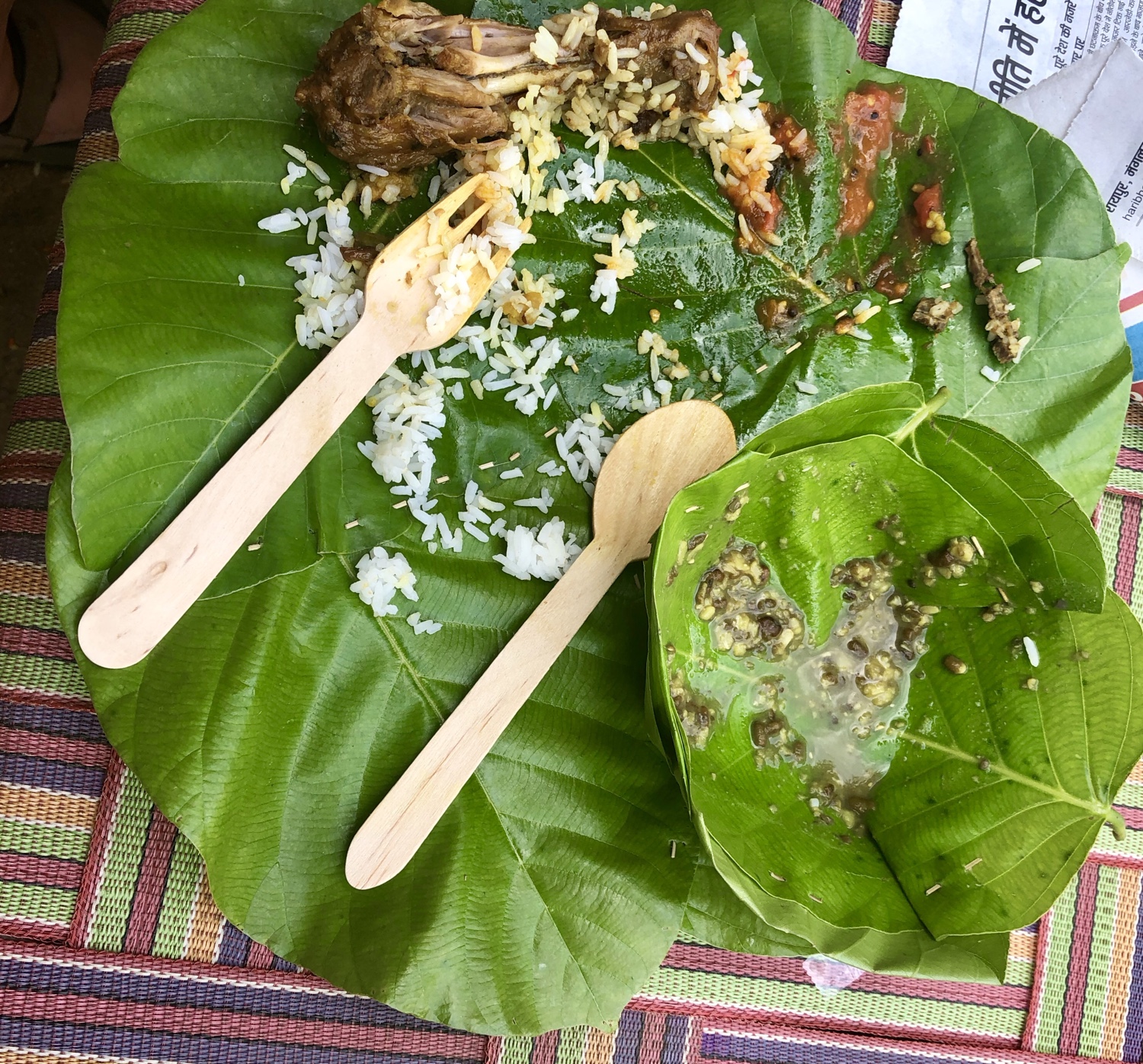
On the way back to Kanker, we miraculously avoided cows and oncoming traffic. The small figure on the dashboard is the elephant god, Ganesh, to bring us luck, which we badly needed.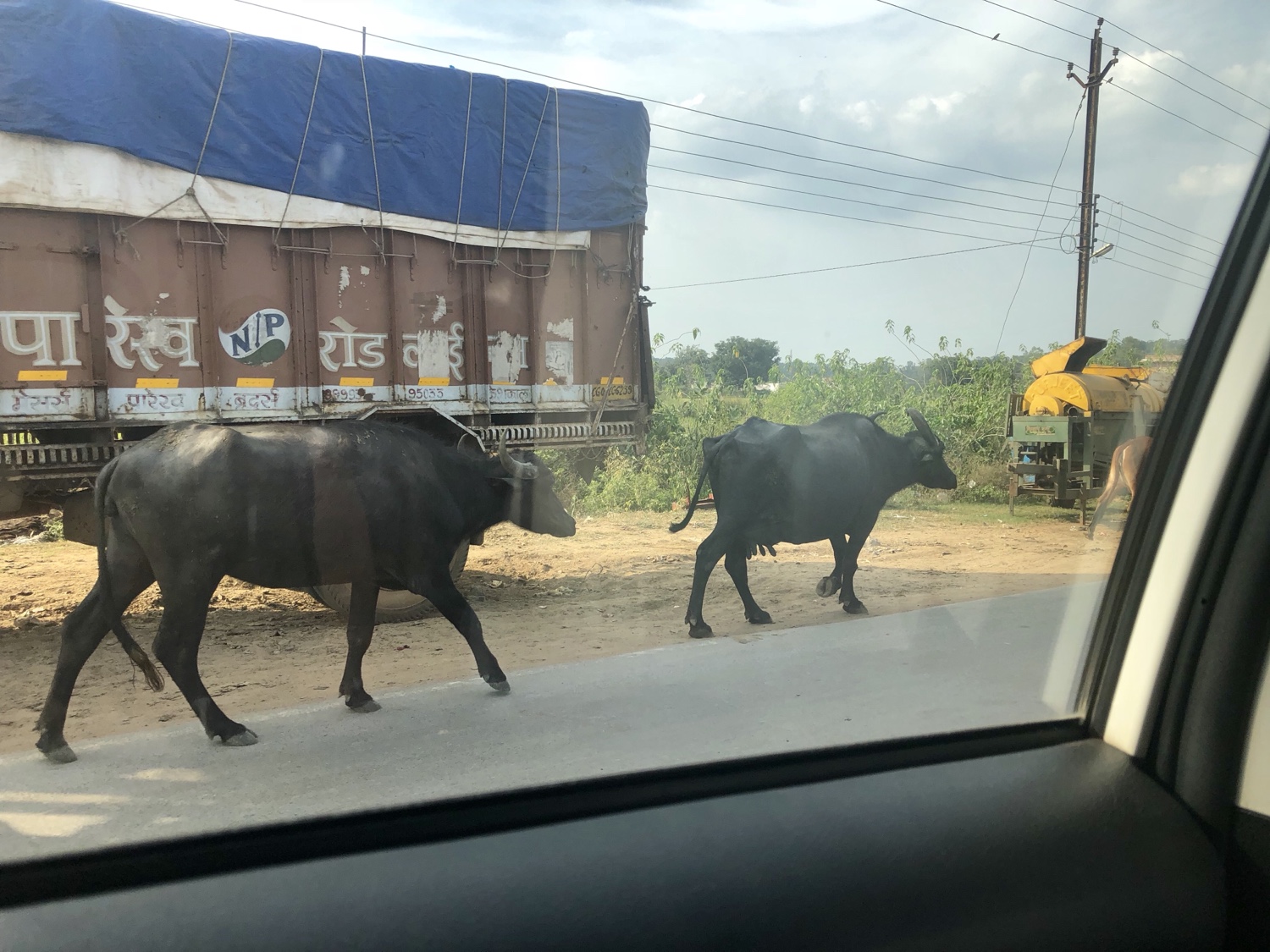 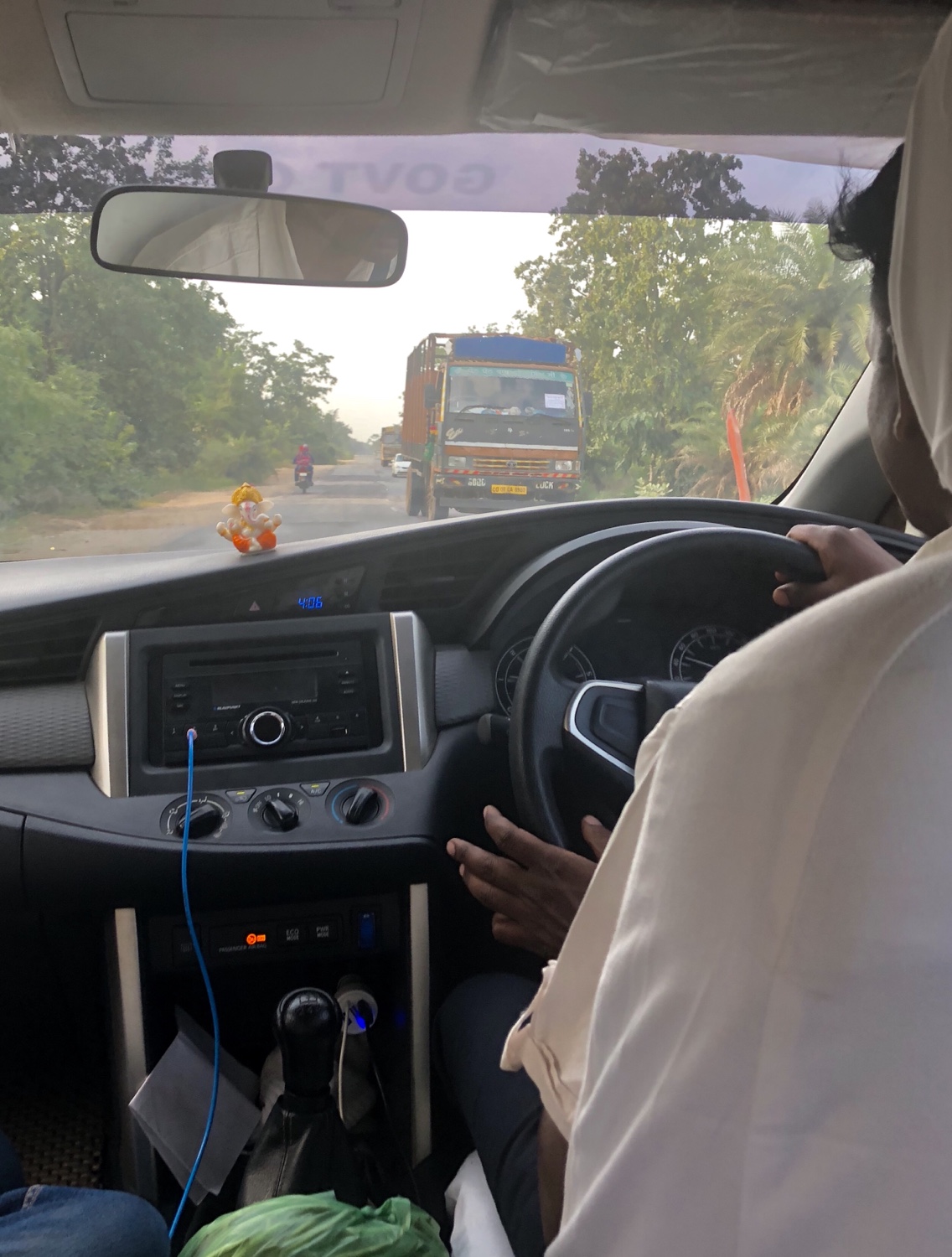
We stopped to buy fruit from ladies who were selling by the side of the road.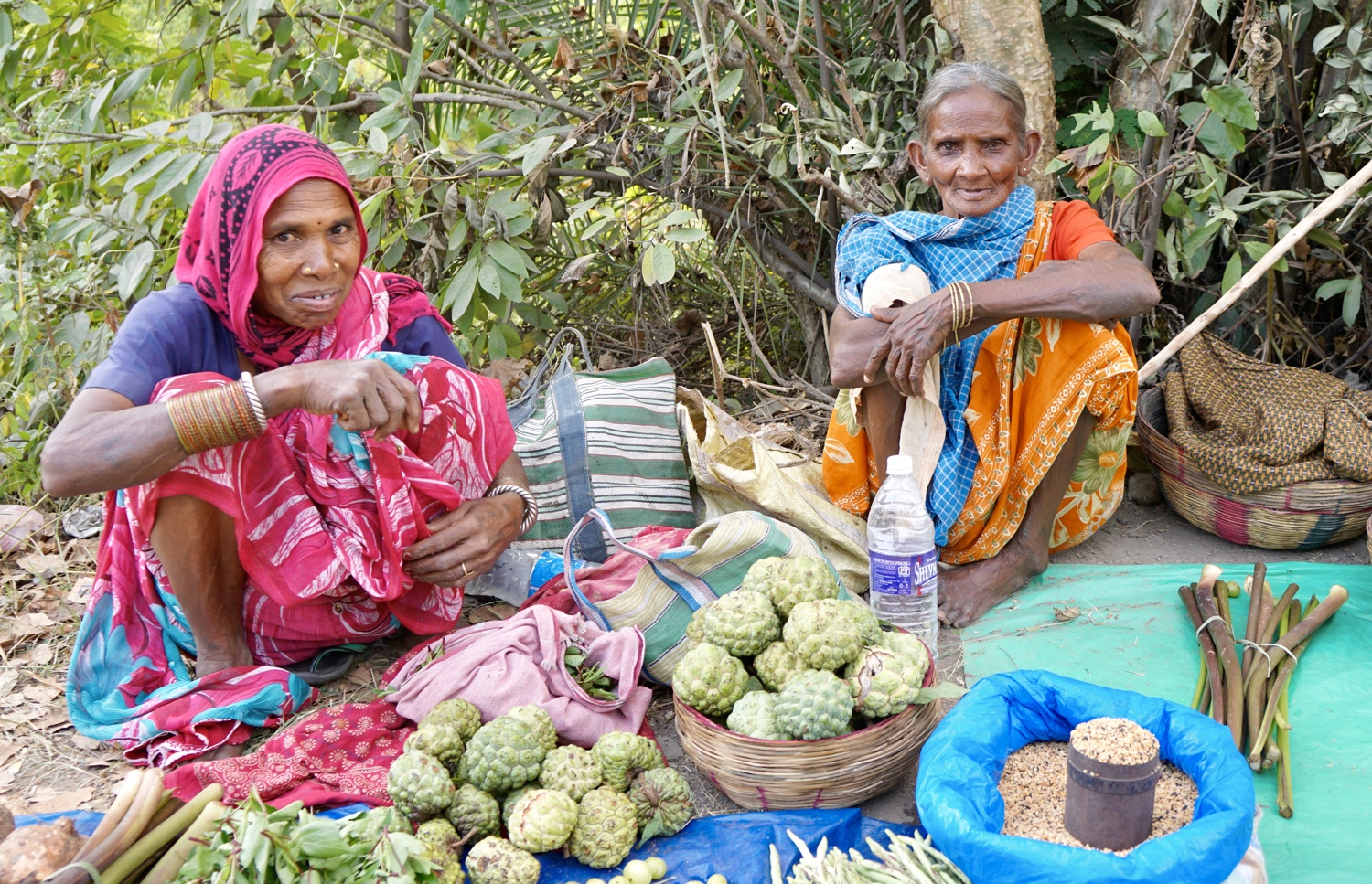 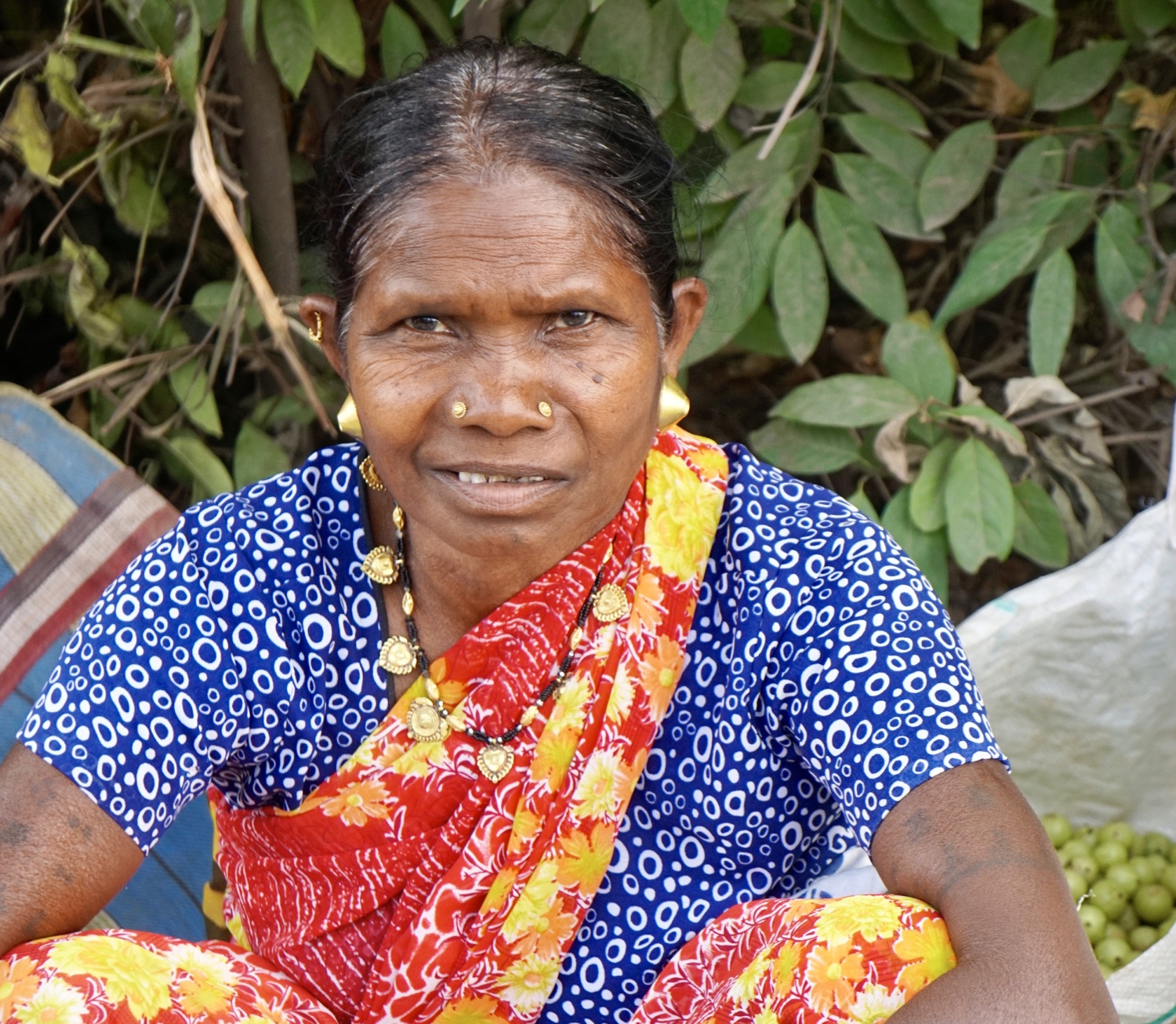 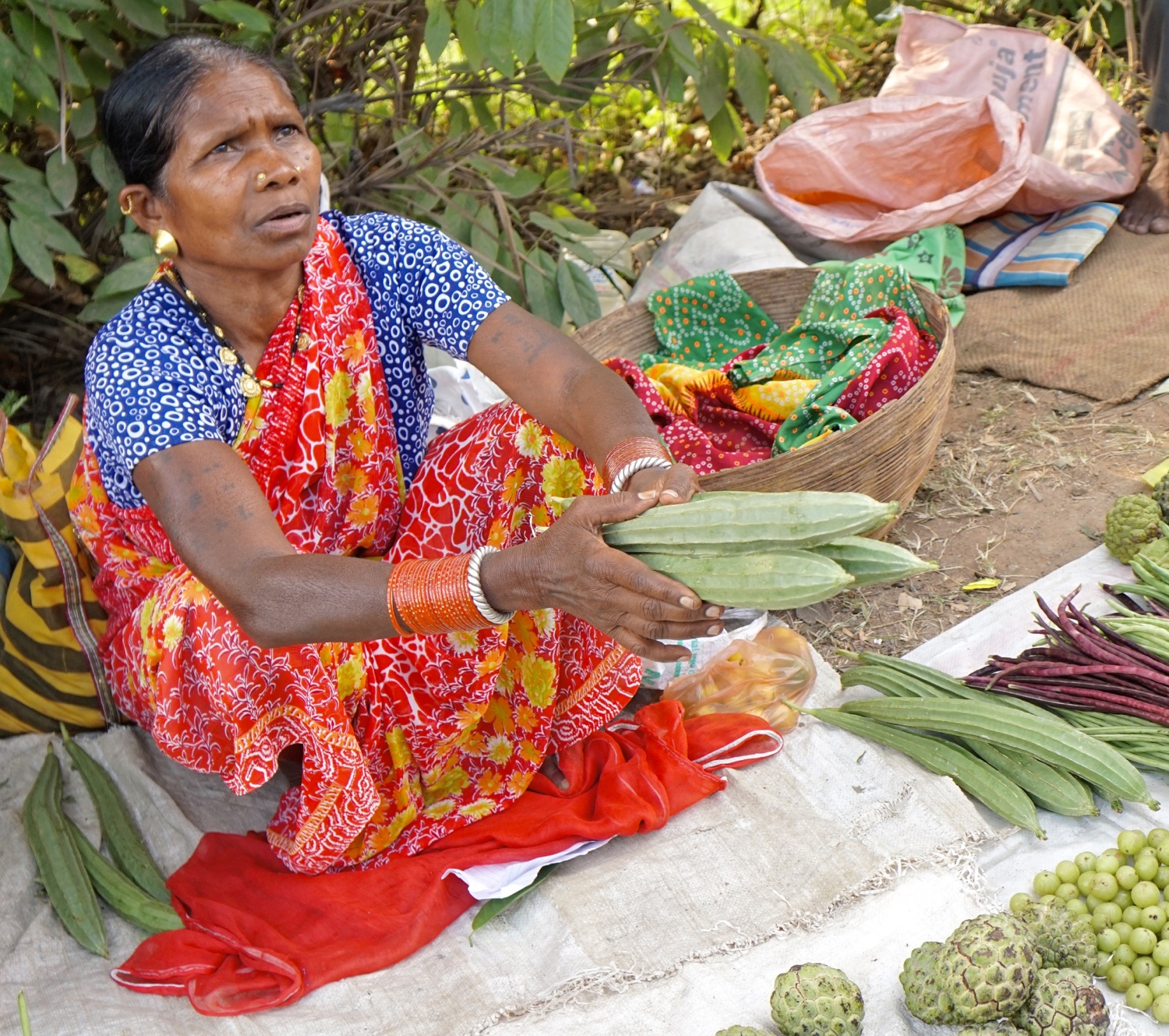
when we get back to the palace, I rest up in my room and blog. I had about seven, we meet in the courtyard with all of the French guess. The family of Jai, and other palace people, including Babbui, have gathered and the children of these people do some energetic dance. Eventually, the rest of our enticed up to dance with them, and it is quite a lot of fun.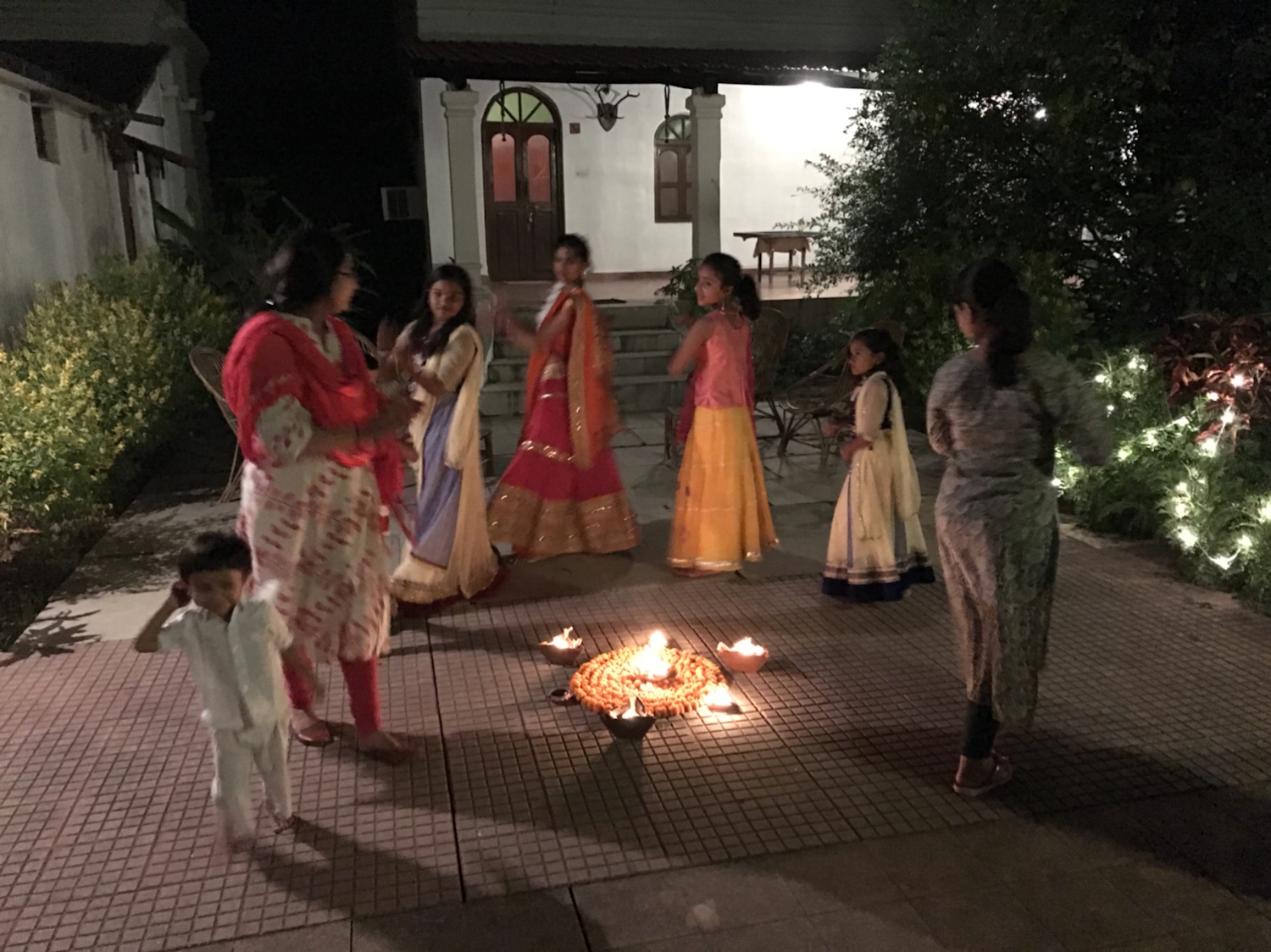
After the dancing, we are served a very good dinner in the Palace dining room. The French people communicate primarily French, but they are quite good about including me, at least from time to time, with English. One of them is a 30-year-old who lives in Vancouver Island. He and I wind up talking Hebrew together. Go figure.
Back to the room to shower and crash.
October 14
Slept longer than the night before, and I think I may be back to normal, whatever that may be. Coffee in the room. Service at the Oberoi Grand is terrific. I like the hotel a lot, better than the newer, more opulent Oberois in which I’ve stayed elsewhere.
After an excellent buffet breakfast (eggs Benedict), I meet Partha at 9AM. The very full day included stops at the flower market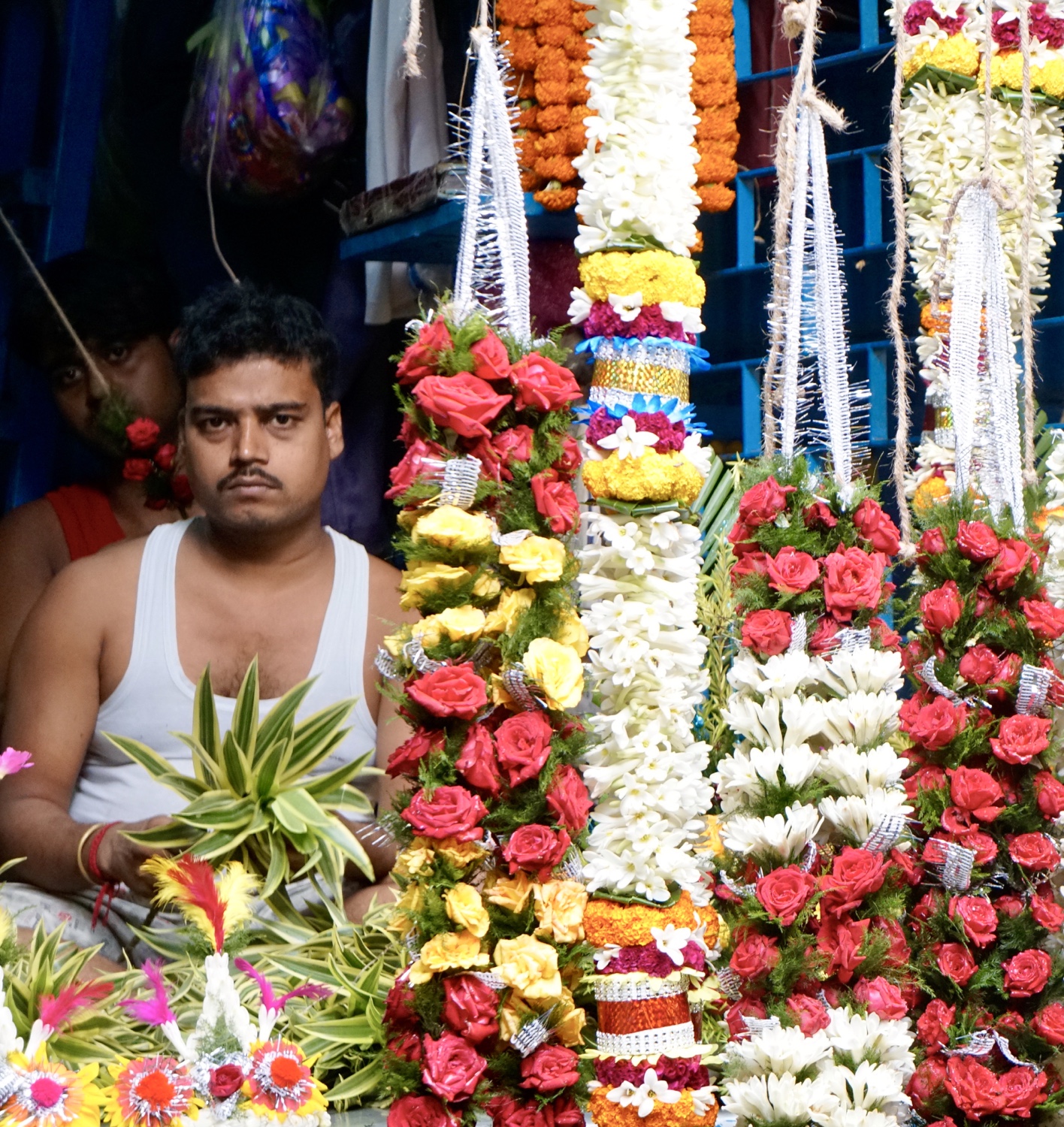 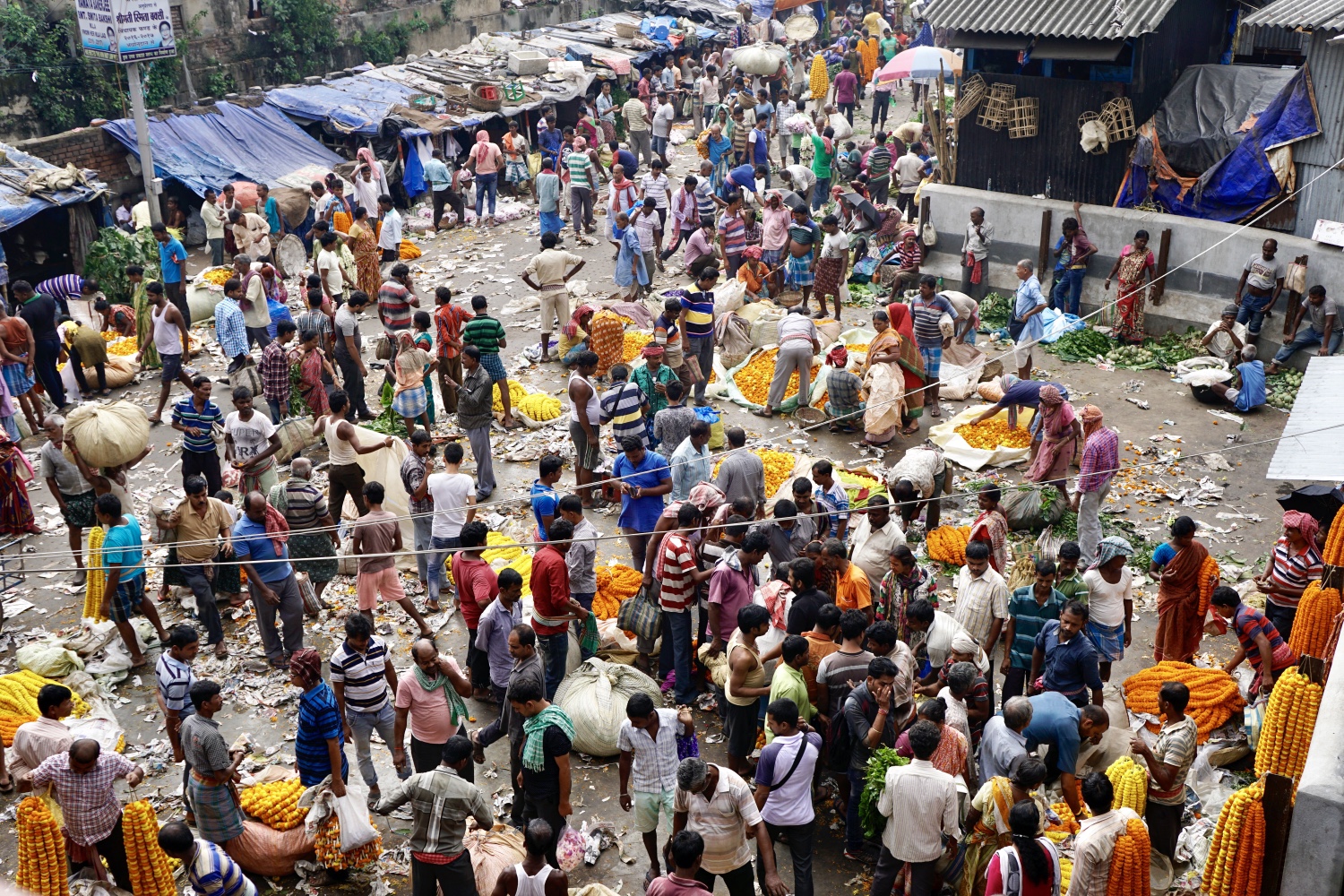 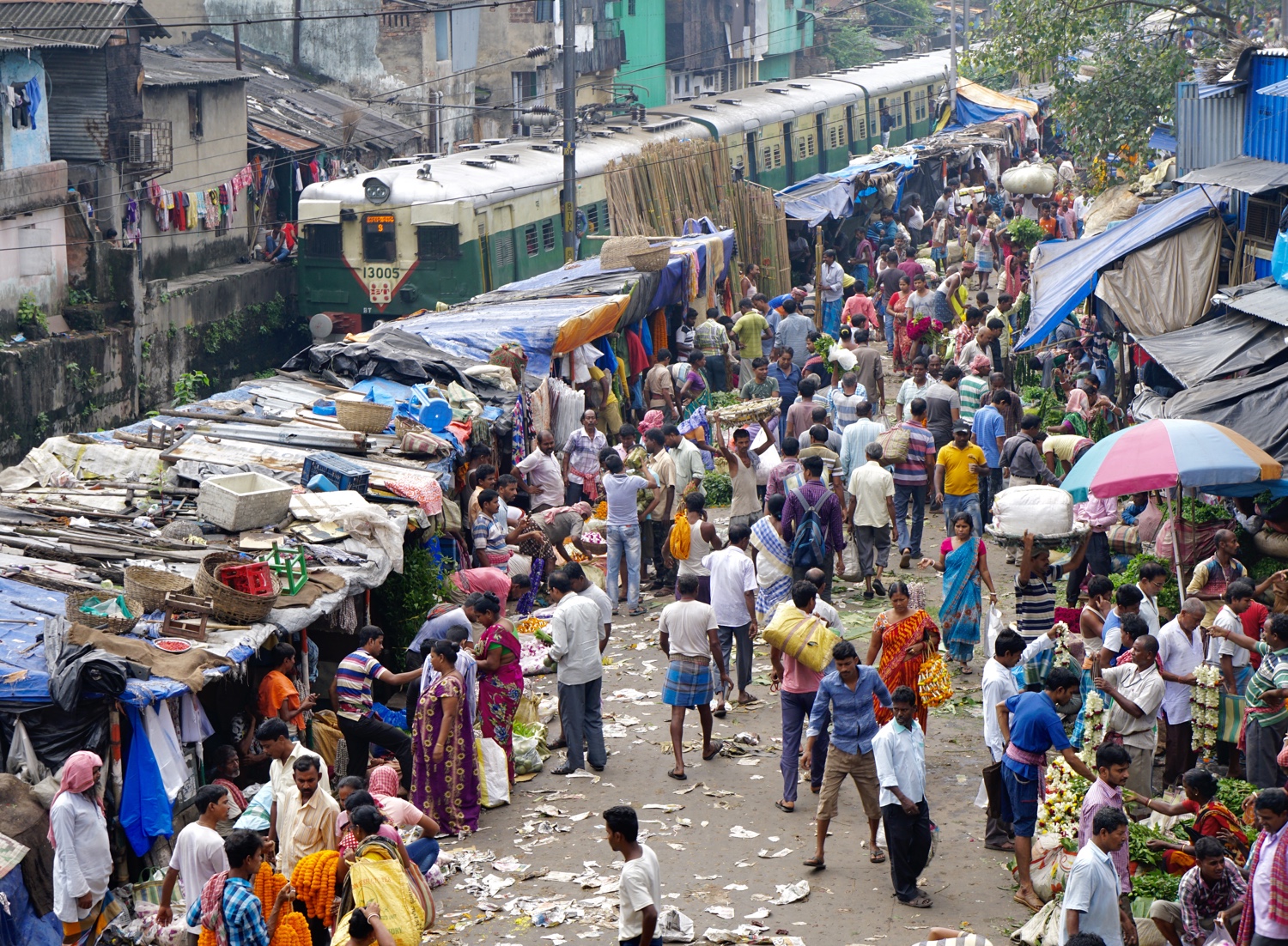
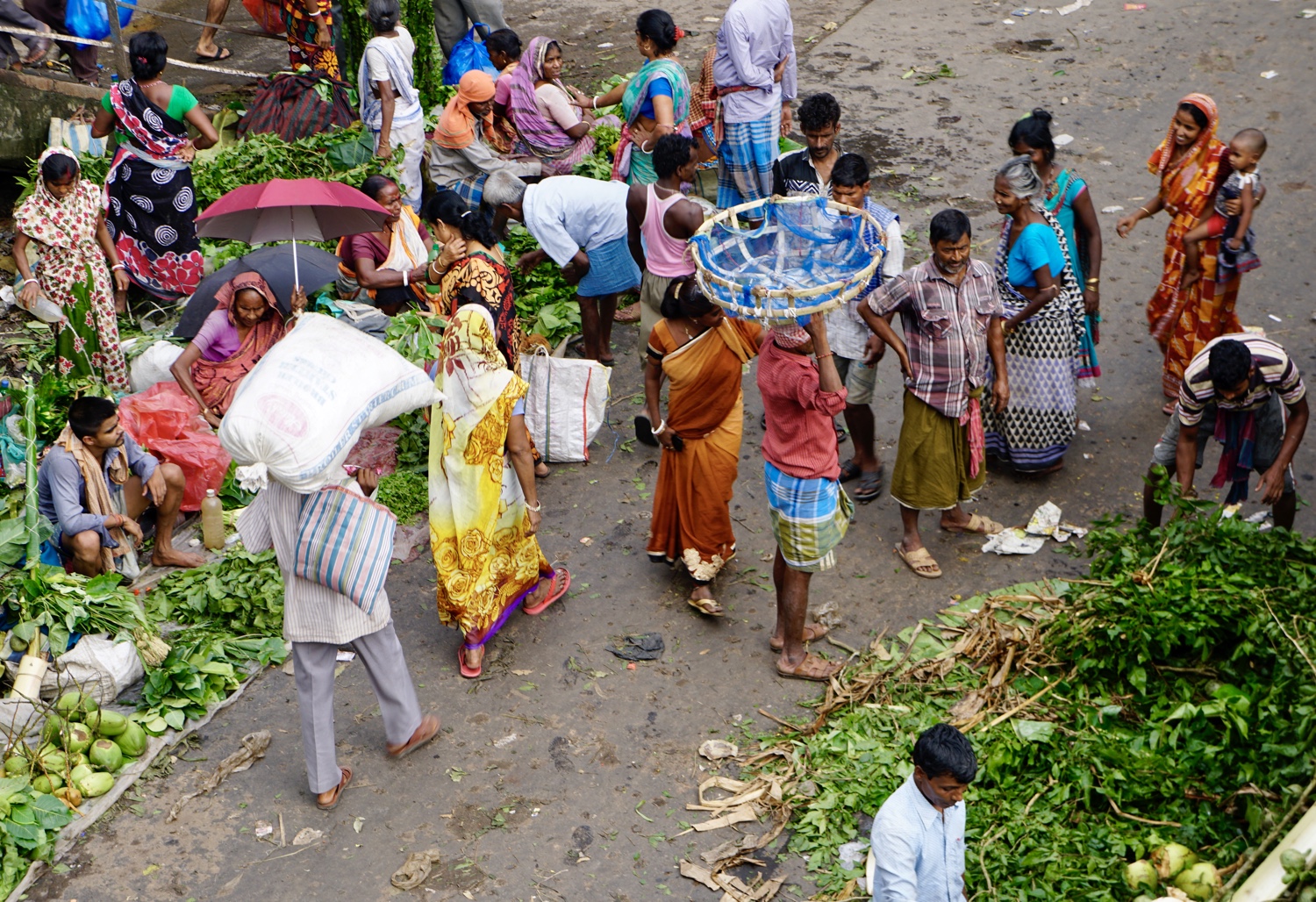 At the ghats, where people wash themselves and their clothes, and lie around At the ghats, where people wash themselves and their clothes, and lie around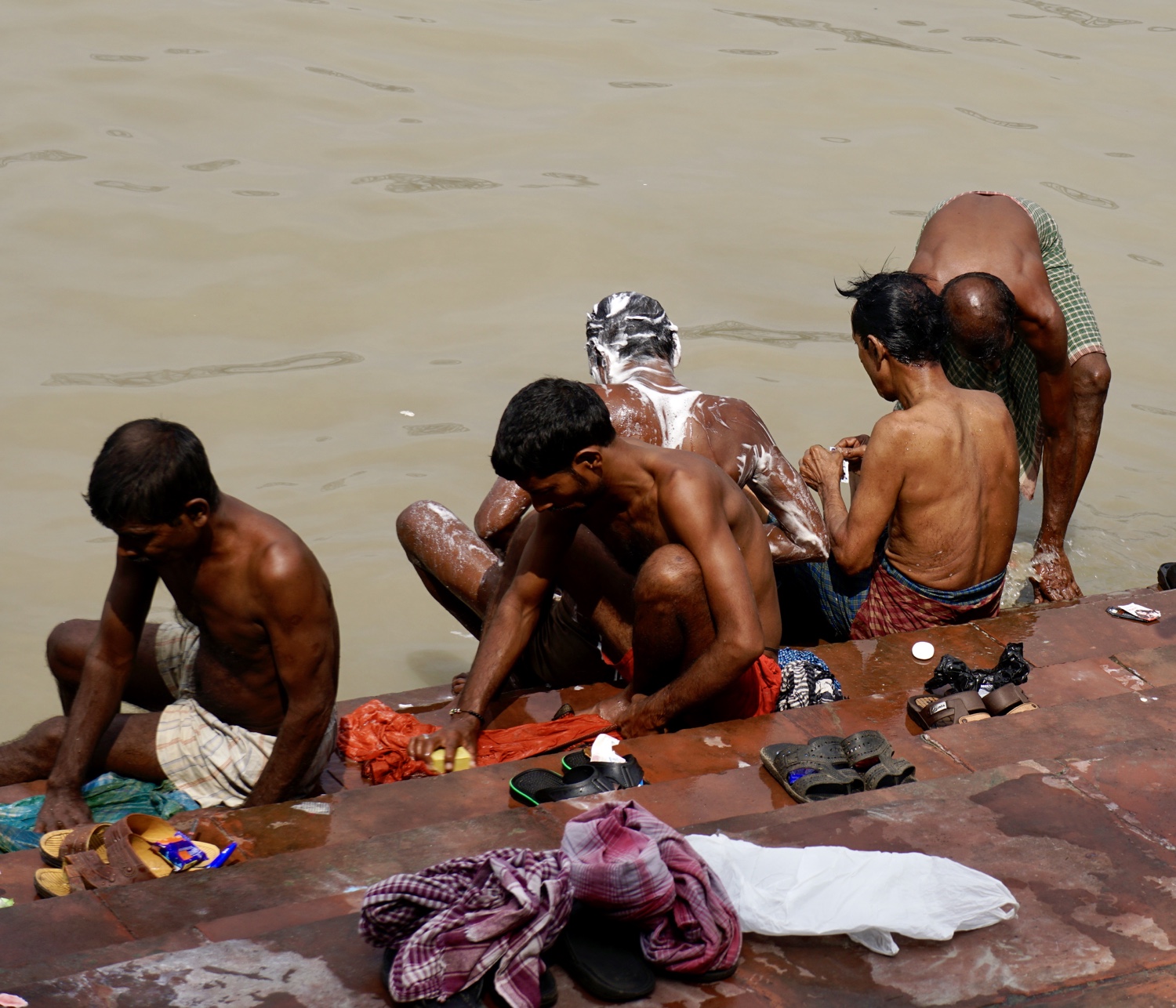  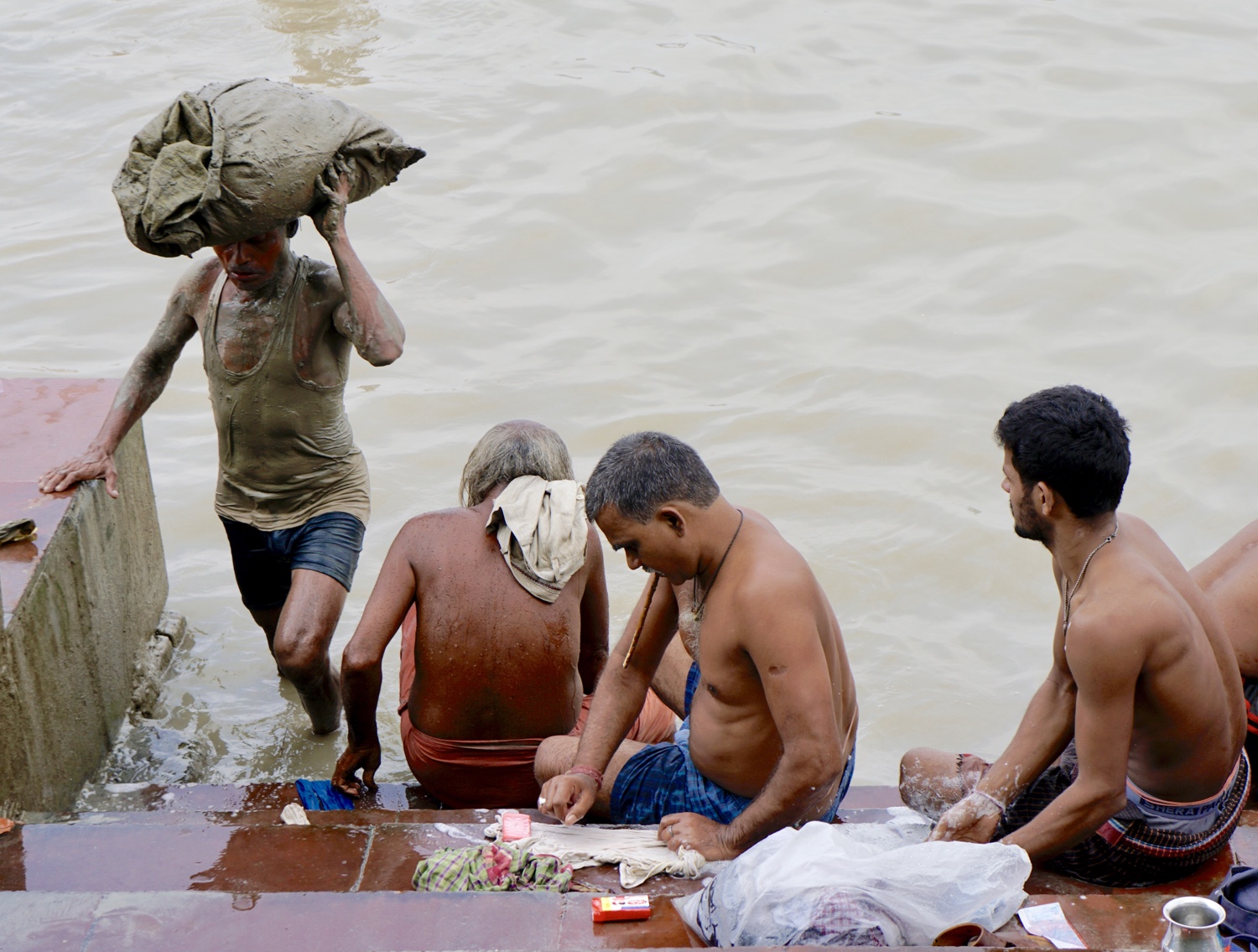 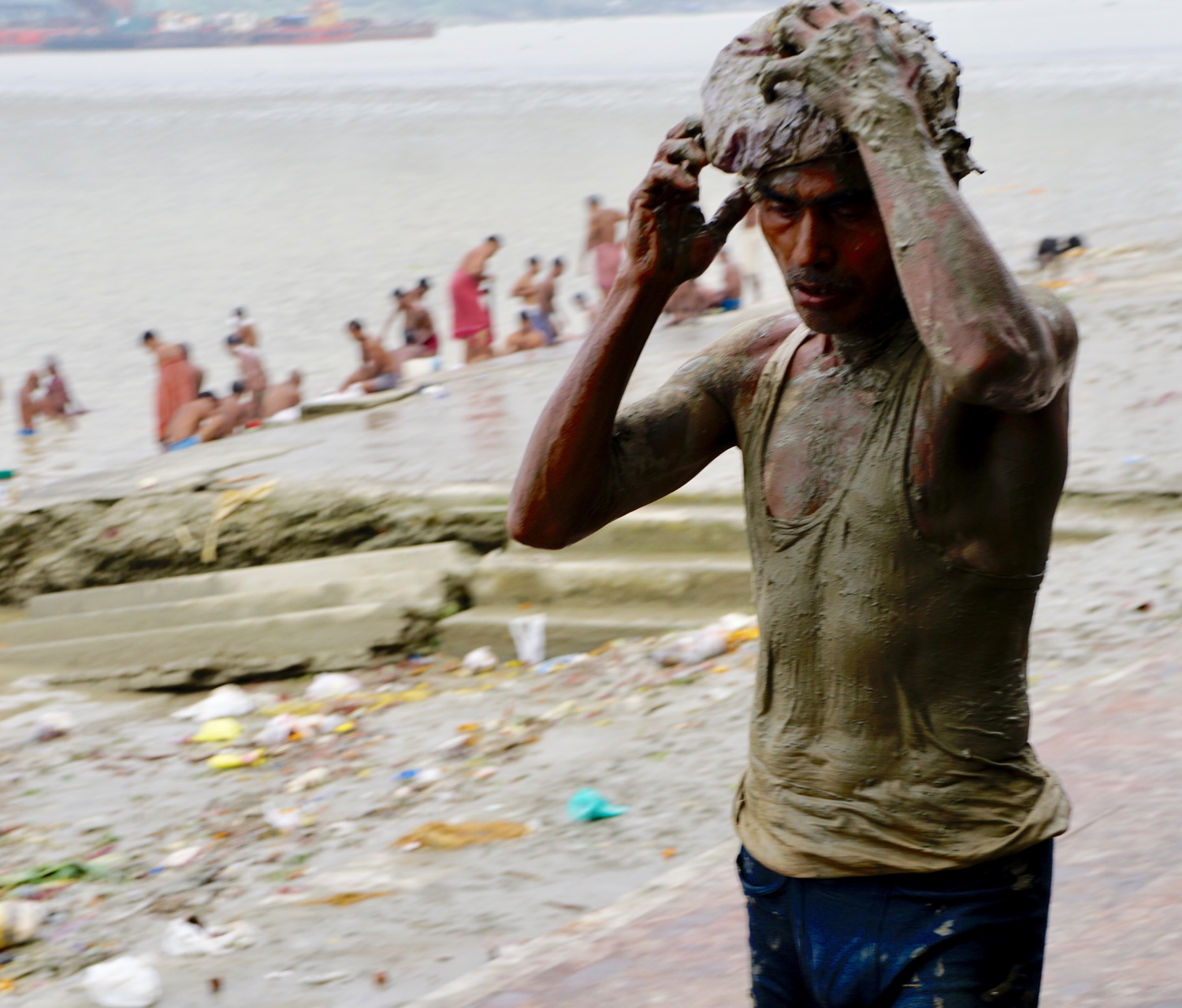 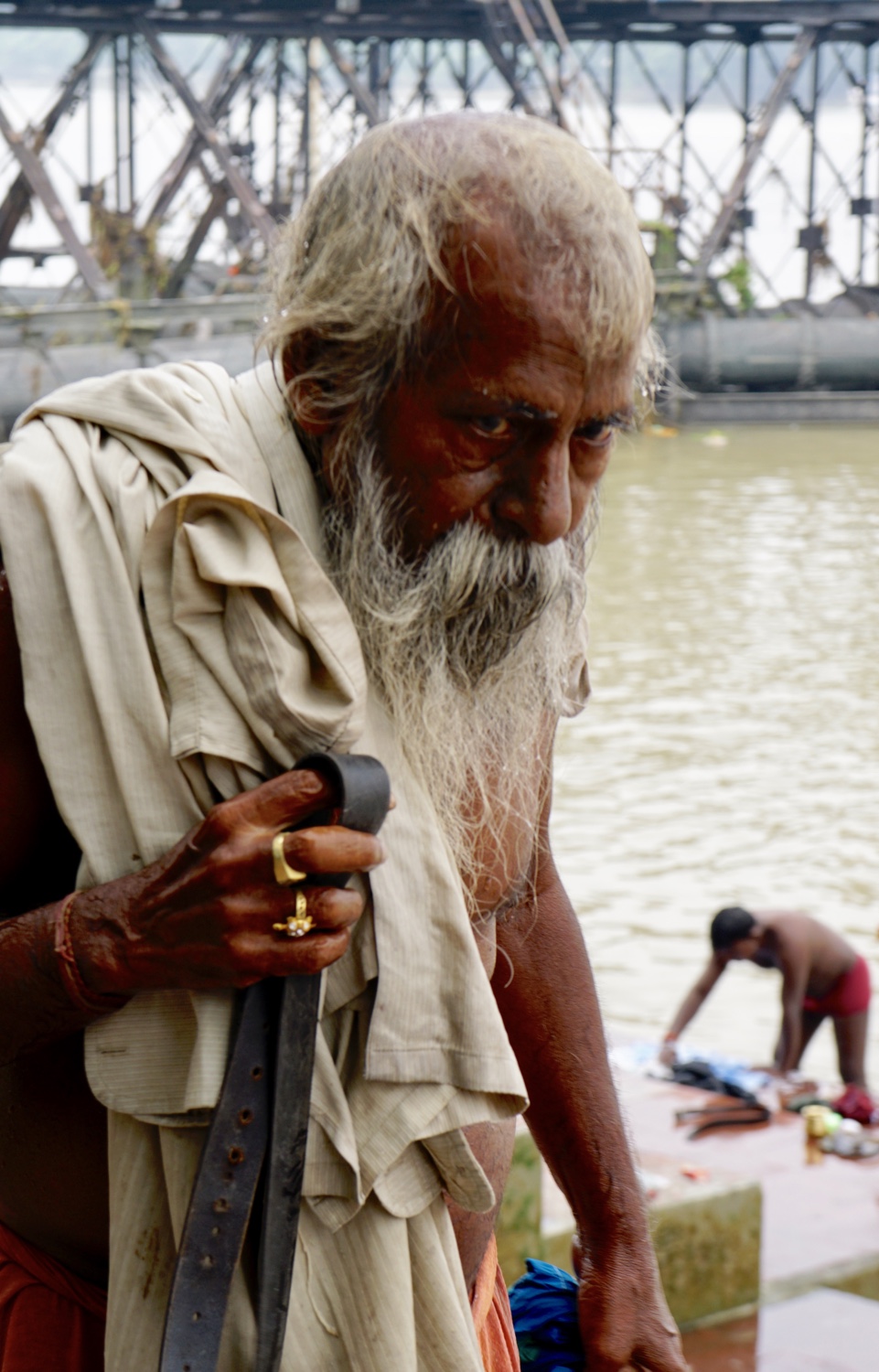 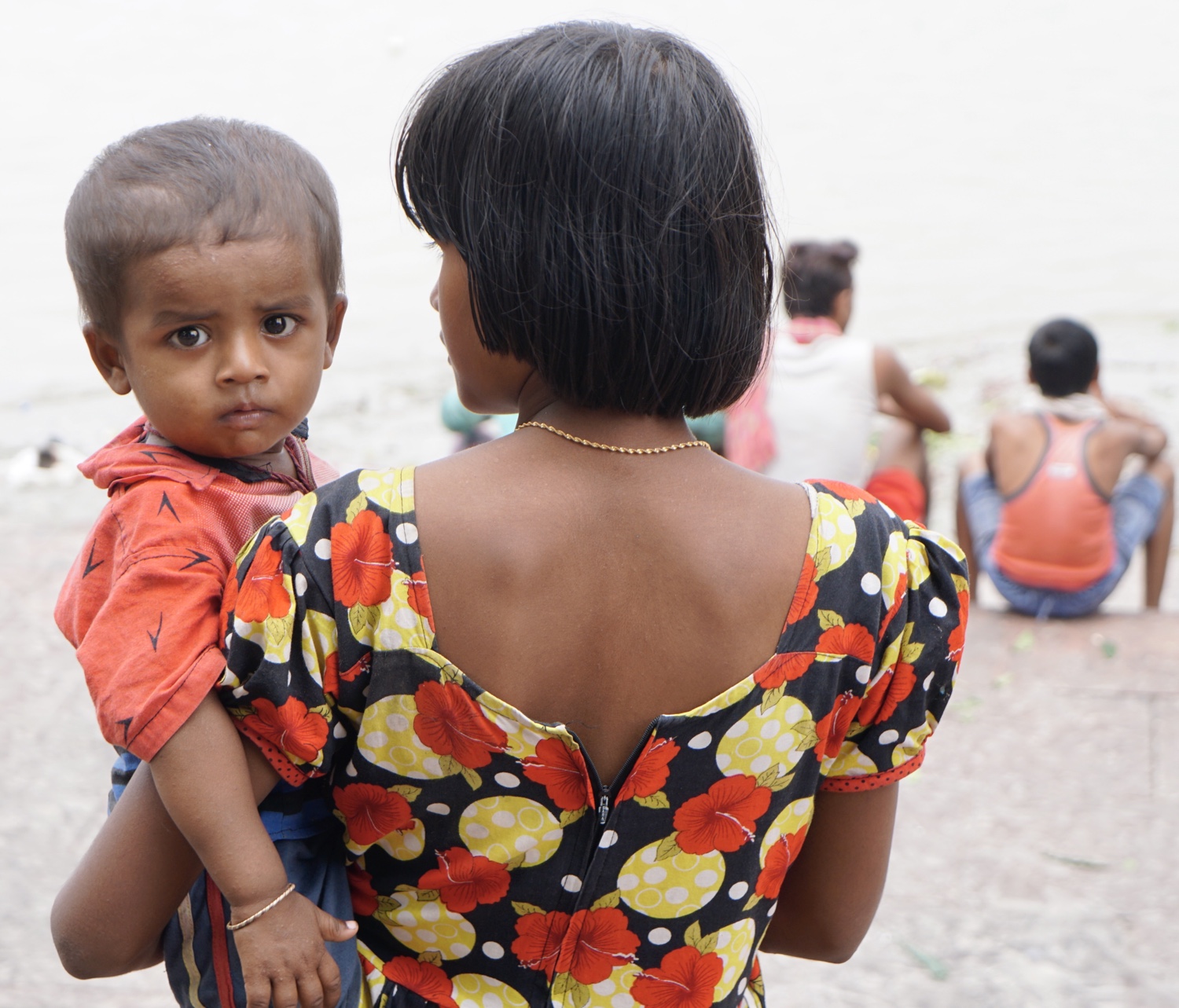 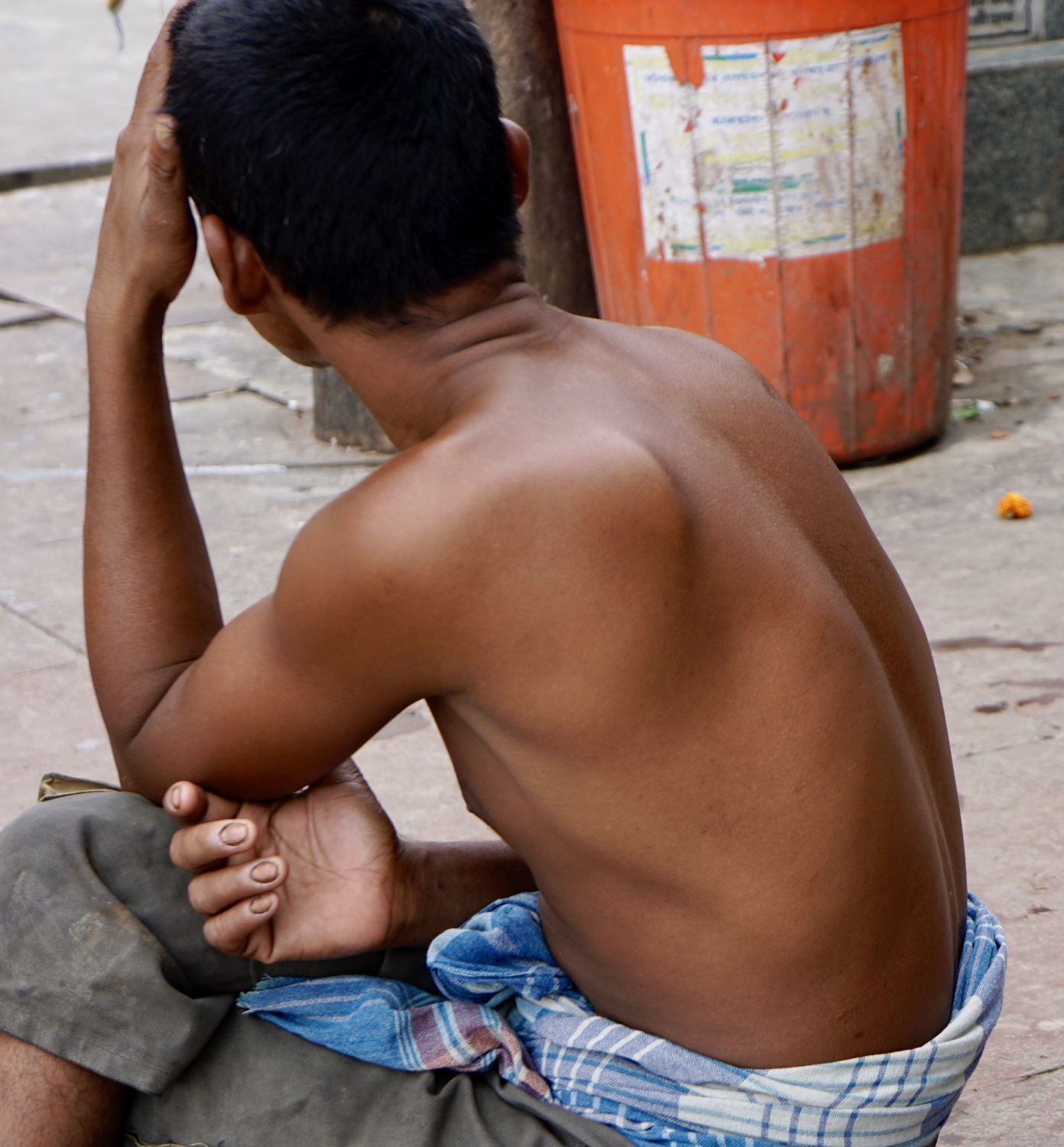 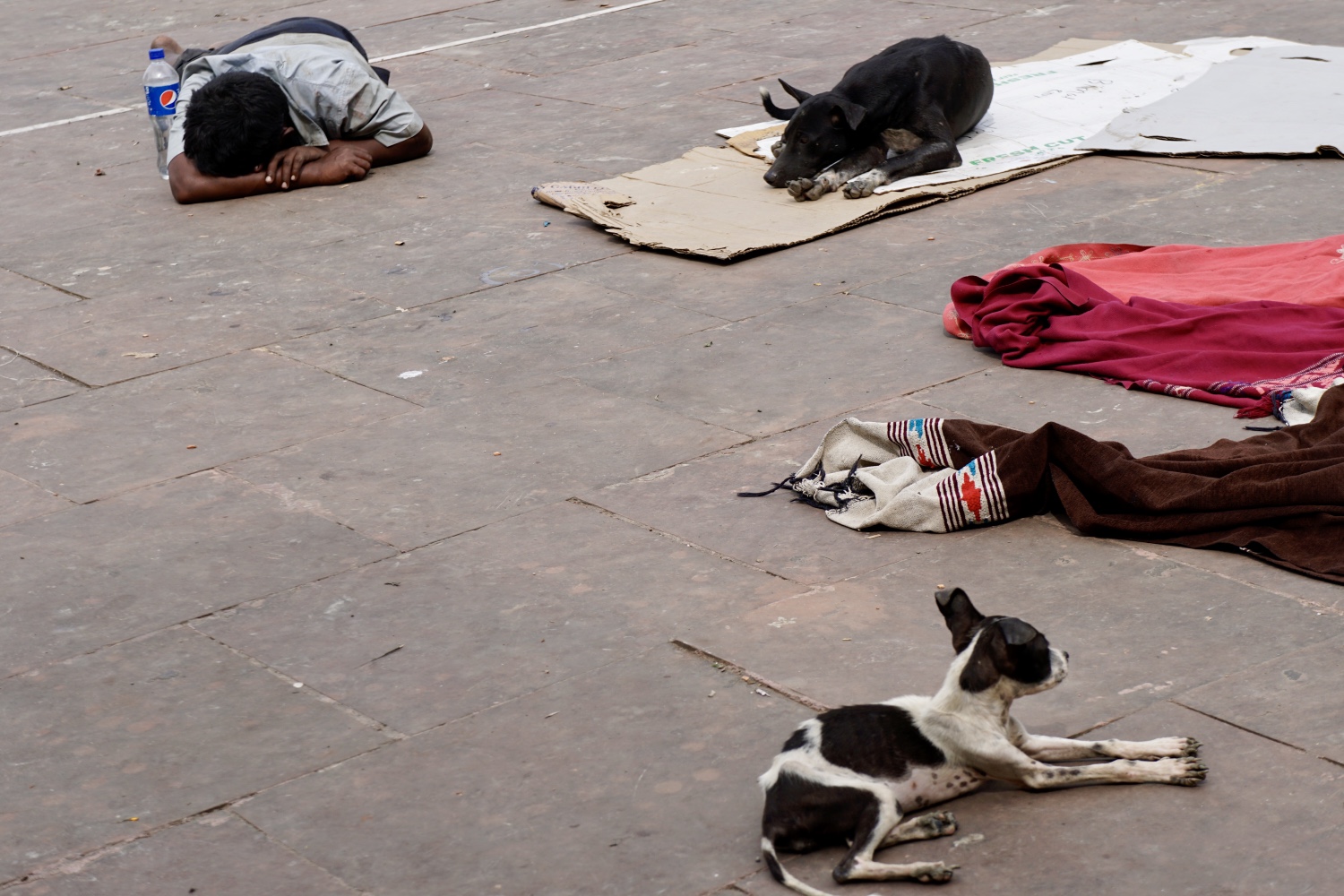
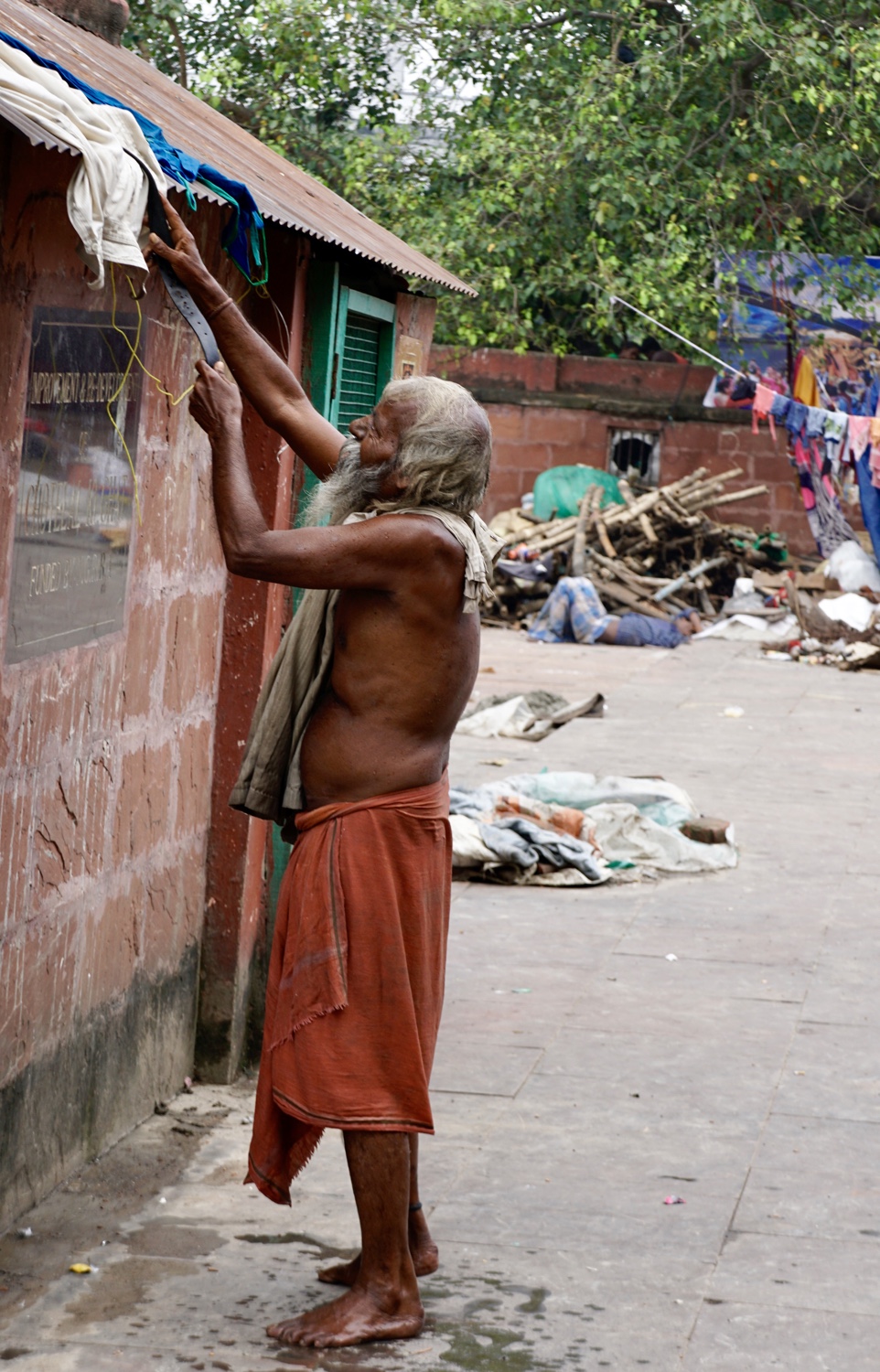 at a beautiful Jewish synagogue, Meghan David, not not in operation at a beautiful Jewish synagogue, Meghan David, not not in operation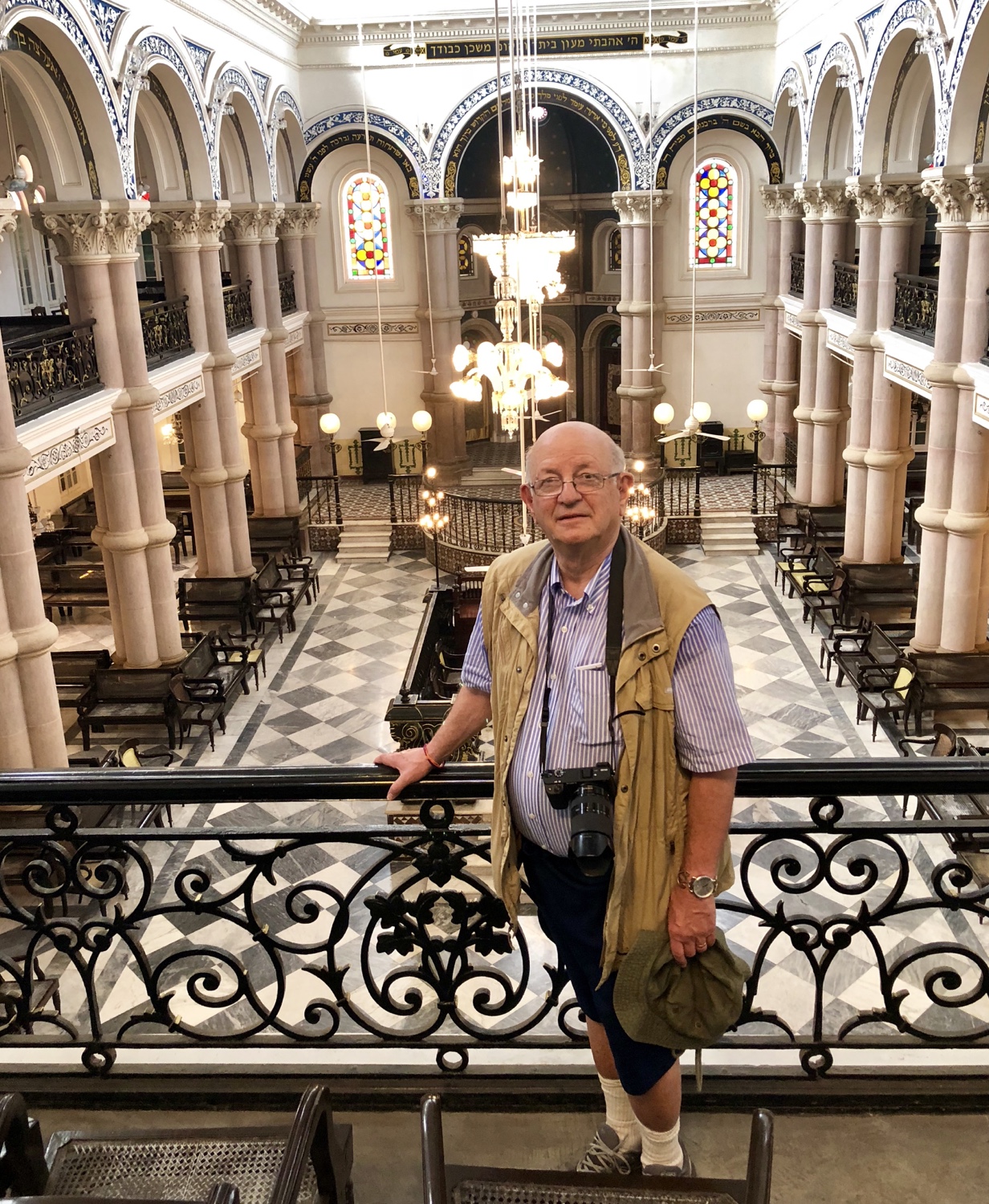 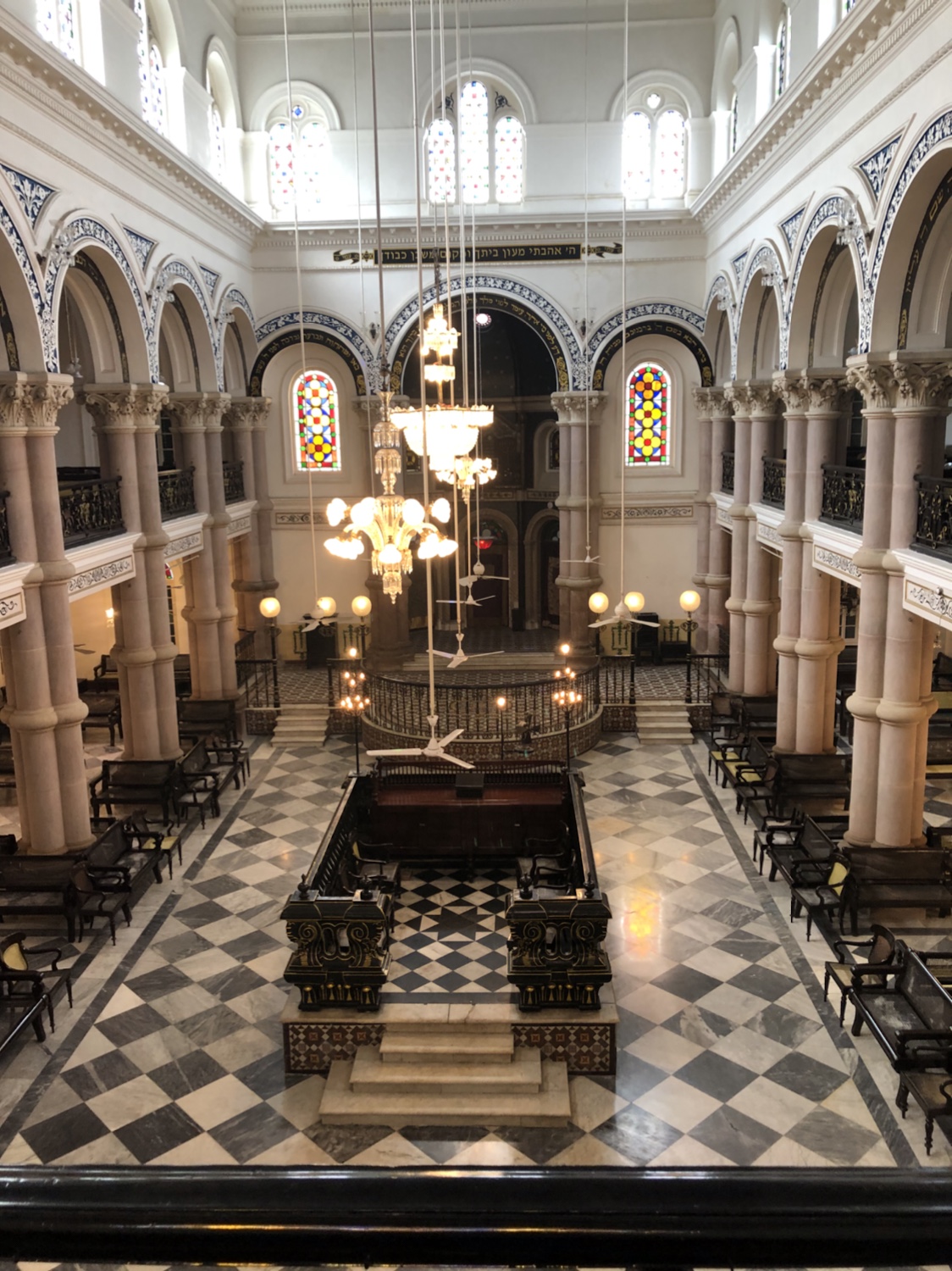
We had an extraordinary experience getting to the synagogue. The alley leading to the synagogue was blocked by merchants selling their wares. When our driver indicated that he wanted to back into the alley, the merchants, instead of simply suggesting that we walk the twenty or so yards to the synagogue, moved all of their wares that were blocking the alley and helped direct us as to how to back in. I was dumbfounded at their kindness, and told our guide so.
In the more upscale and greener area of South Calcutta, we saw three more amazing pandals, one of which had been judged the best pandal in Calcutta. The crowds were huge and one needed to push his way, somewhat, to get in. I remarked to our guide that it was “pandalmonium”, and he laughed and said he was going to use that term with other clients. Here is a sampling of some of the pandals and surrounding crowds.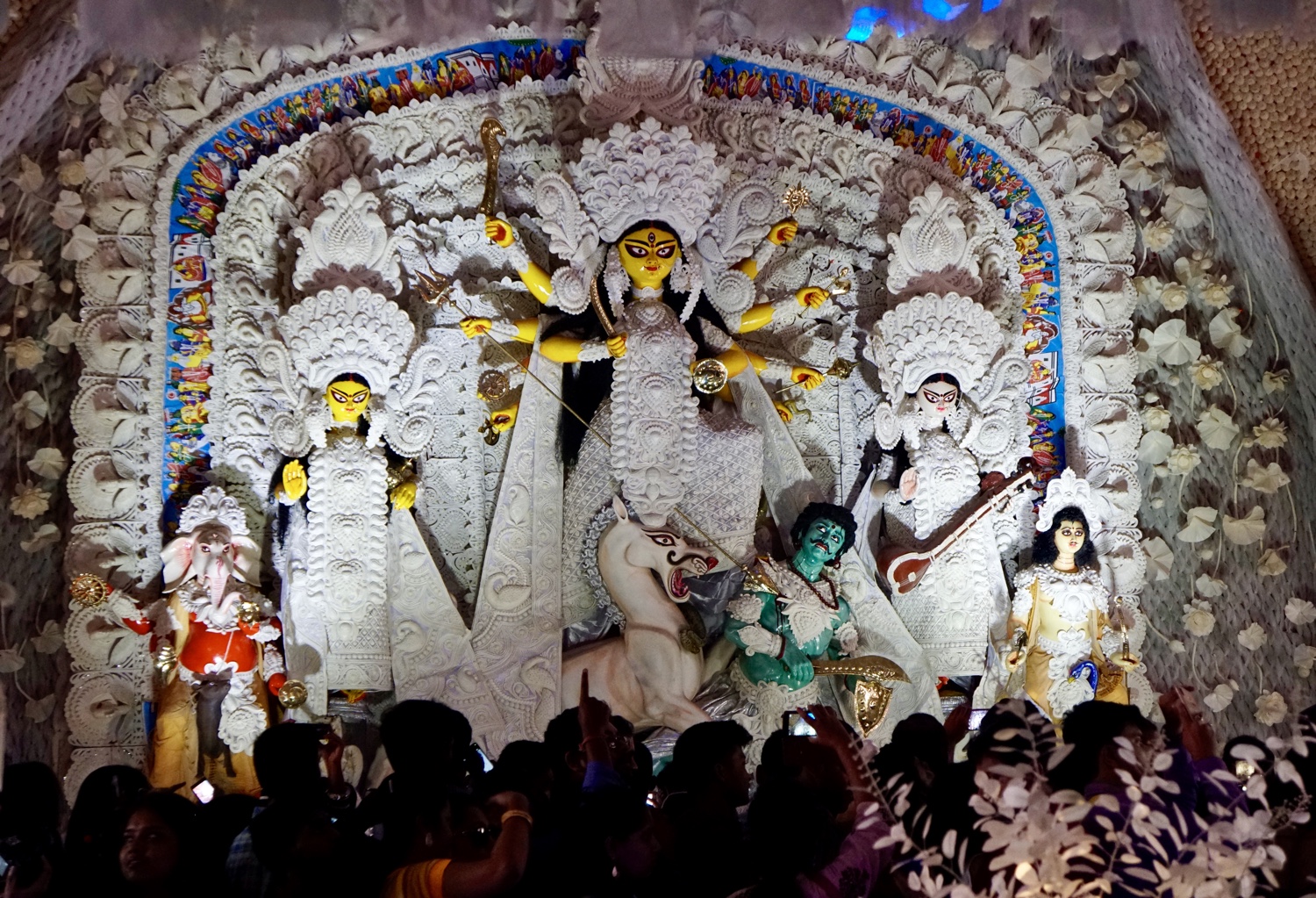  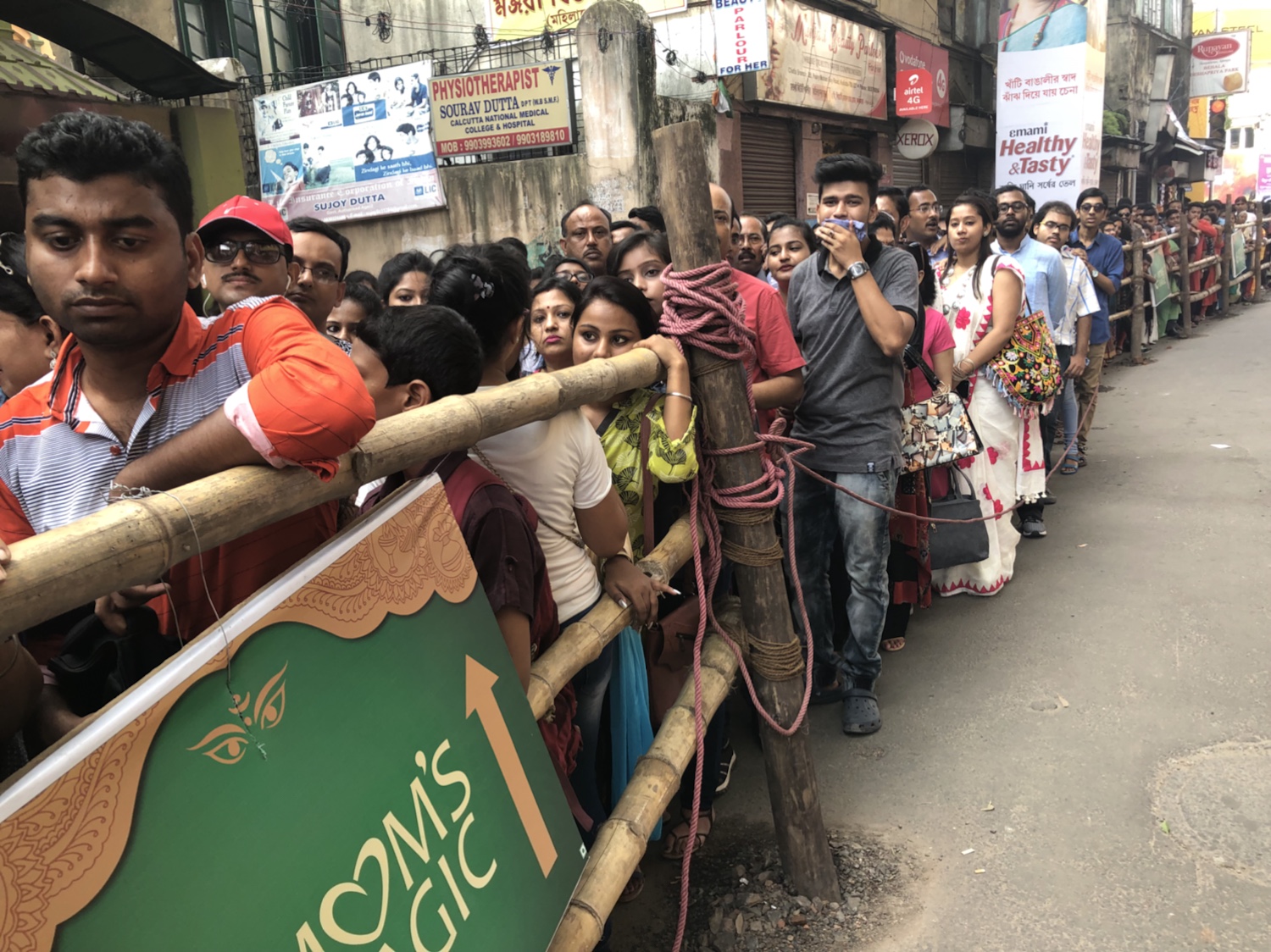 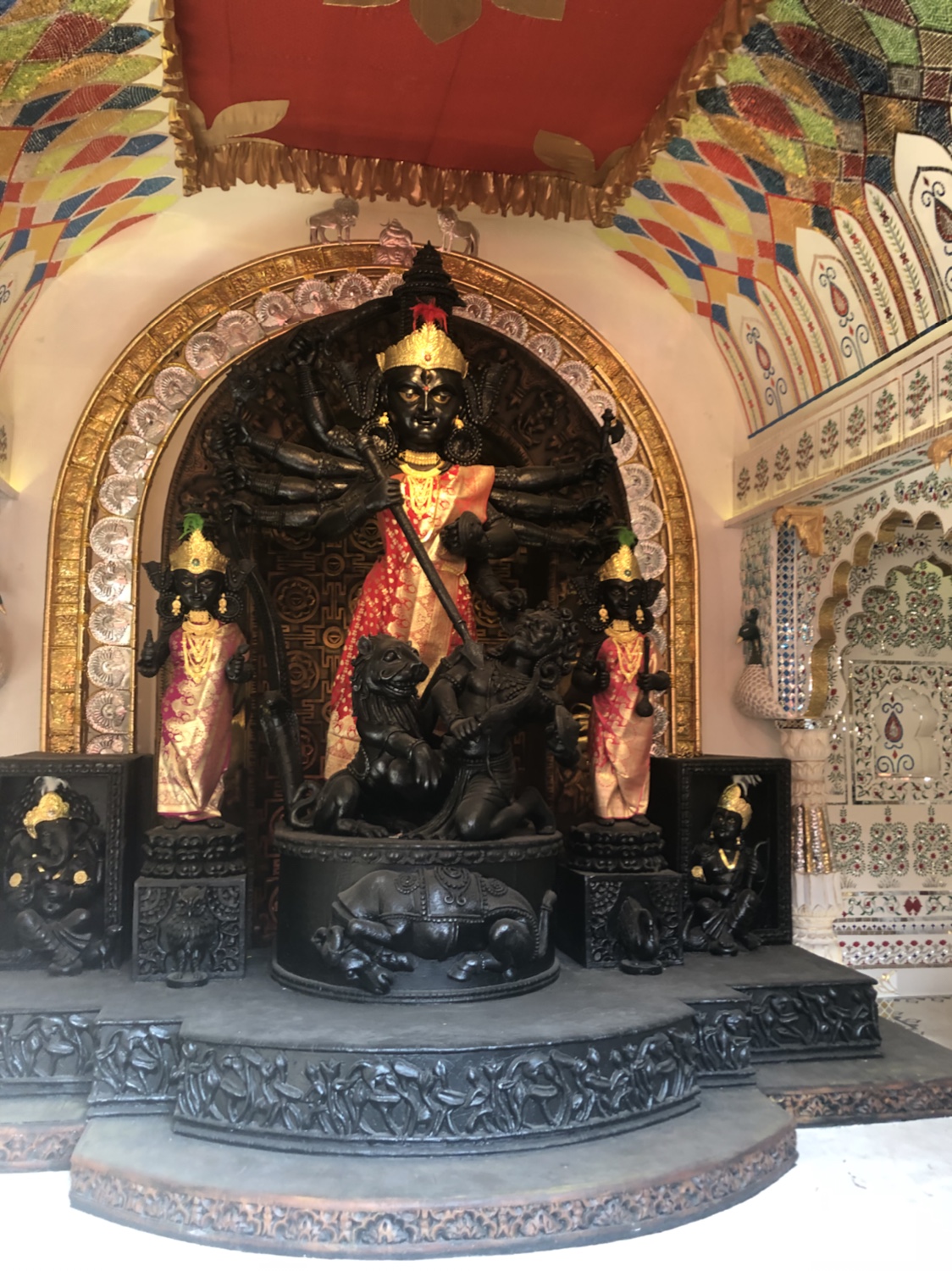 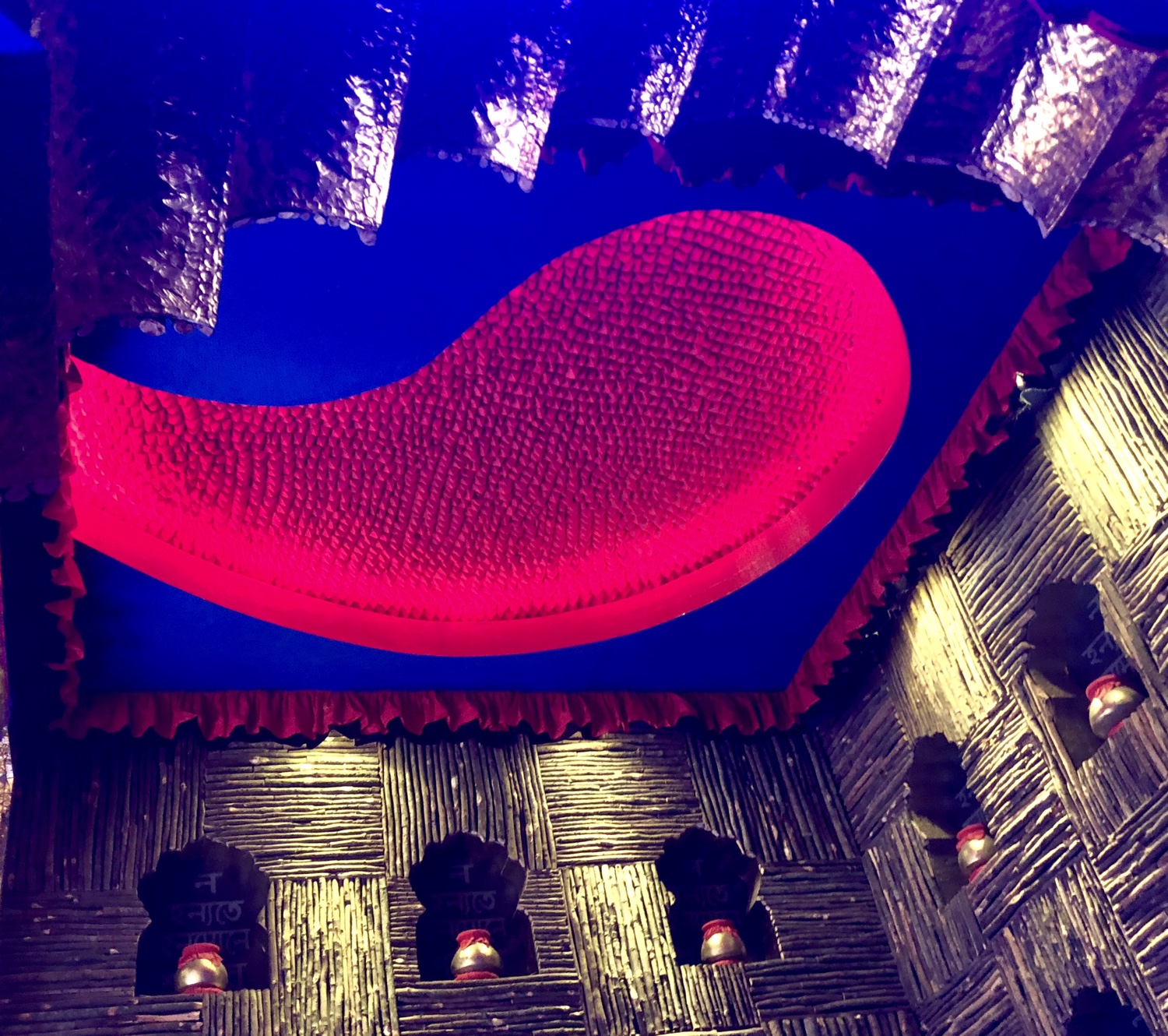 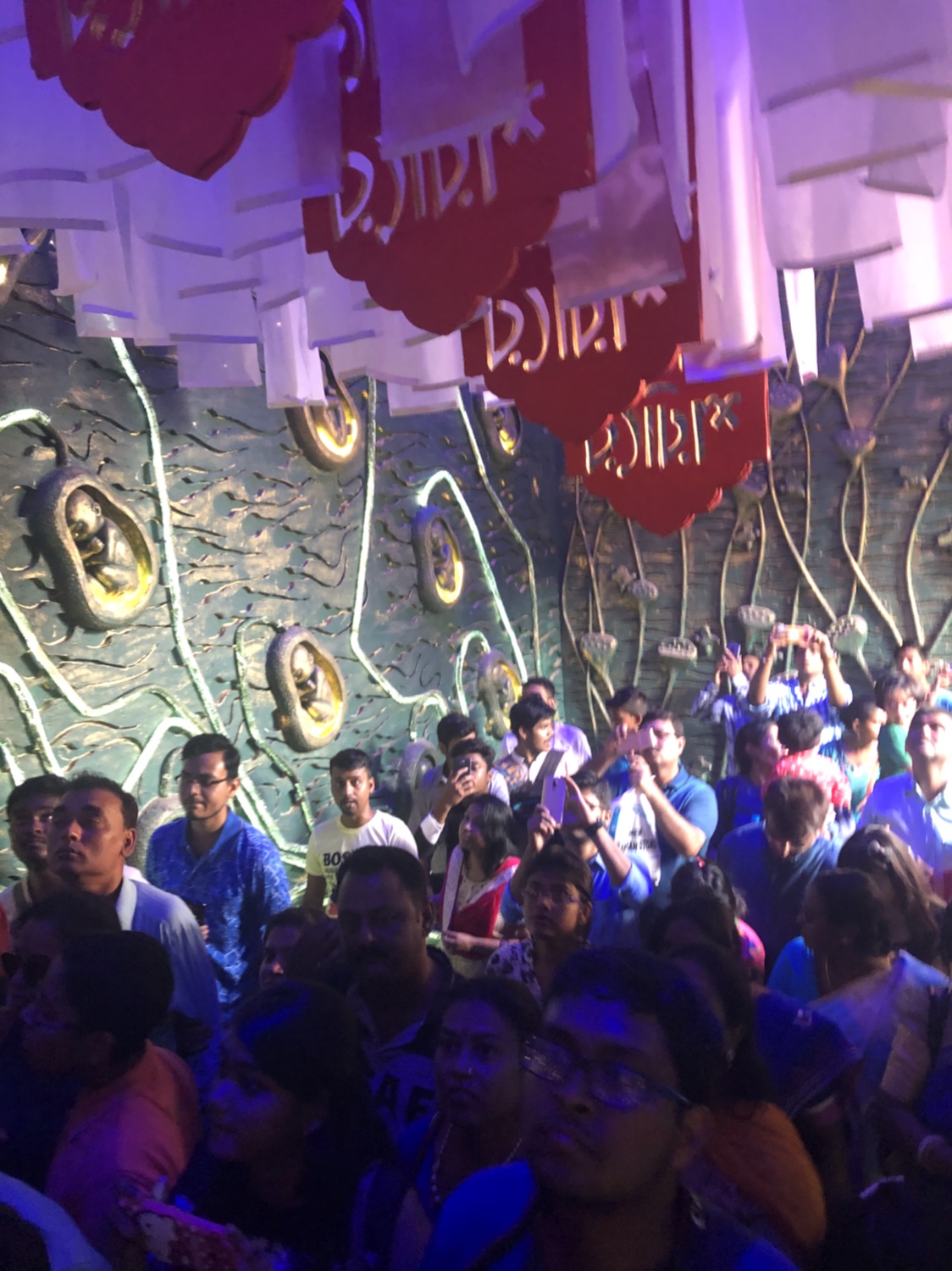 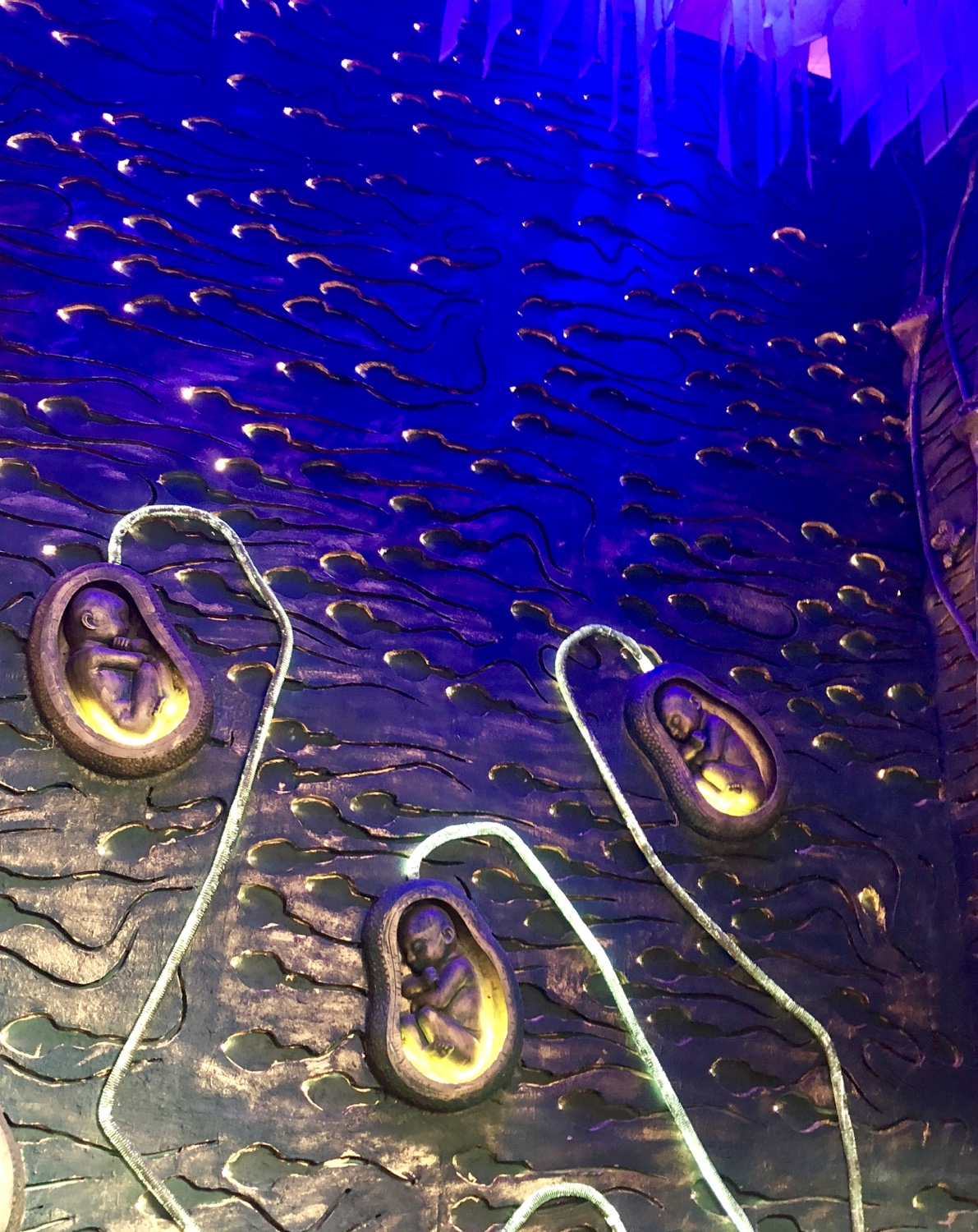 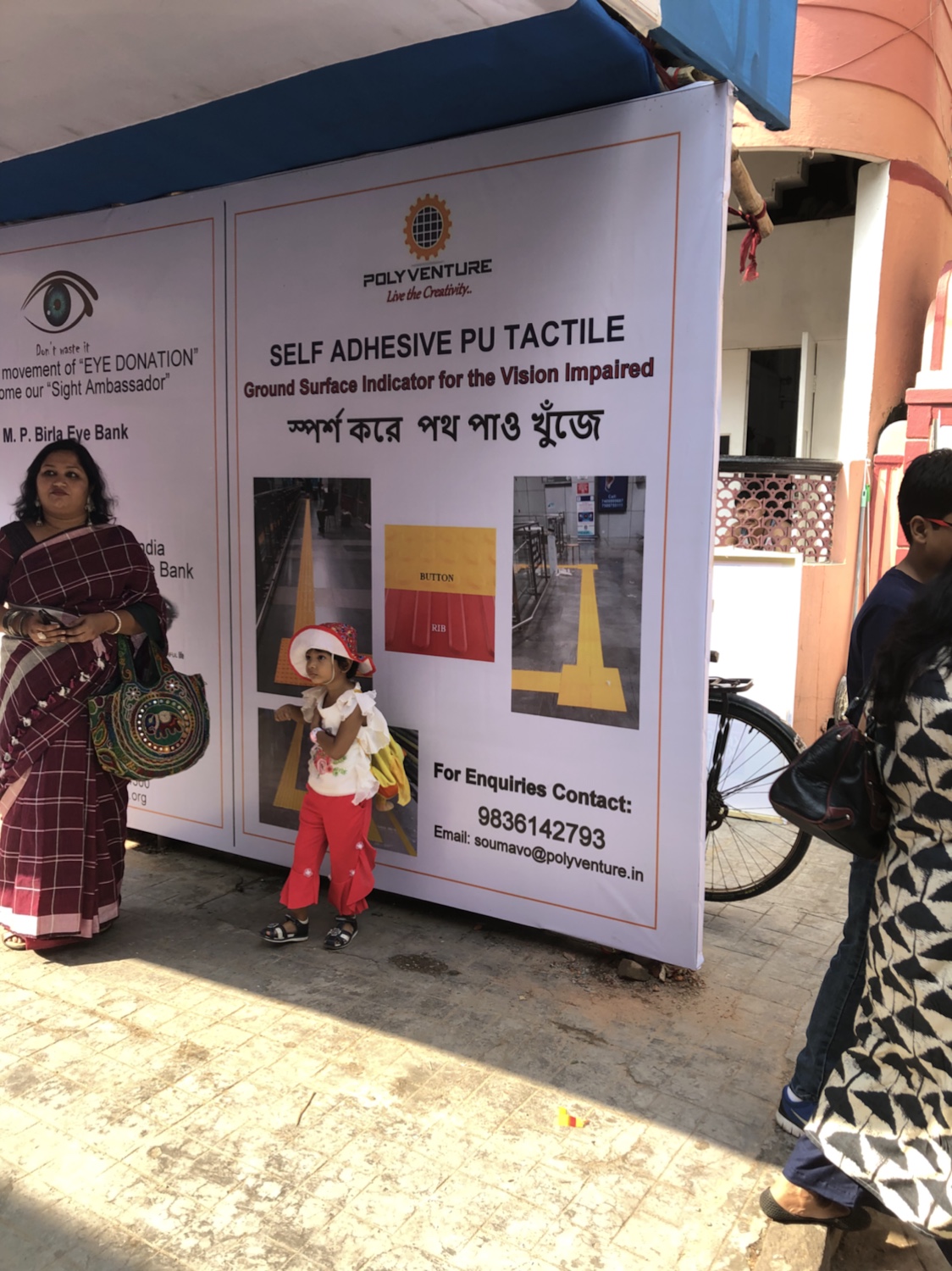 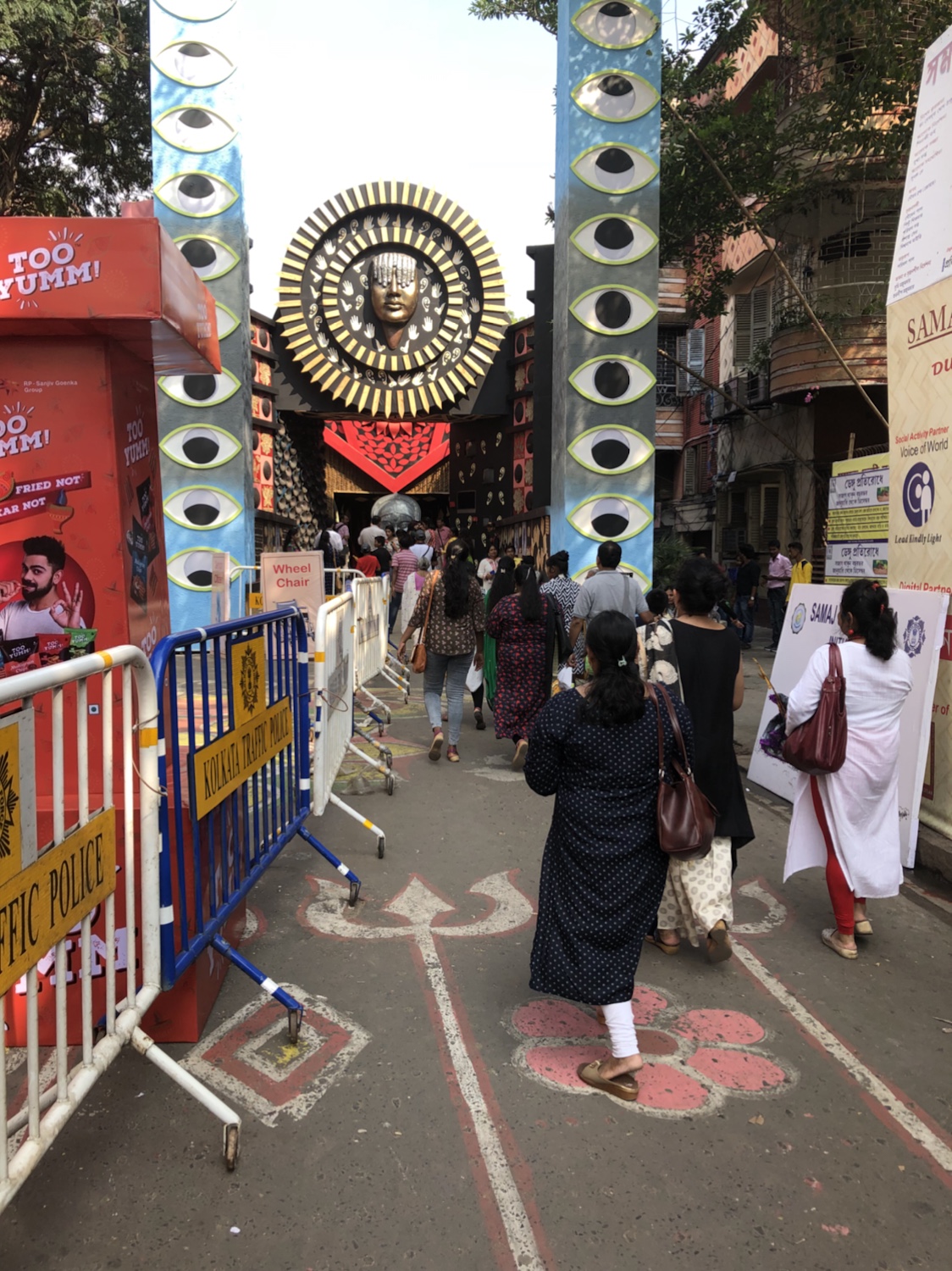 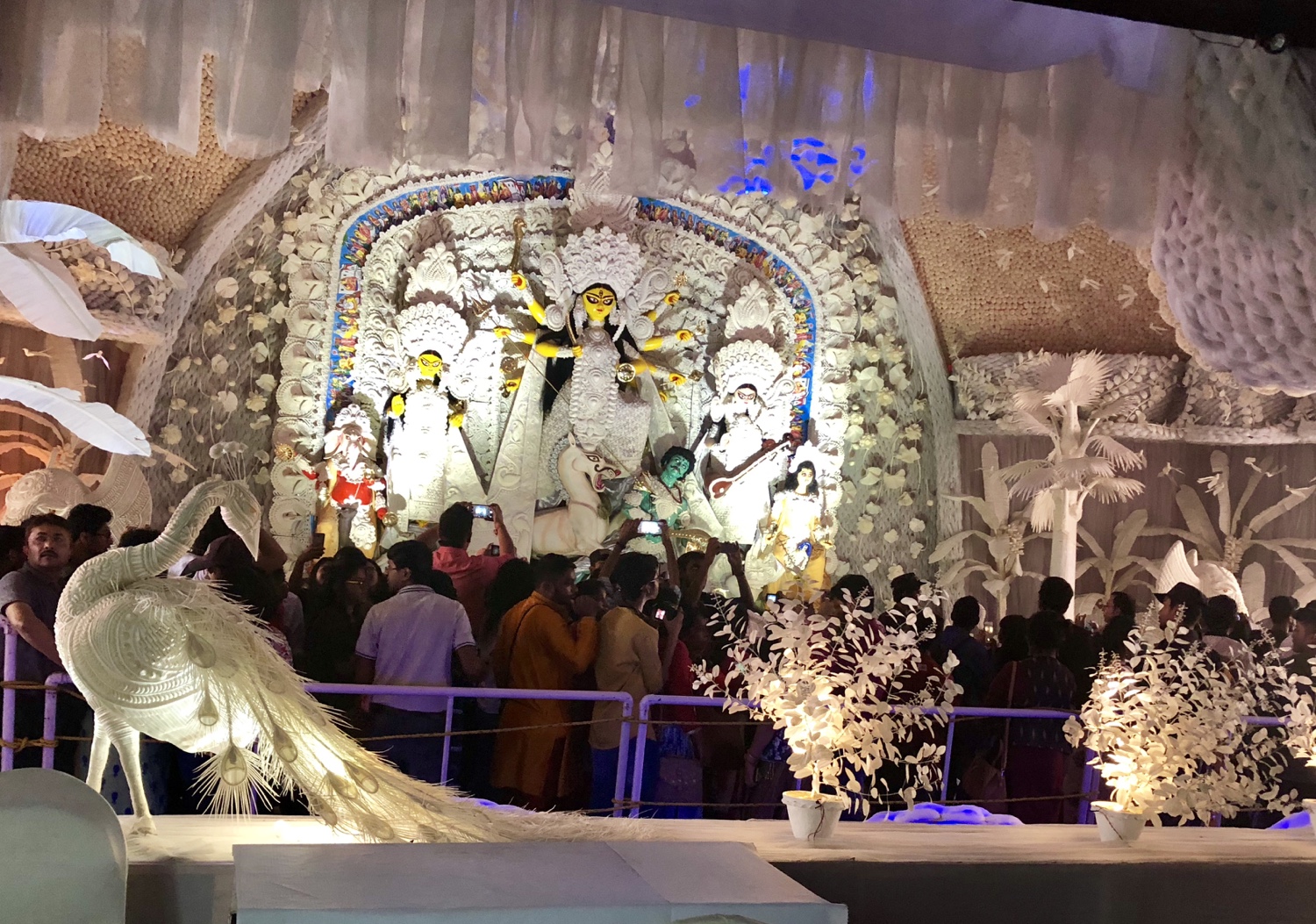 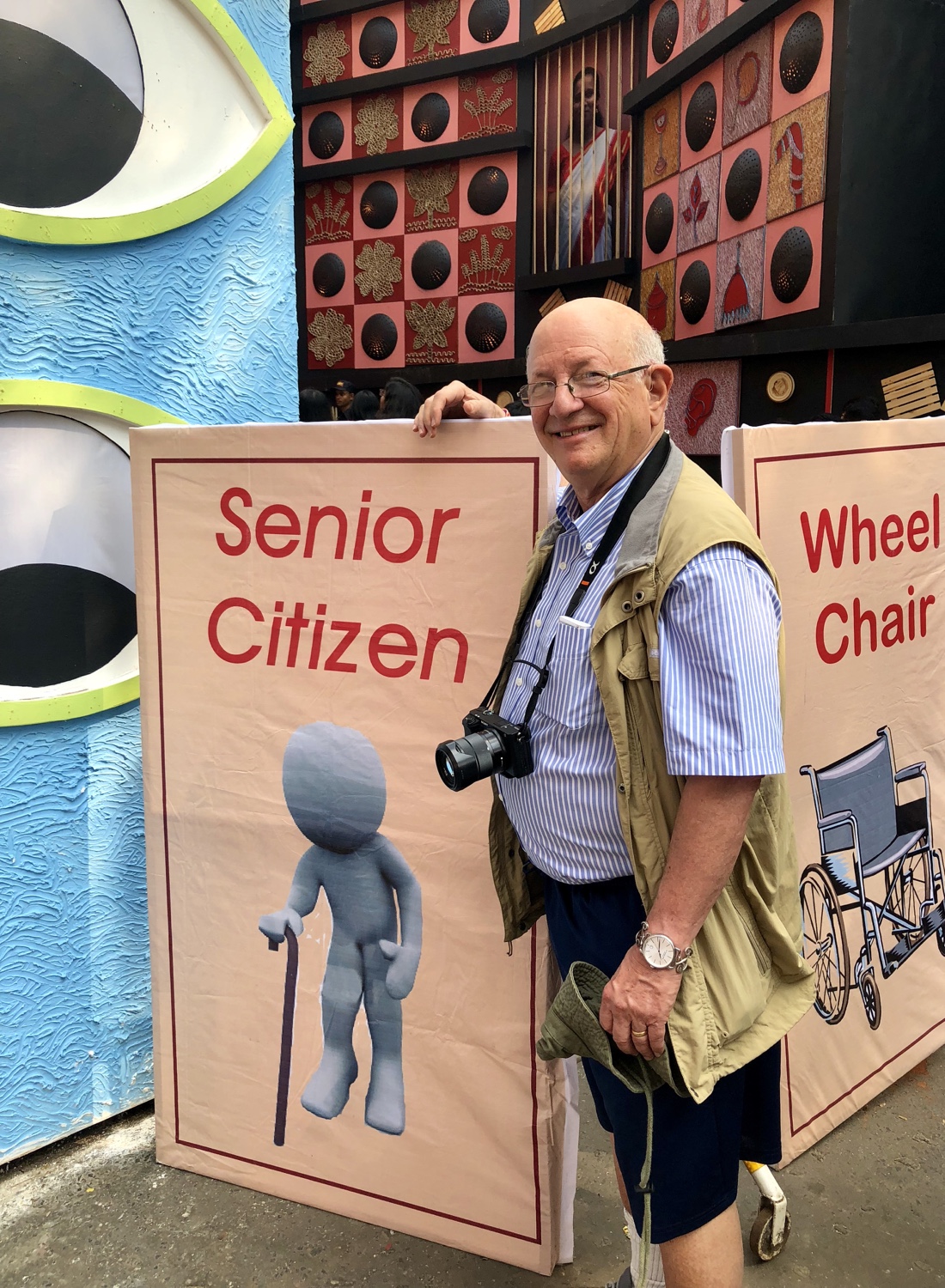
Remember: all of these pandals are created for the ten days of the festival, and then taken down.
I think my favorite photographs, though, are of street scenes that just happen.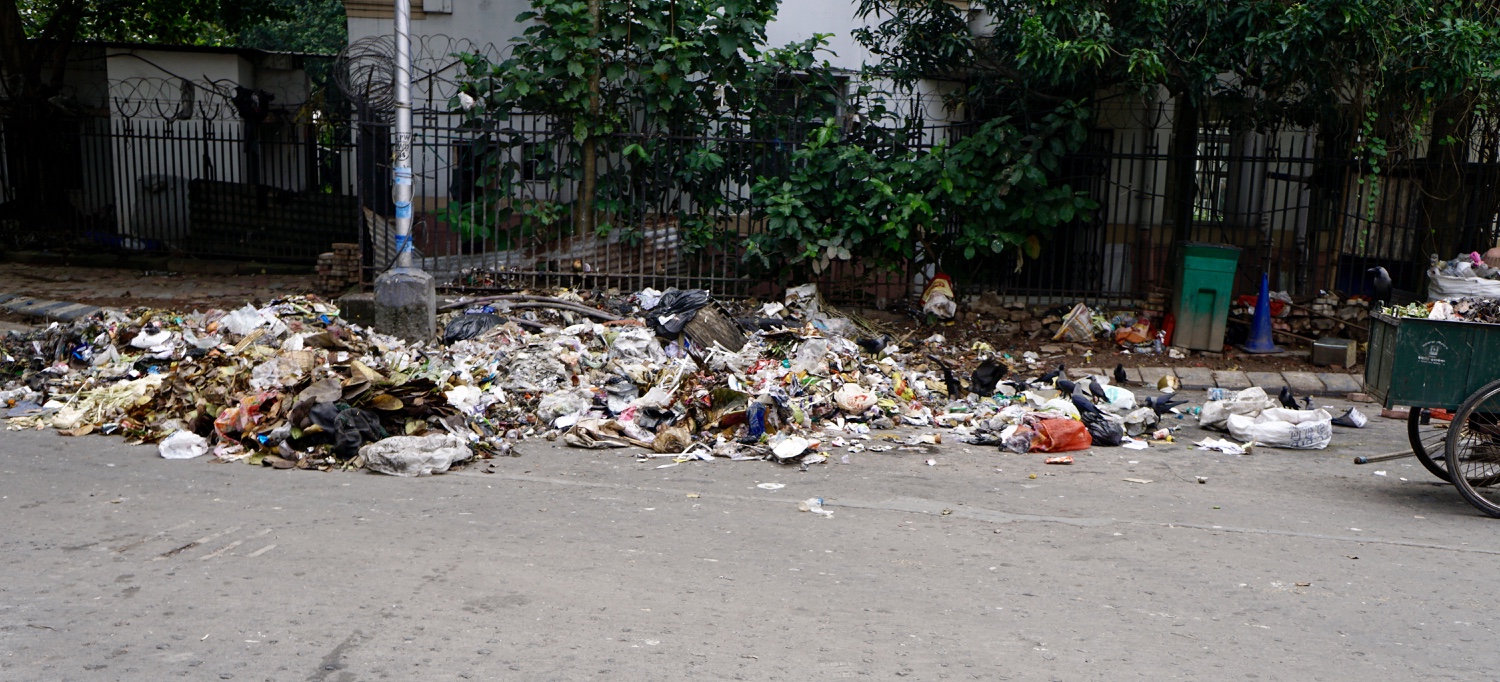 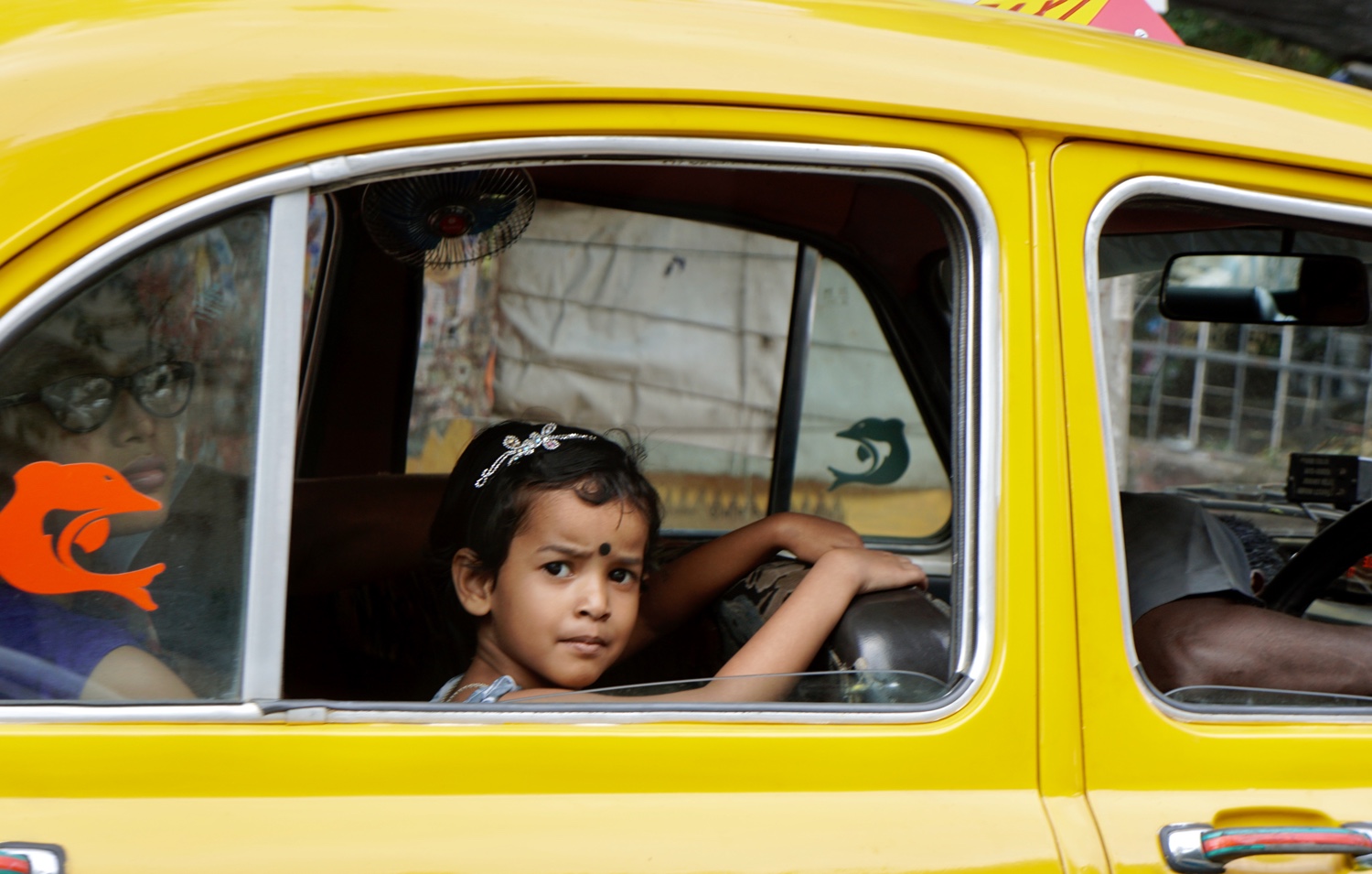 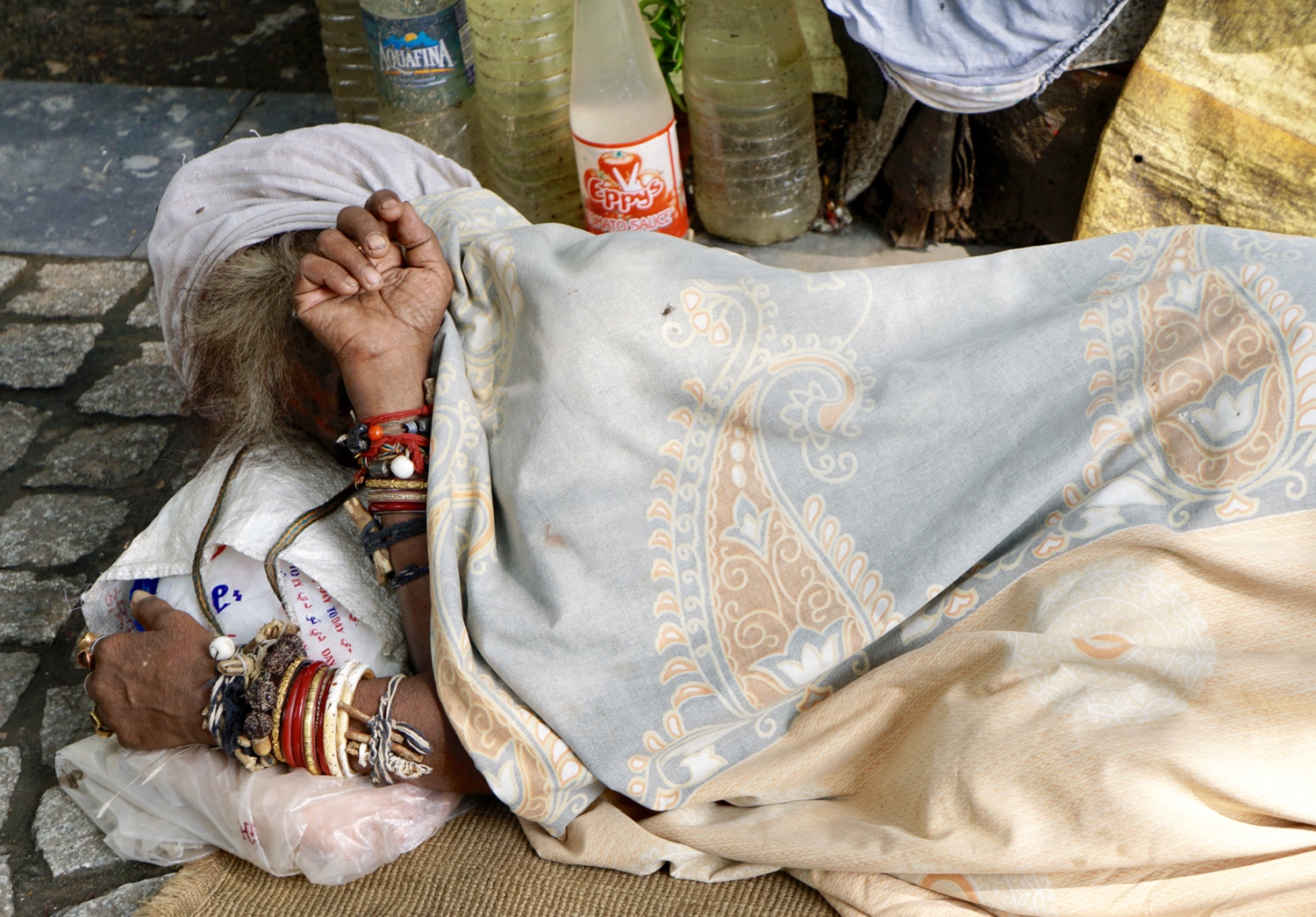 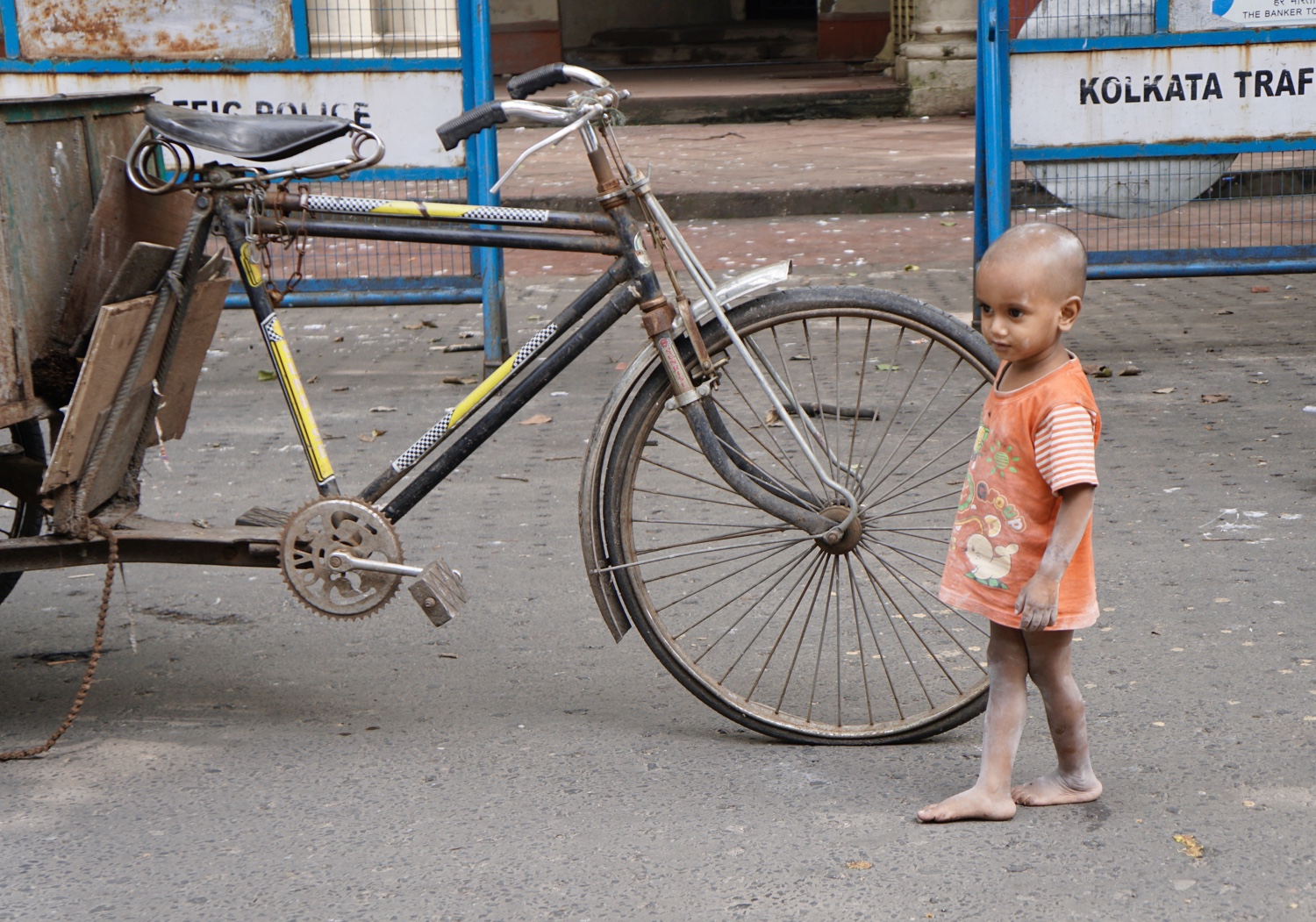 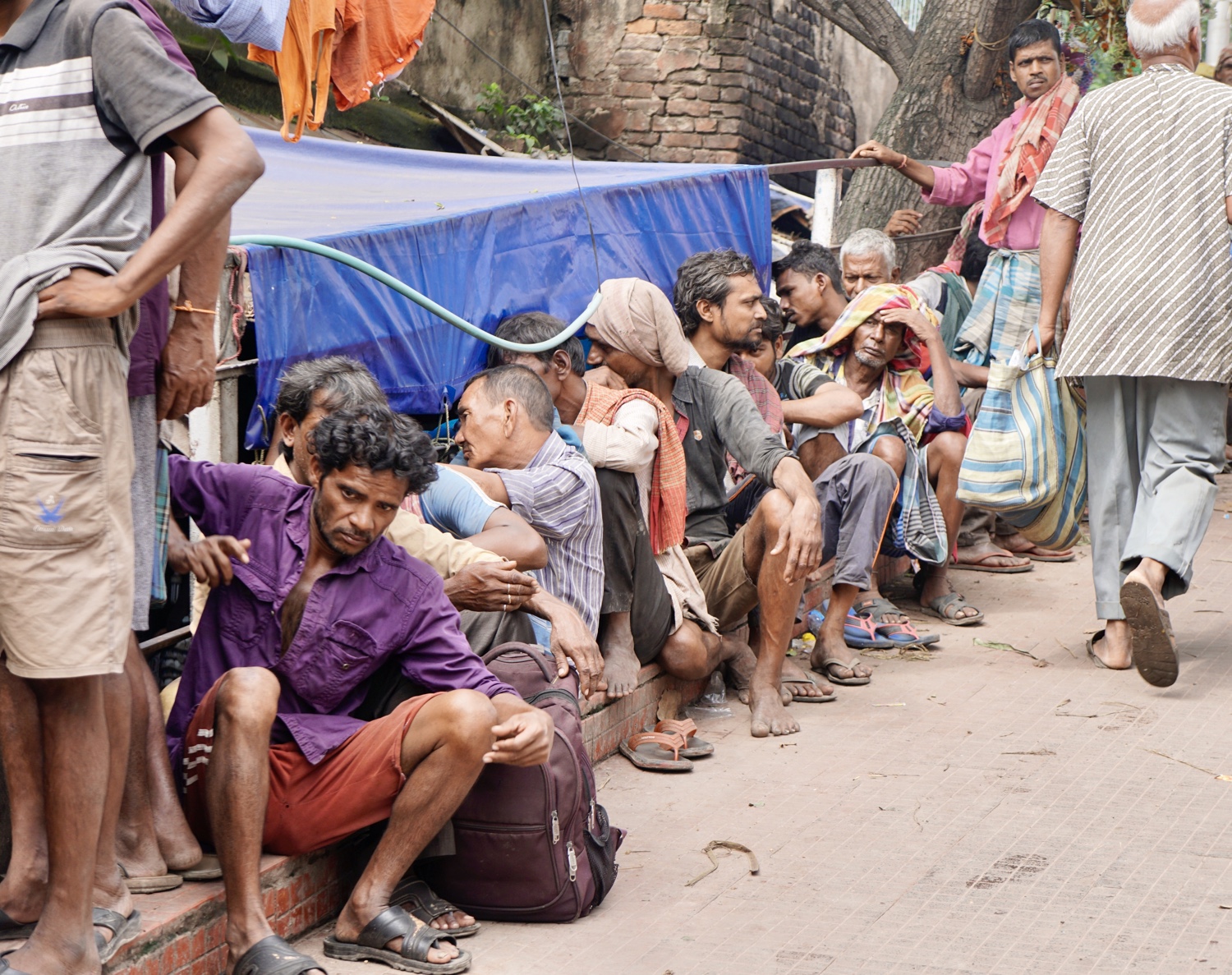 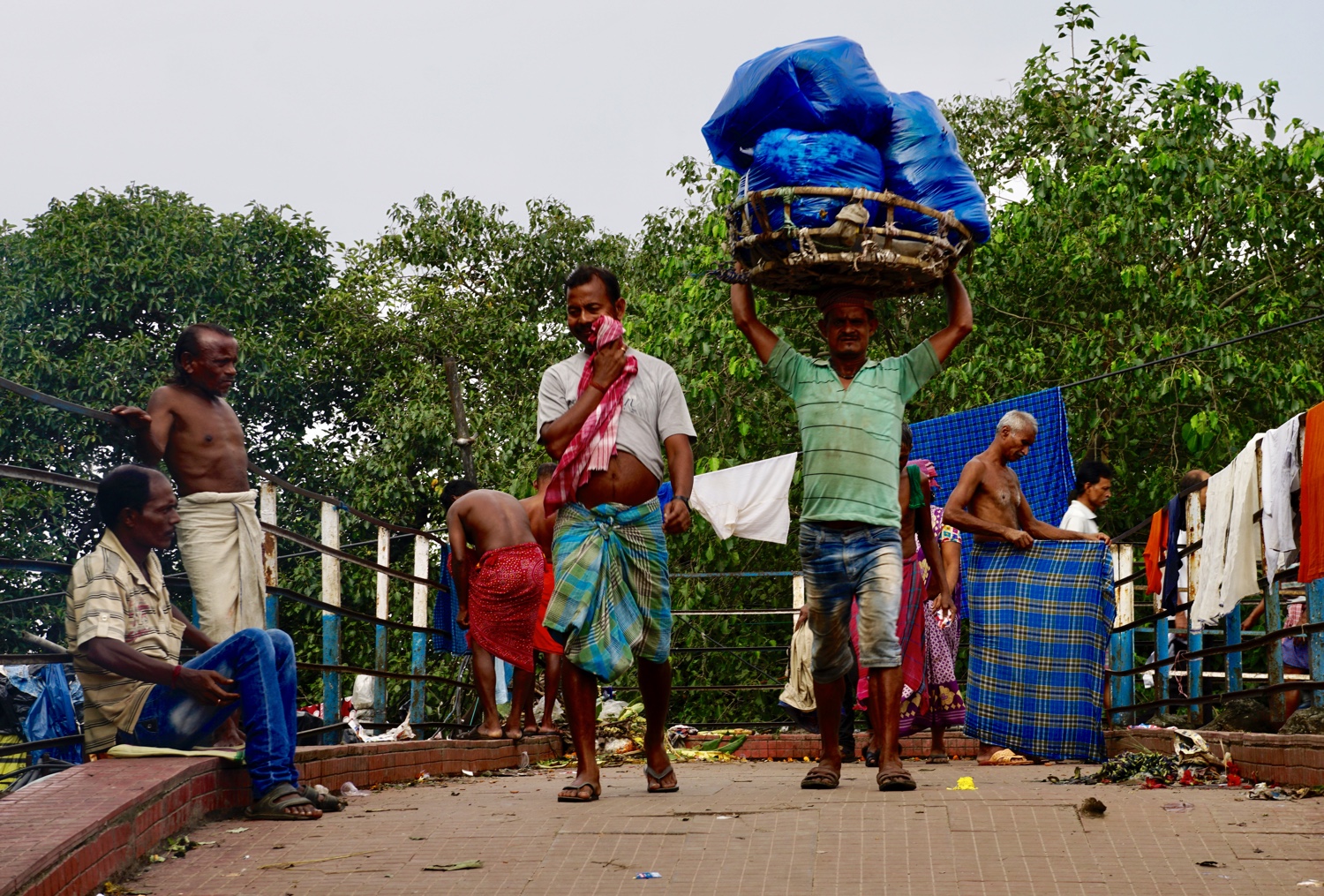 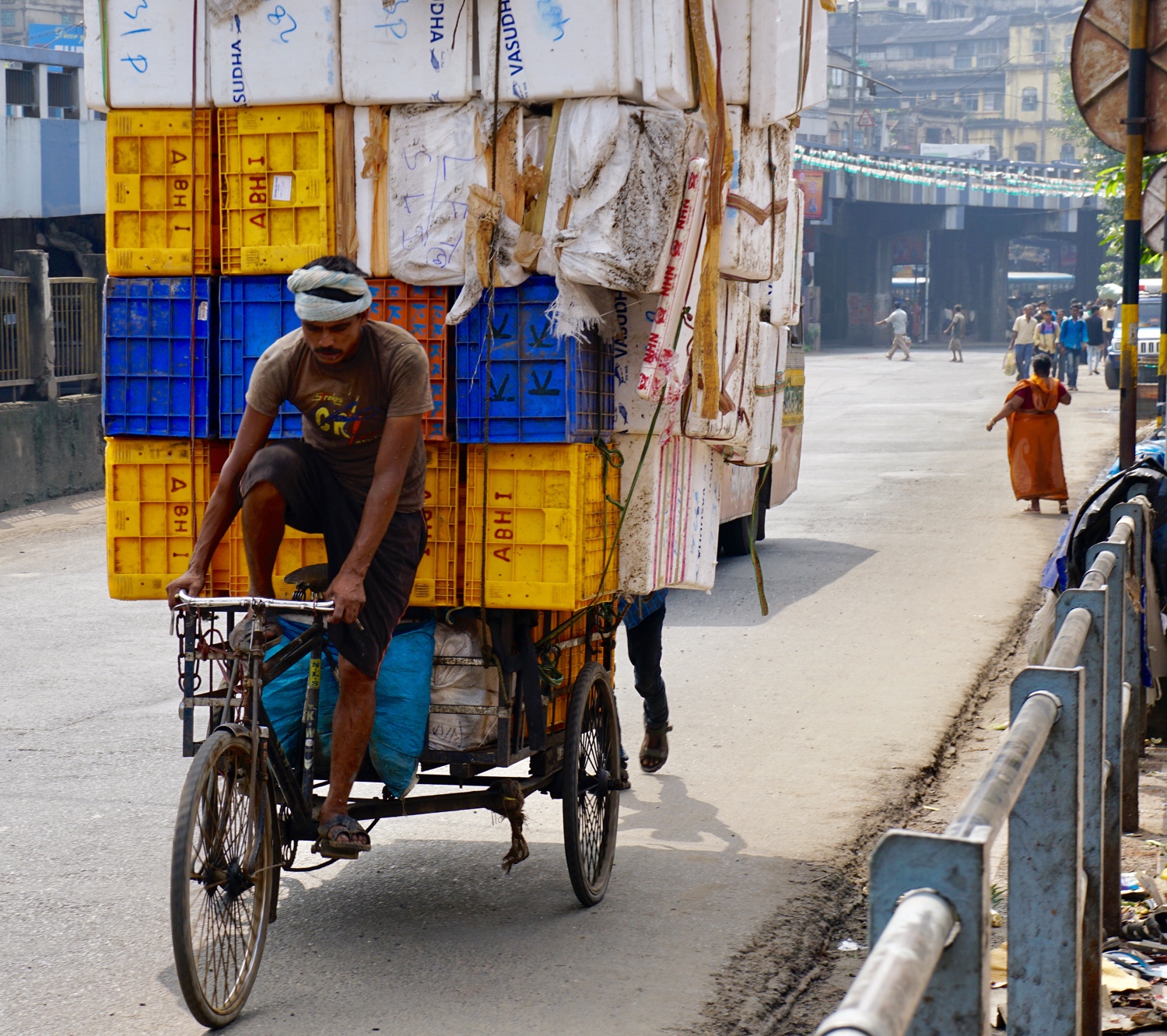 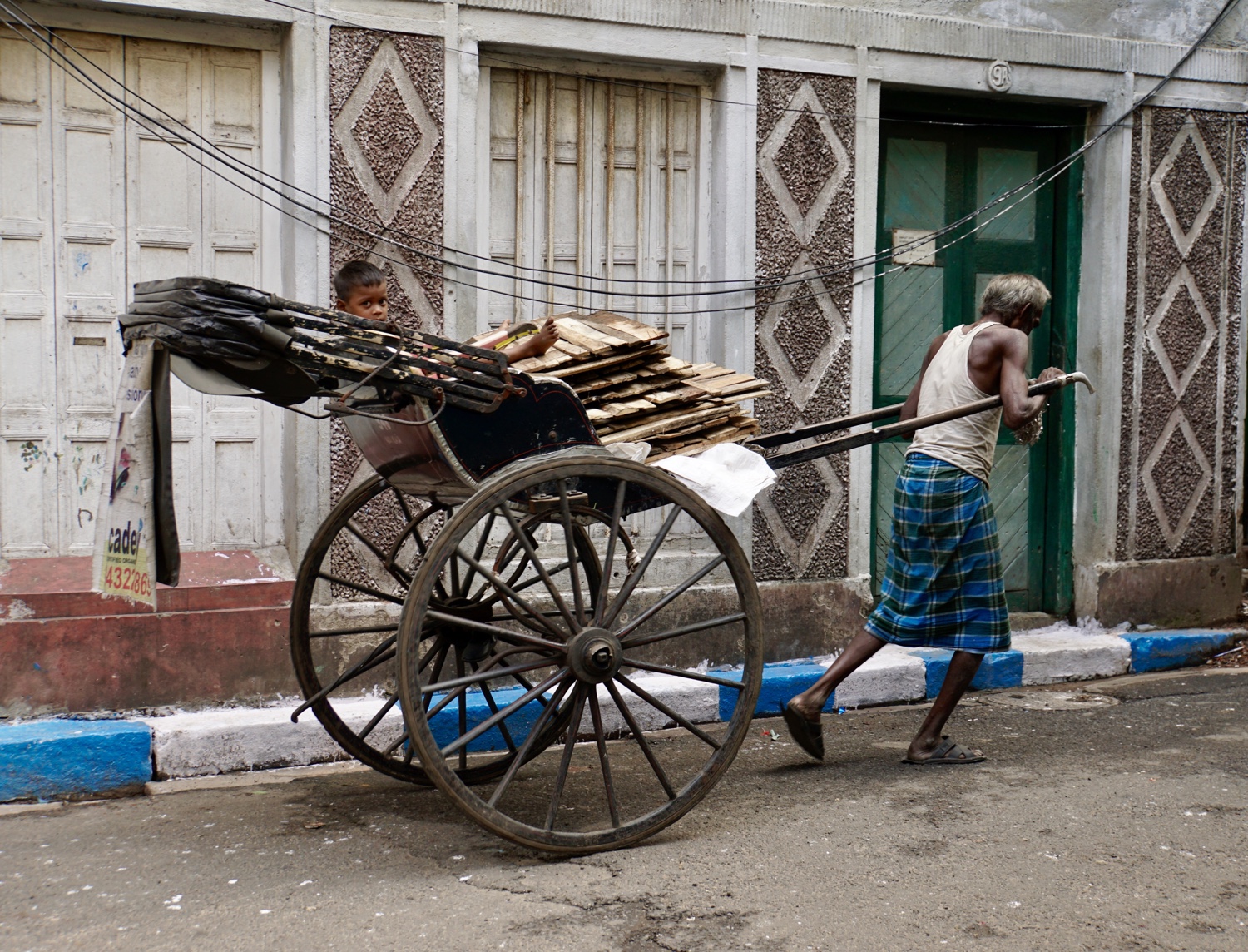 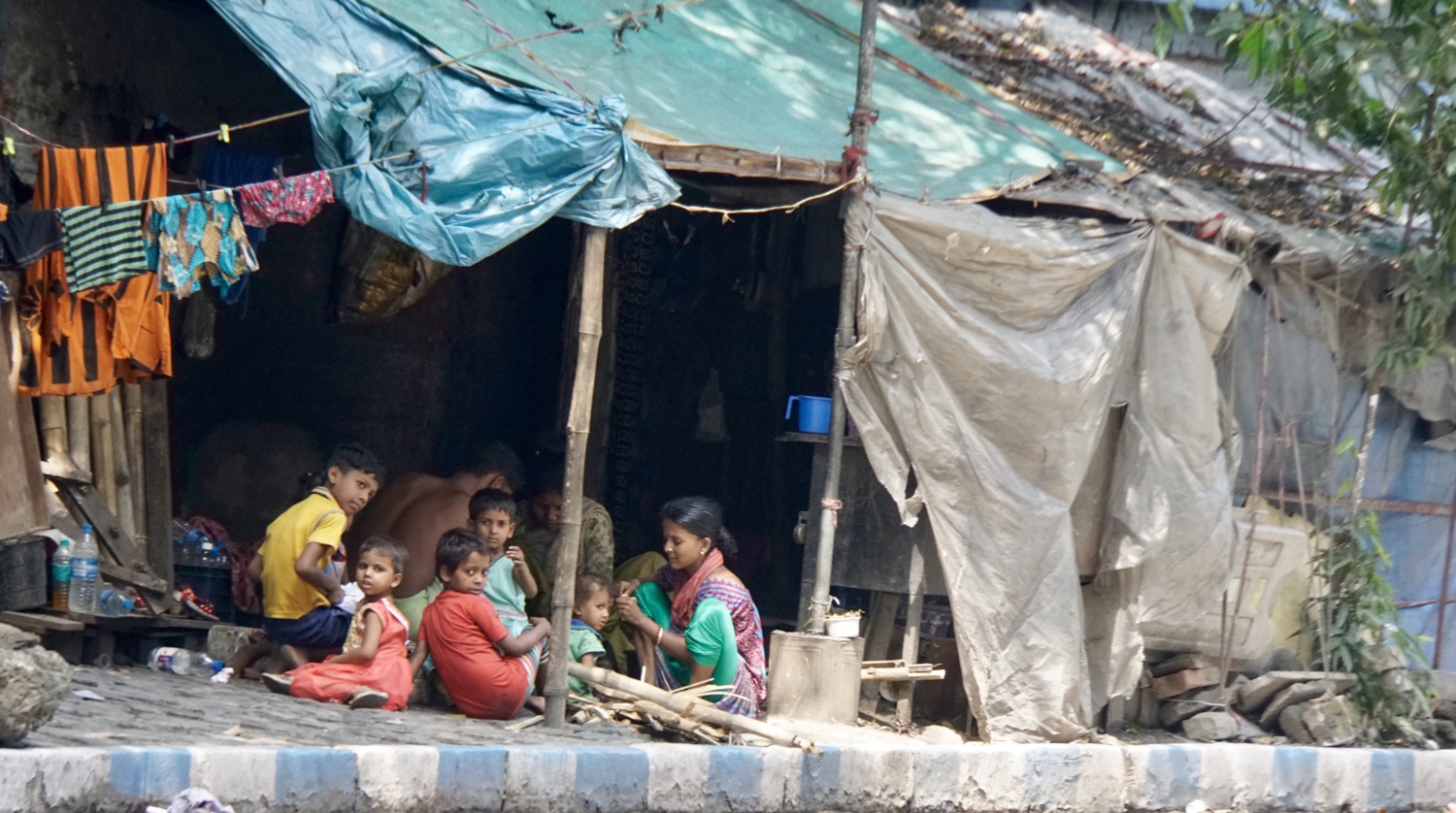 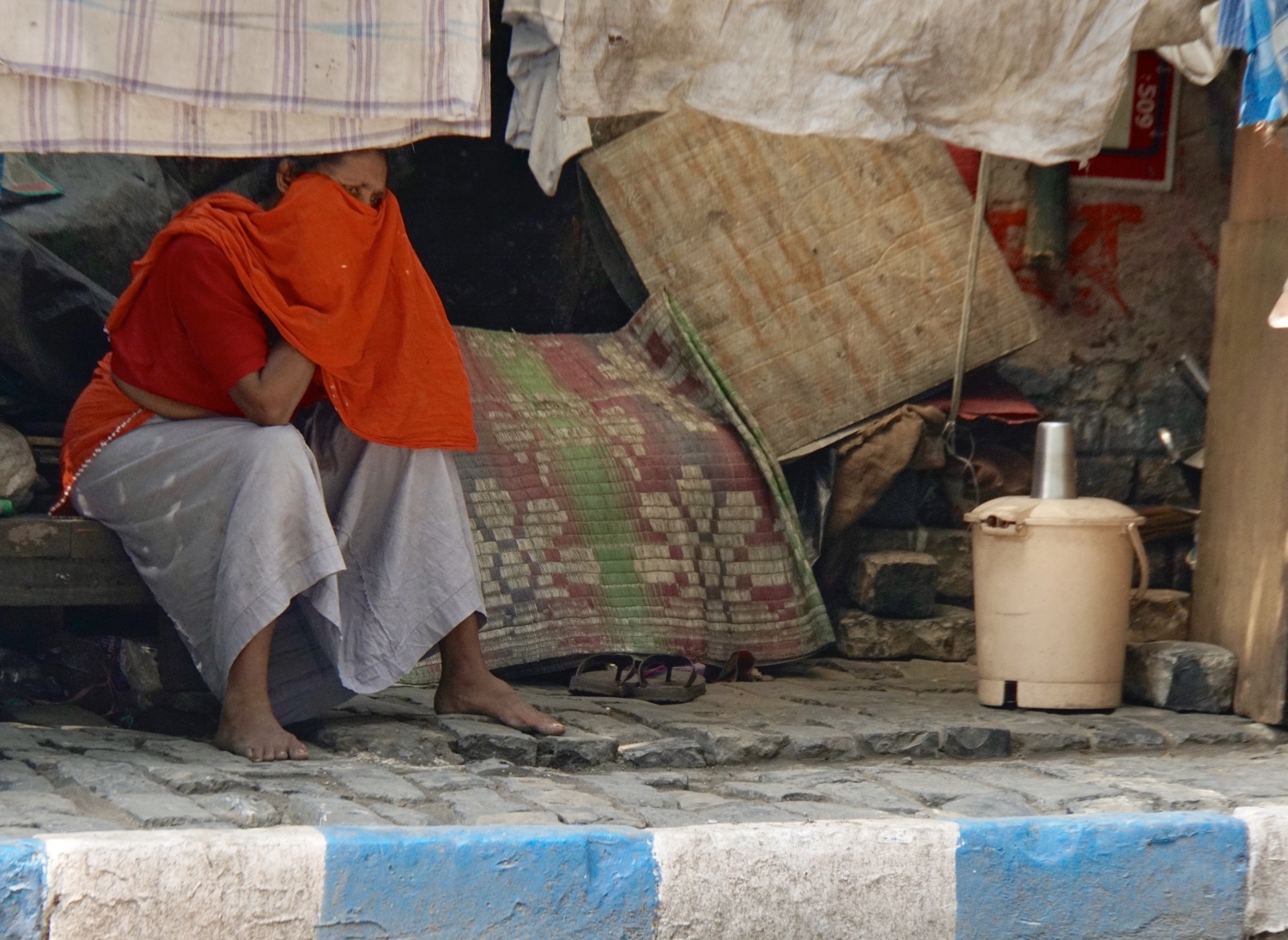 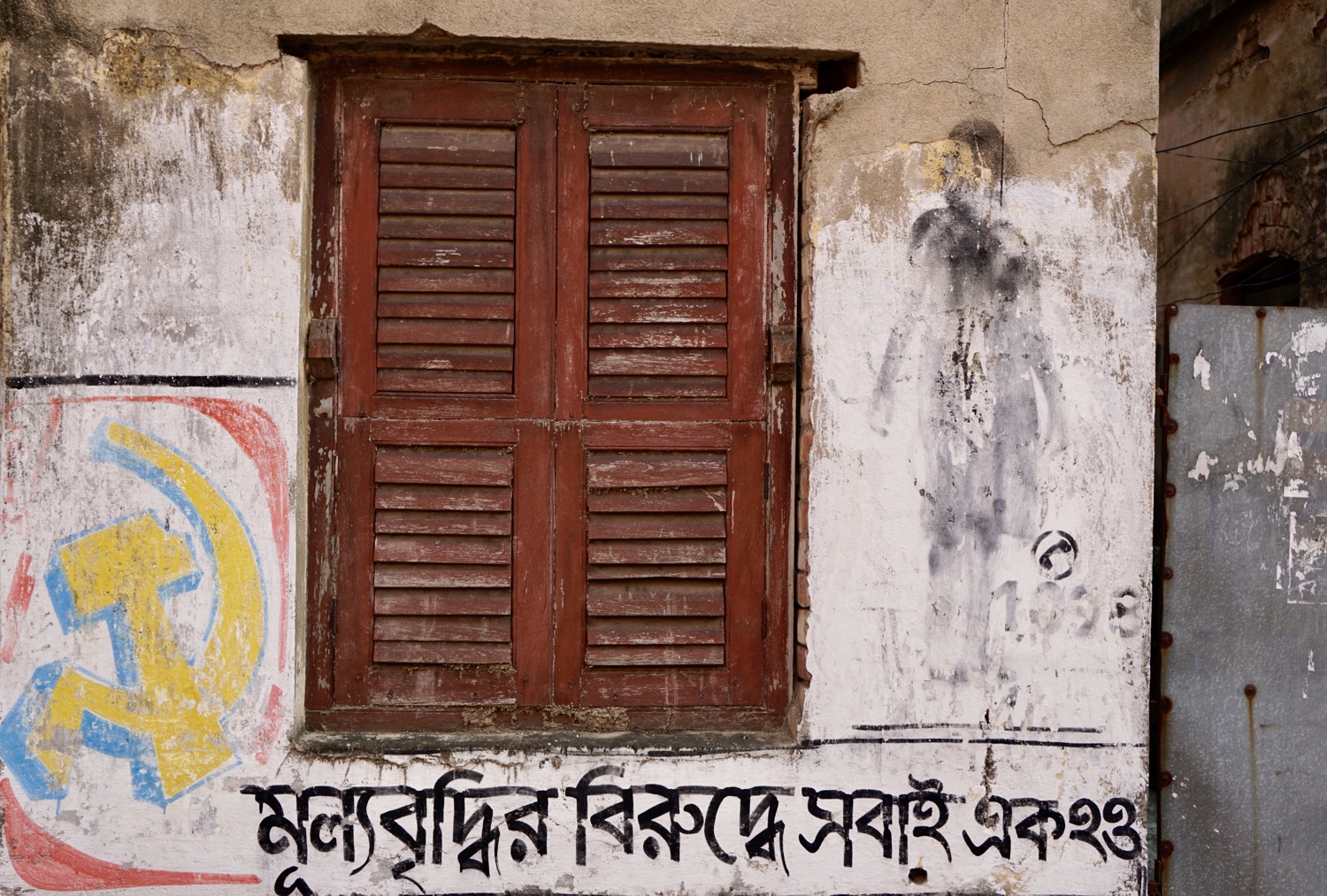
Partha wanted to take me by the Taj Hotel on our way back, because he’s friendly with the concierge there and I think is trying to drum up business for them. It’s a big, modern, five-star hotel that’s very nice, but not nearly as appealing to me as the Oberoi. I told Patha, but not the concierge this.
We returned to the hotel a bit after four, tired from the heat and humidity, as well has all the activity. During the course of the day, we drove by or through various other things, that I have spared you hearing about.
Showered, began to get ready for tomorrow and went down for dinner at the fancy Thai restaurant in the hotel. Meal was just terrific; not good, not excellent, but terrific. Asked chef to come out so that I could tell him. Even people who think/know that they are good like to hear it from others. I also think that it’s incumbent on those of us who are not bashful about pointing out when something is not right to let people know when something is done well. Chef seemed very pleased.
So far, I’m getting along well with myself, but I’ve been on my best behavior, and know that I can be difficult from time to time. I’m expecting a distinct downgrade in my accommodations for the rest of the trip, but hoping that my guide experience will continue to be excellent.
I’m heading into the hinterlands tomorrow, so internet may or may not be available. I’ll do what I can, but if I’m unable to post, try to muddle through without me, or go to the dualarts.com website and read blogs from old trips.
October 13
Too tired to sleep long, so I am up at 5:15. Ordered coffee in the room, check emails and work on the blog. I have pieces of my birthday cake cut boxed for Partha and my driver. Here is a view from my balcony.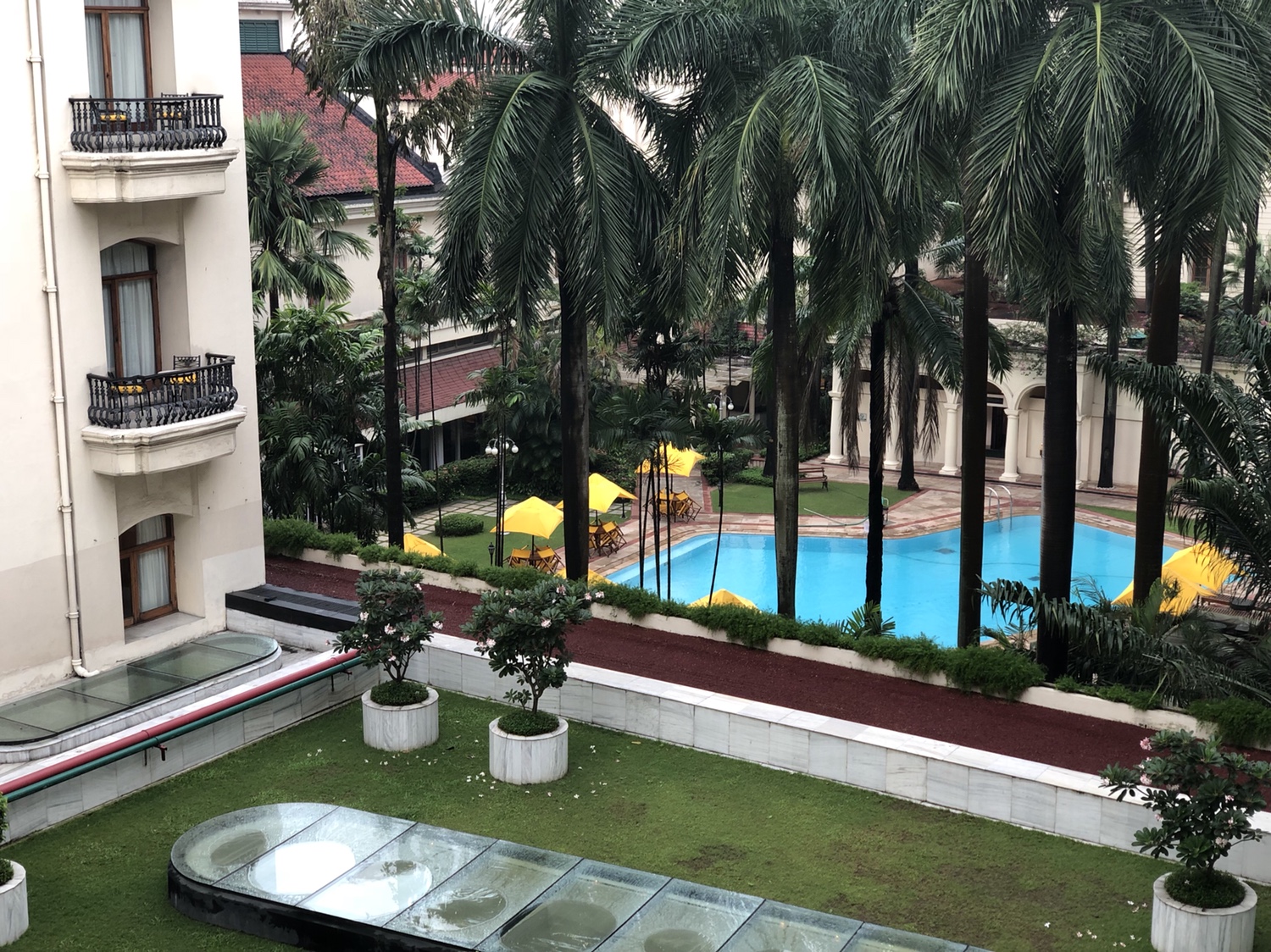
And here’s the shabby lobby.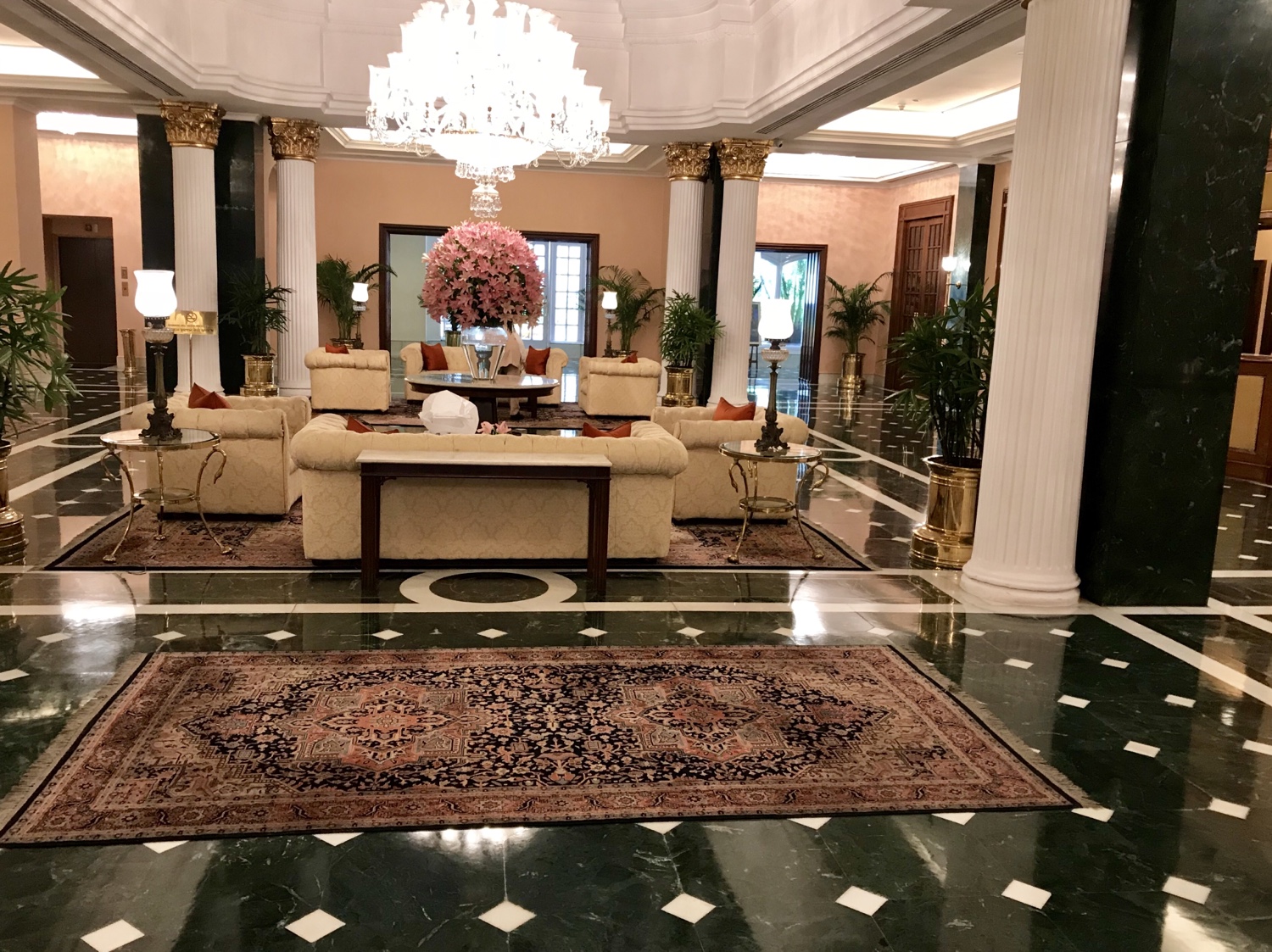
After a lavish breakfast at the Oberoi, I am met by by my guide, Partha. Last night, on the long drive from the airport to the hotel, we spoke about the festival that is just beginning in Kolkata. Traffic was very heavy, because so many visitors are drawn to Kolkata for the festival. Although I was very tired, Partha’s description was of sufficient interest that I easily stayed awake and talked with him.
I am in Kolkata during one of the most important festivals – Durga Puja. Even in the dark of night, I could see the bamboo structures that line the Main Street. This is a festival that the city prepares for the whole year. Idols are made at the Kumartulli, the potters’ village, new clothes planned months out and for one week the city shuts down as the mother goddess is welcomed to her earthly home. The celebration is comparable to Christmas in the US, and every bit as commercial. Corporations now sponsor building of pandals, huge marquees, many resembling some of the most famous temples in India and housing elaborate images of the goddess. Throughout the day various rituals are performed and people gather to socialize, gossip, and enjoy the food stalls and carnivals. It is a huge party through the city
Durga Puja, celebrated throughout the country with great zeal and fervour, celebrates the triumph of good over the evil! It is basically the celebration of Hindus and on the day of Durga Puja Goddess Durga is revered for having killed the demon buffalo Mahishasura (Devil). This festival honors the power of the female Shakti Maa Durga, who is regarded by people of Kolkata as their mother, or daughter, as much as a goddess.
It is particularly celebrated in the state of West Bengal in Kolkata in the honor of celebrating the unfathomable power of Goddess Durga. This festival is celebrated during the span of the whole period of Navaratri for a time span of 10 days. From the sixth day of Navaratri till the ninth day the huge pandals of the Goddess Durga are open for the visitors. The tenth day of the Navaratri is called as Dashami and on this day the idols of the Goddess Durga are immersed into water and this process is called as Visarjan. Thus Durga emerges from the clay of the river and returns to the river, completing the cycle.
The chief director of West Bengal, Mamta (which means “kindness”) Banarjee, who was reelected for a second year term in 2016 is a big supporter of the festival. She has instituted for the last three years a kind of large carnival parade on the order of the carnival in Rio to celebrate the coming of the goddess. This is controversial, as some people think that it is not in keeping with the culture to have this kind of carnival here. But she persists and in fact she has given all workers for the government a holiday of SIXTEEN DAYS to celebrate the festival.
I am in time to watch the goddess’ arrival at the fabulous marquees (pandals) created for her and five days later, I will be able to watch her departure for her heavenly abode at the home of the BastarTribals in Jagdalpur.
It’s very difficult to capture the breadth of what I saw, with the making and decorating of idols, hoisting them onto carts, the street scenes with traffic so tight that drivers have to get out of cars to direct (loudly) oncoming traffic to avoid collisions, lots of dirt on the street, stray dogs sleeping around, but with vibrant shopping activity and cars, rather than the flood of motorbikes we saw in SE Asian countries. Elaborate pandals, indistinguishable from real structures, are constructed annually for the festival. Photos would not capture the pandals, because you’d take them for real buildings. The pandals started being built some 200 years ago by poorer communities to avoid their being excluded from the festivals that were previously the province of rich people.
Here are a bunch of photos of the idol activities and various street scenes.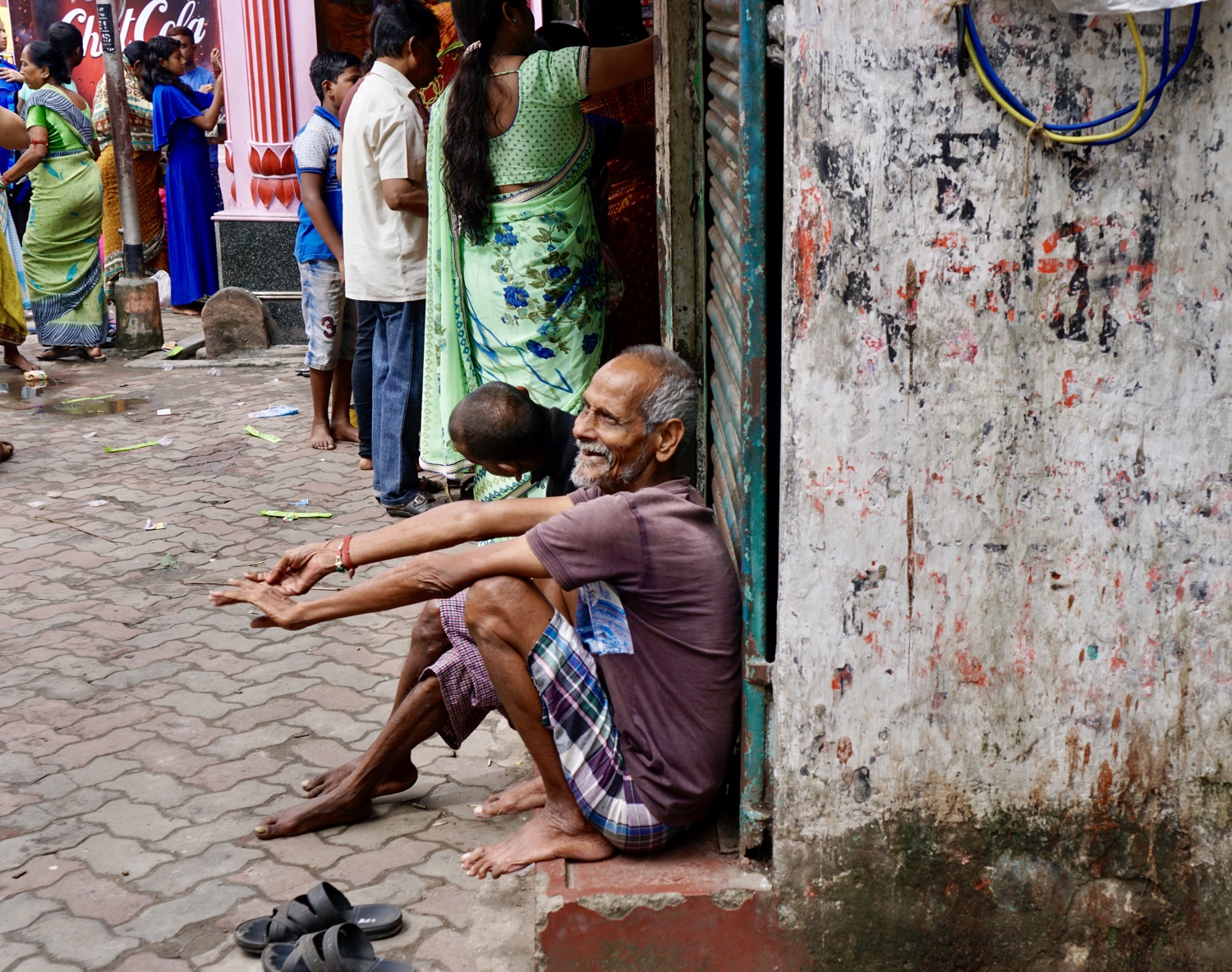 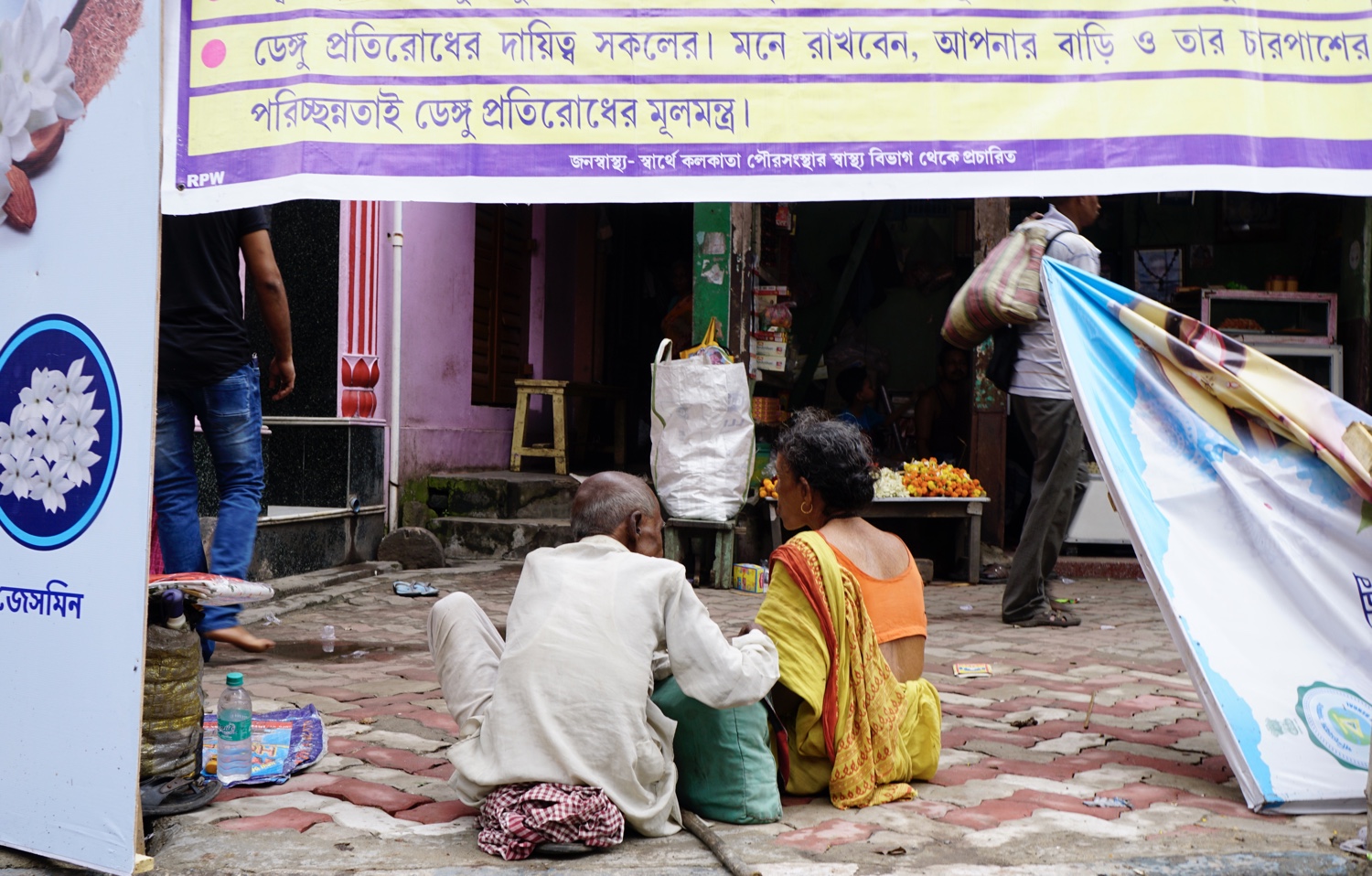 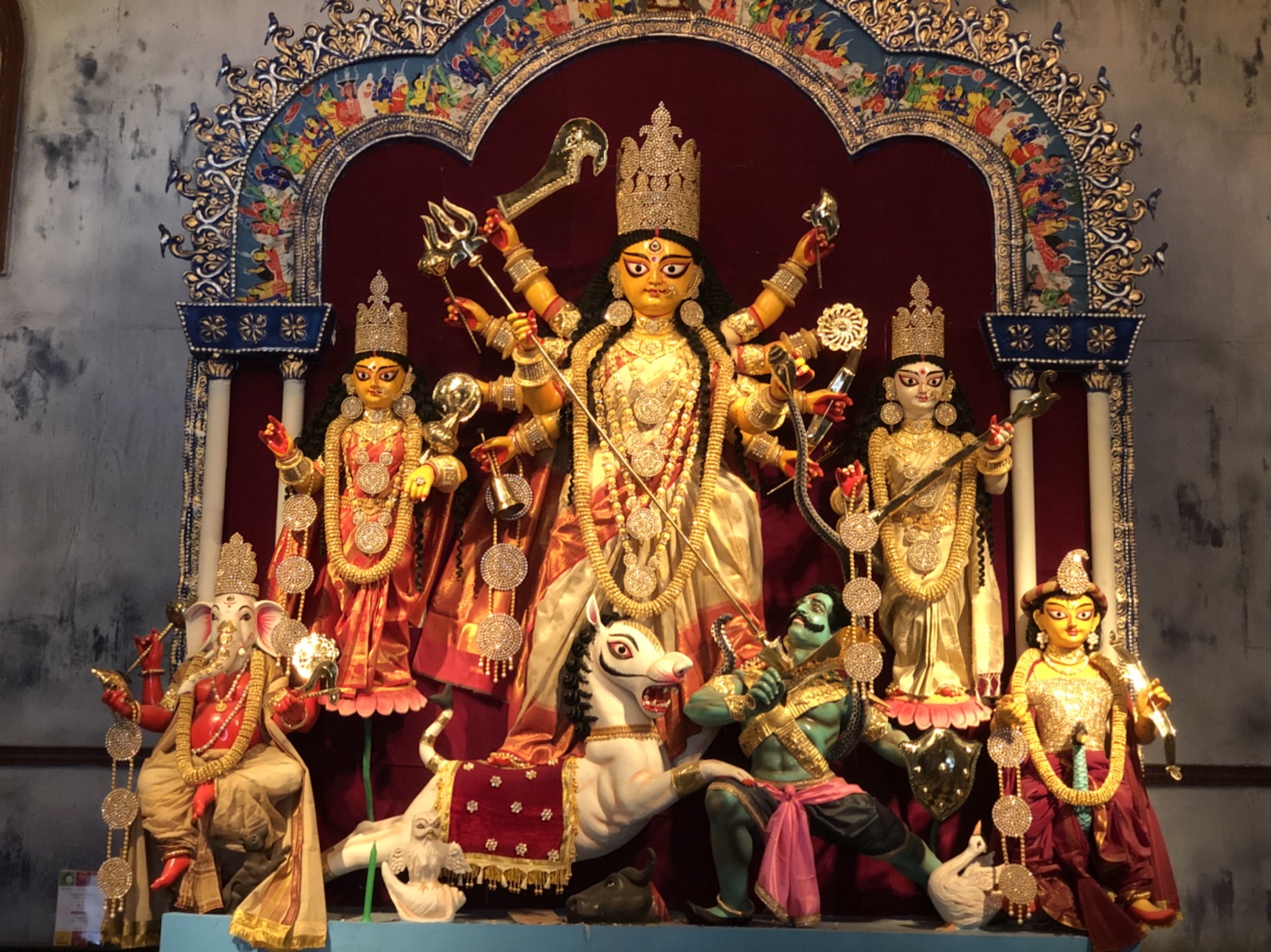 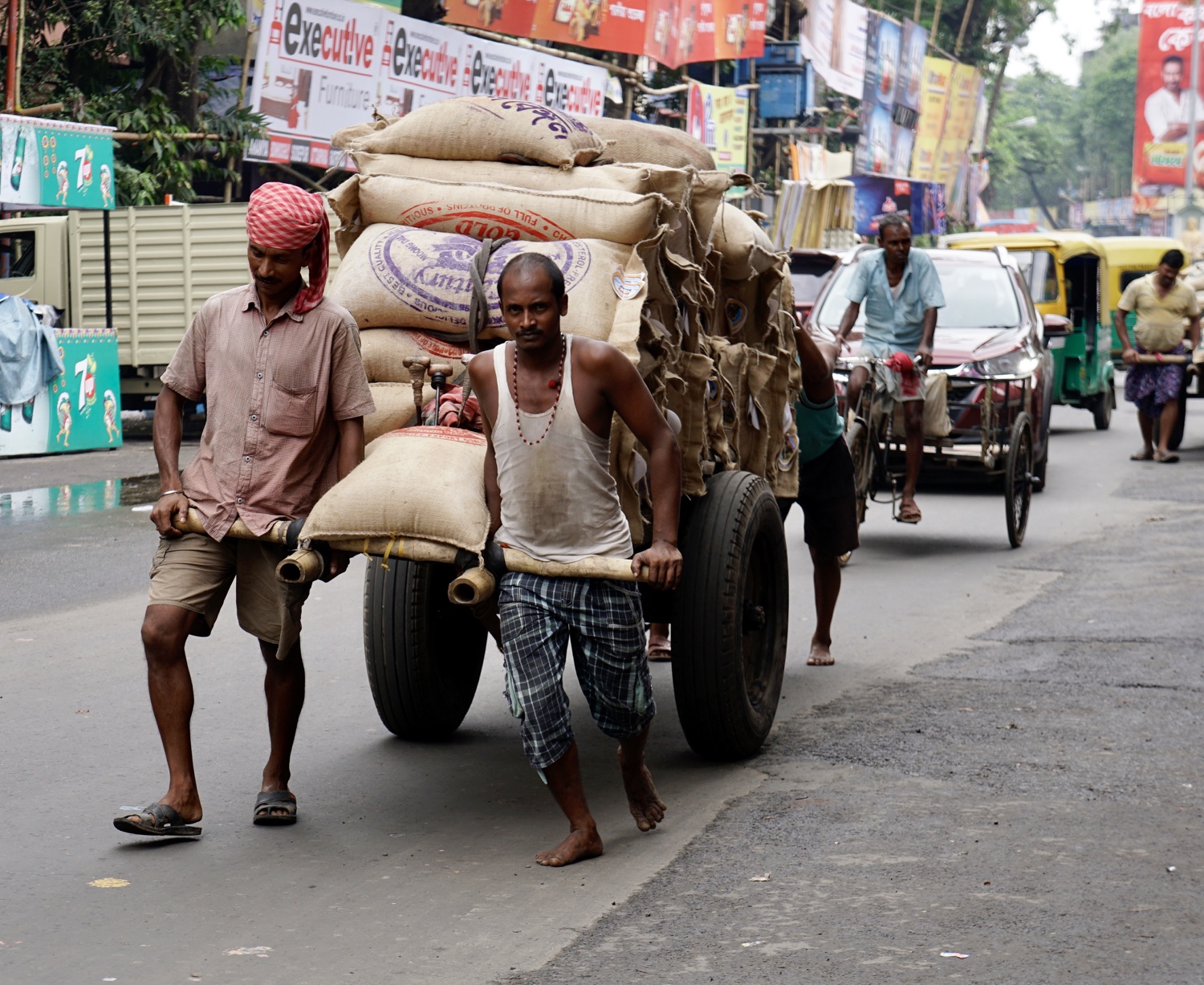 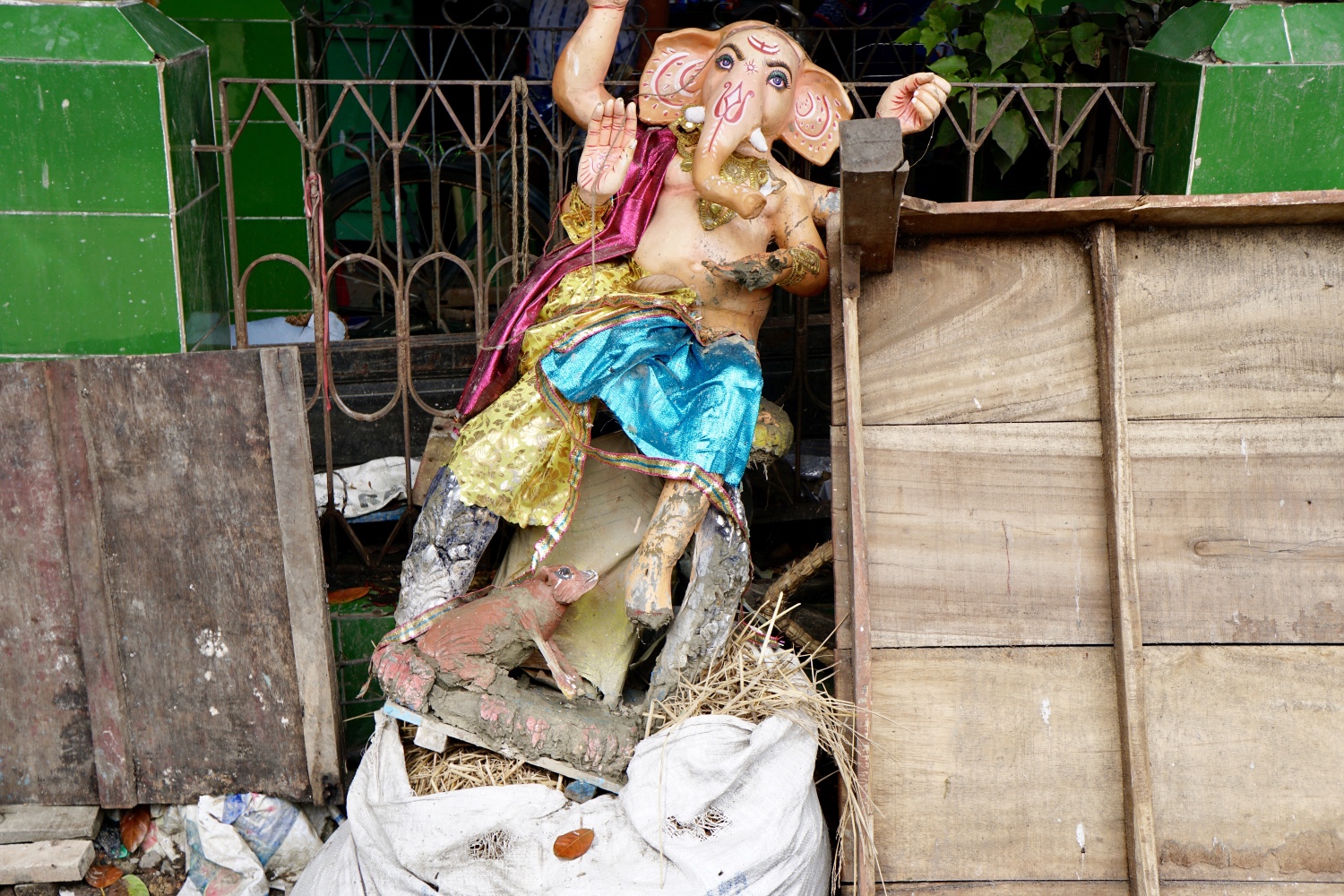 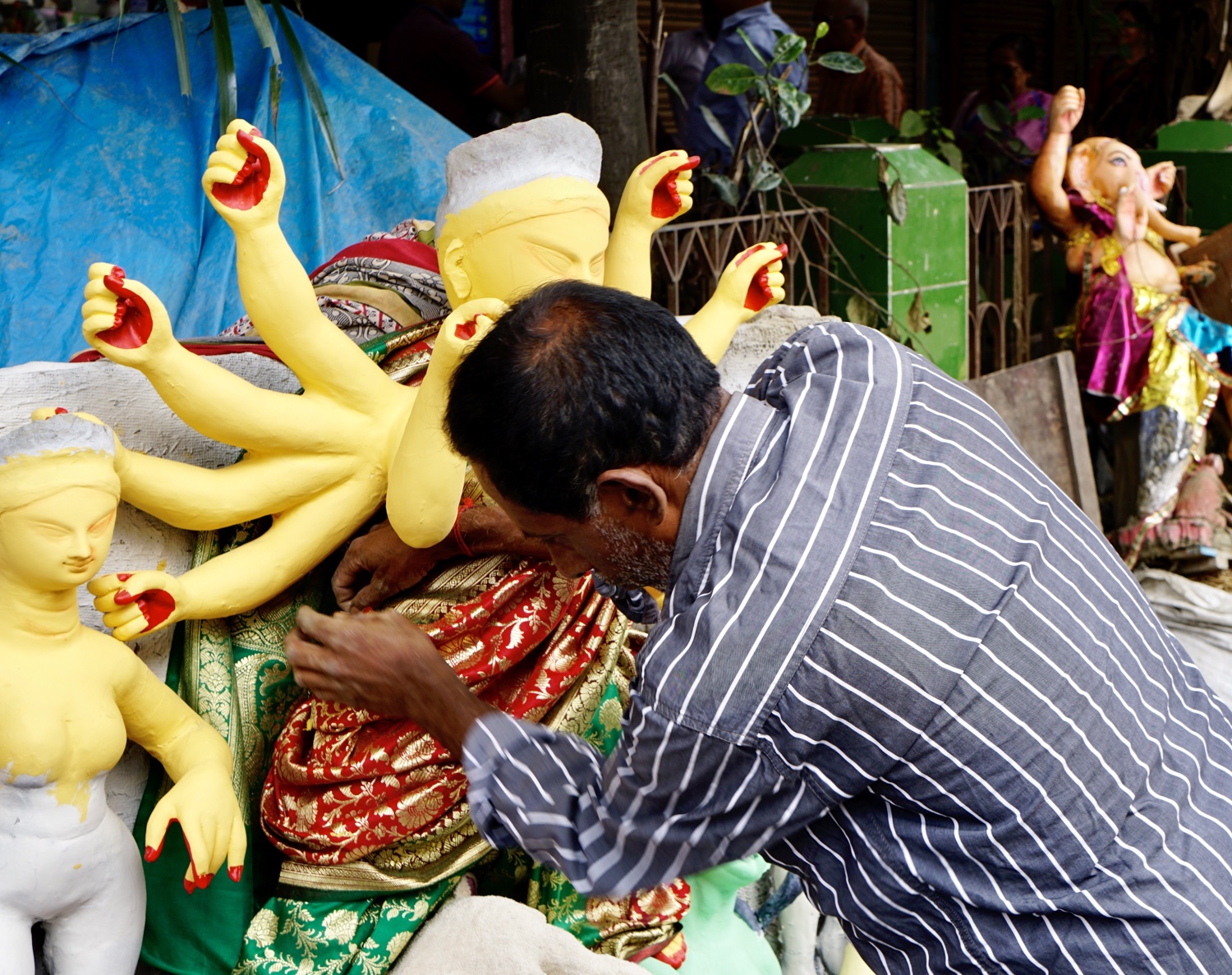 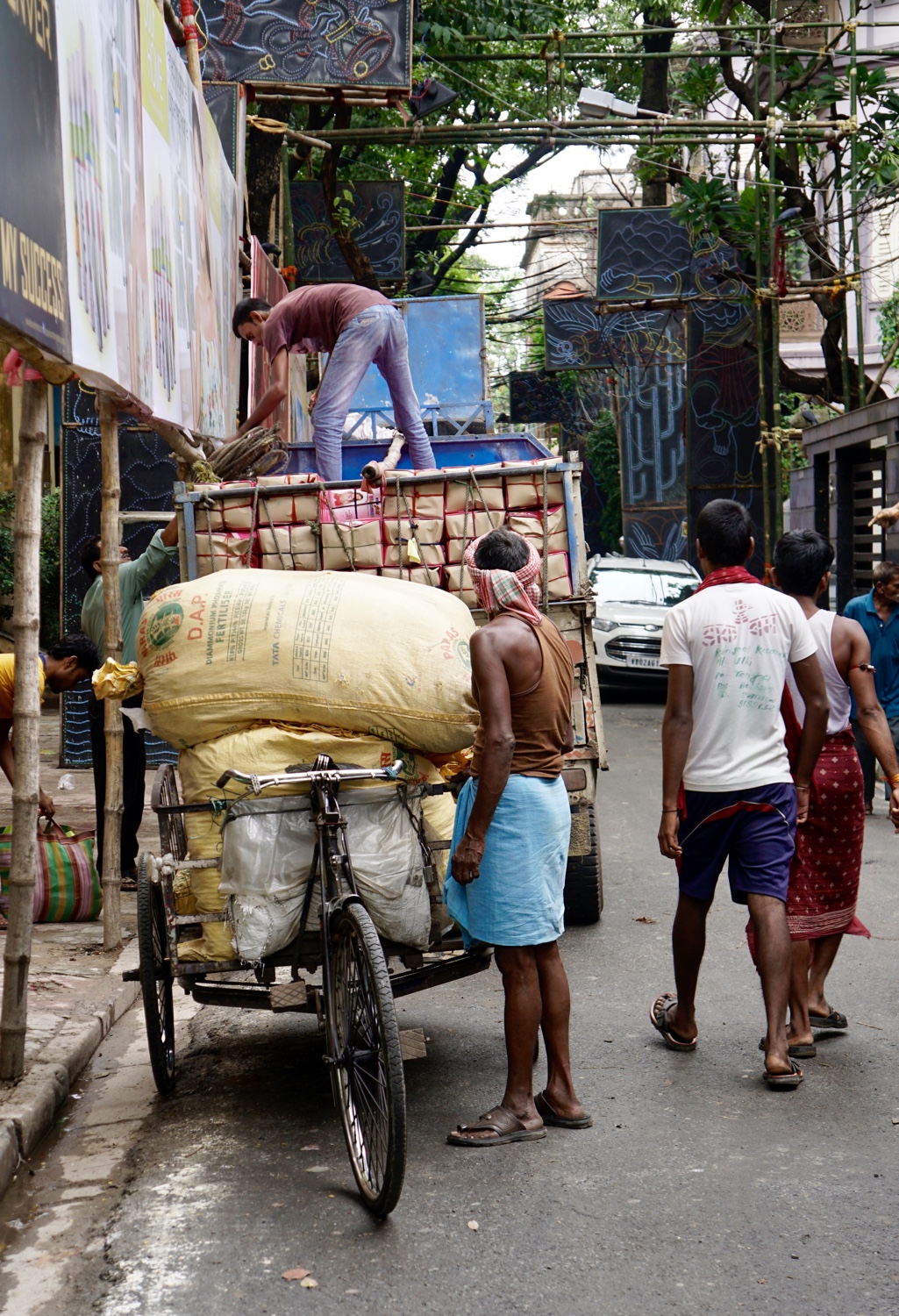 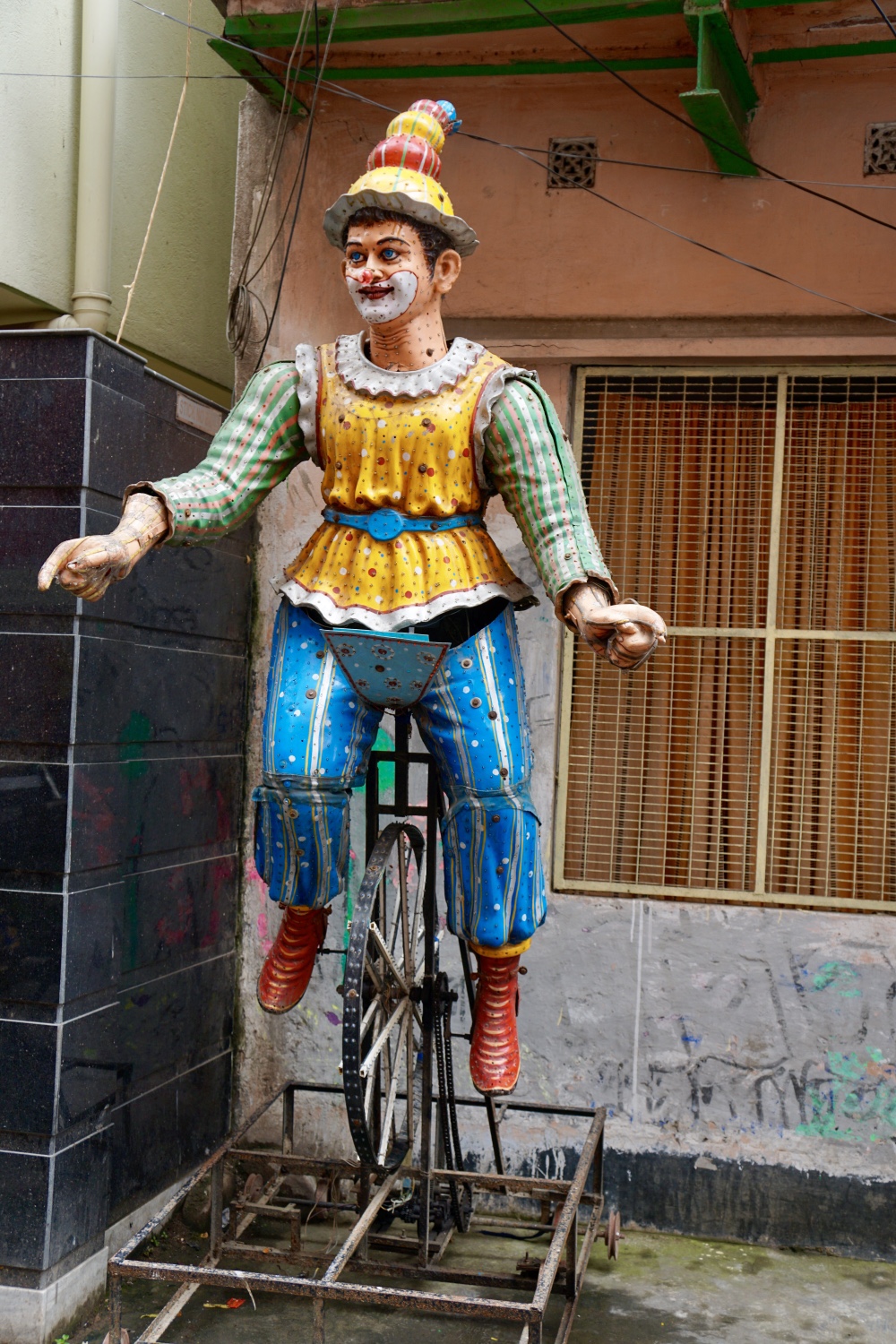 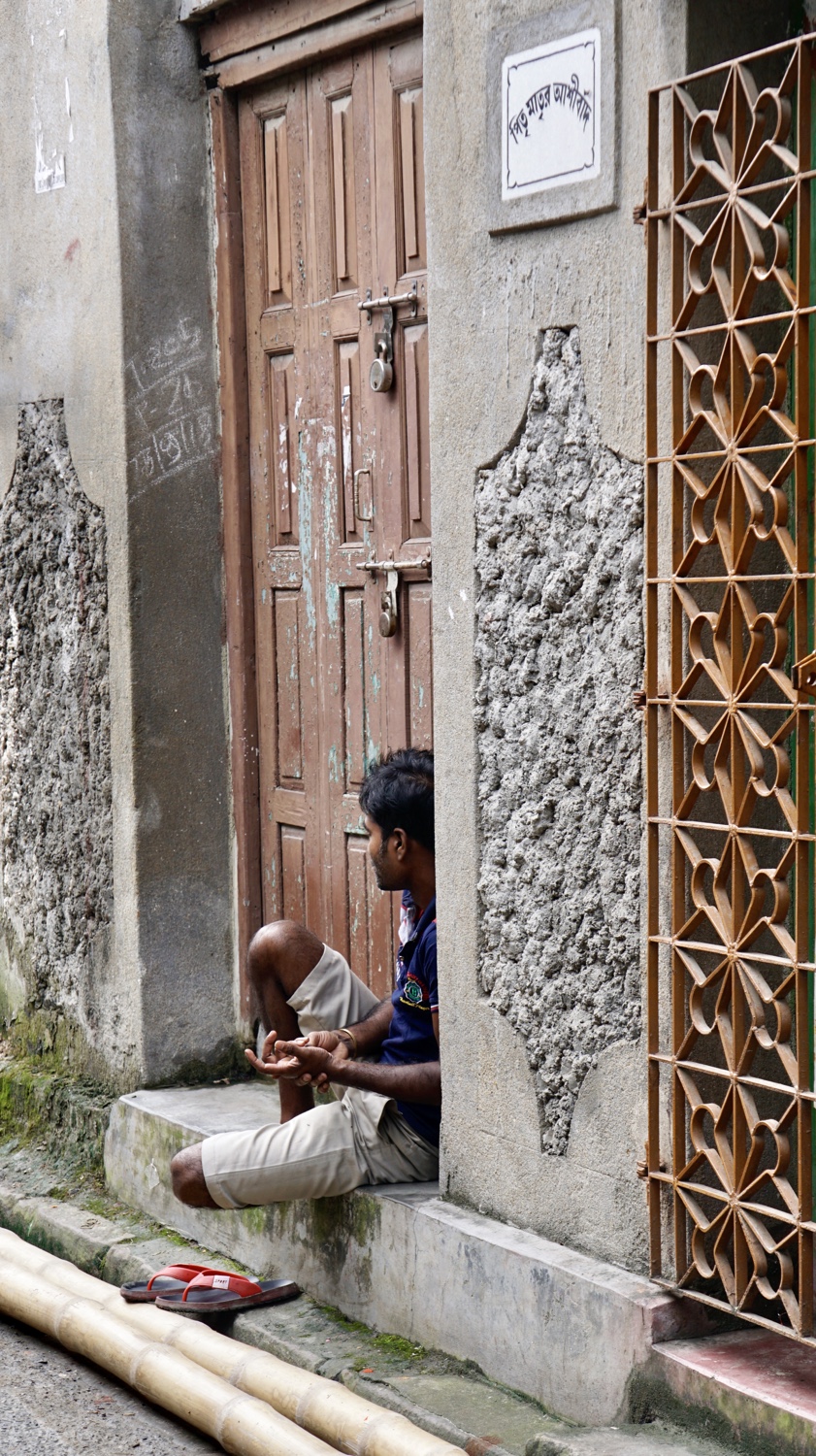 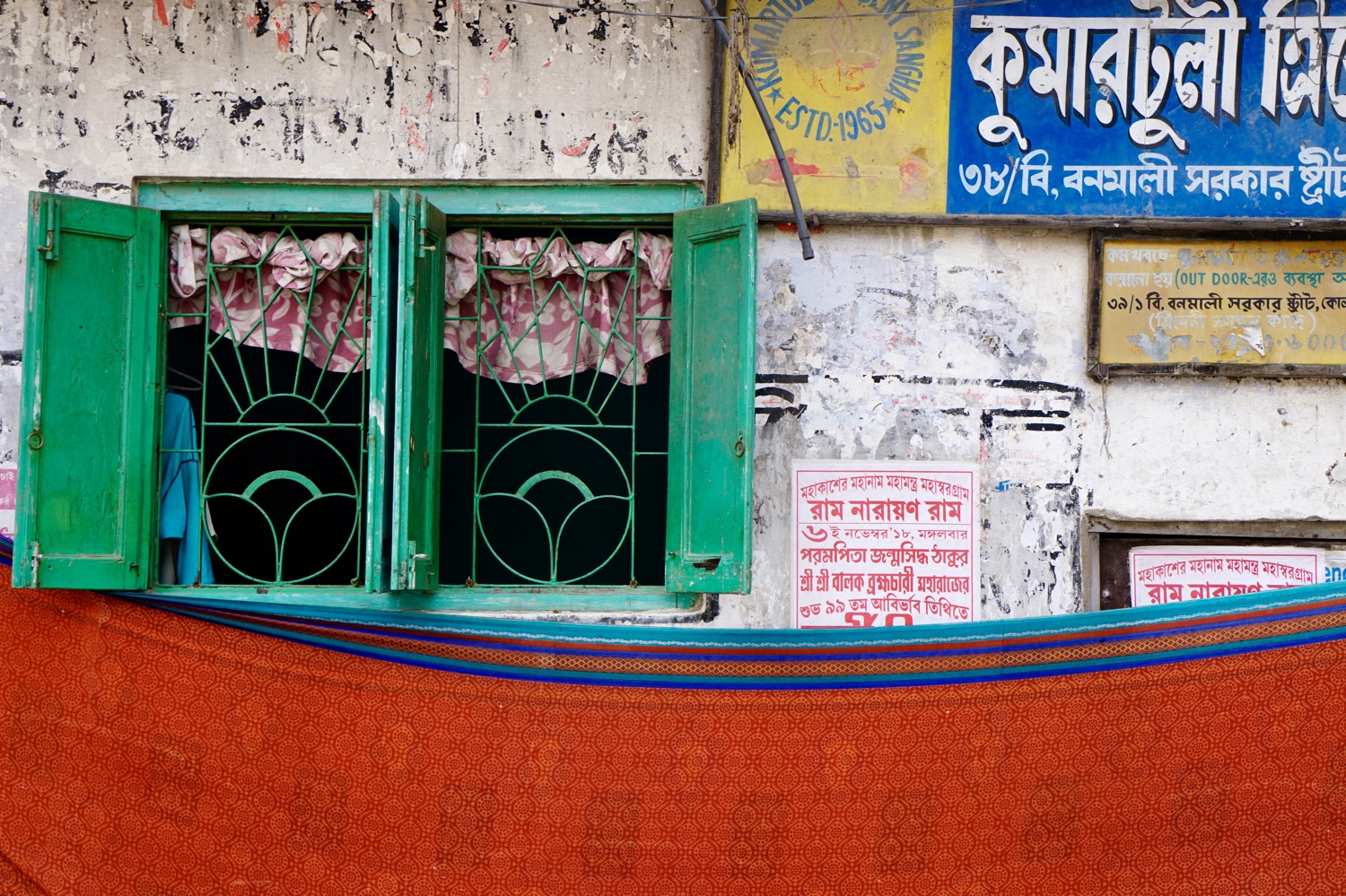 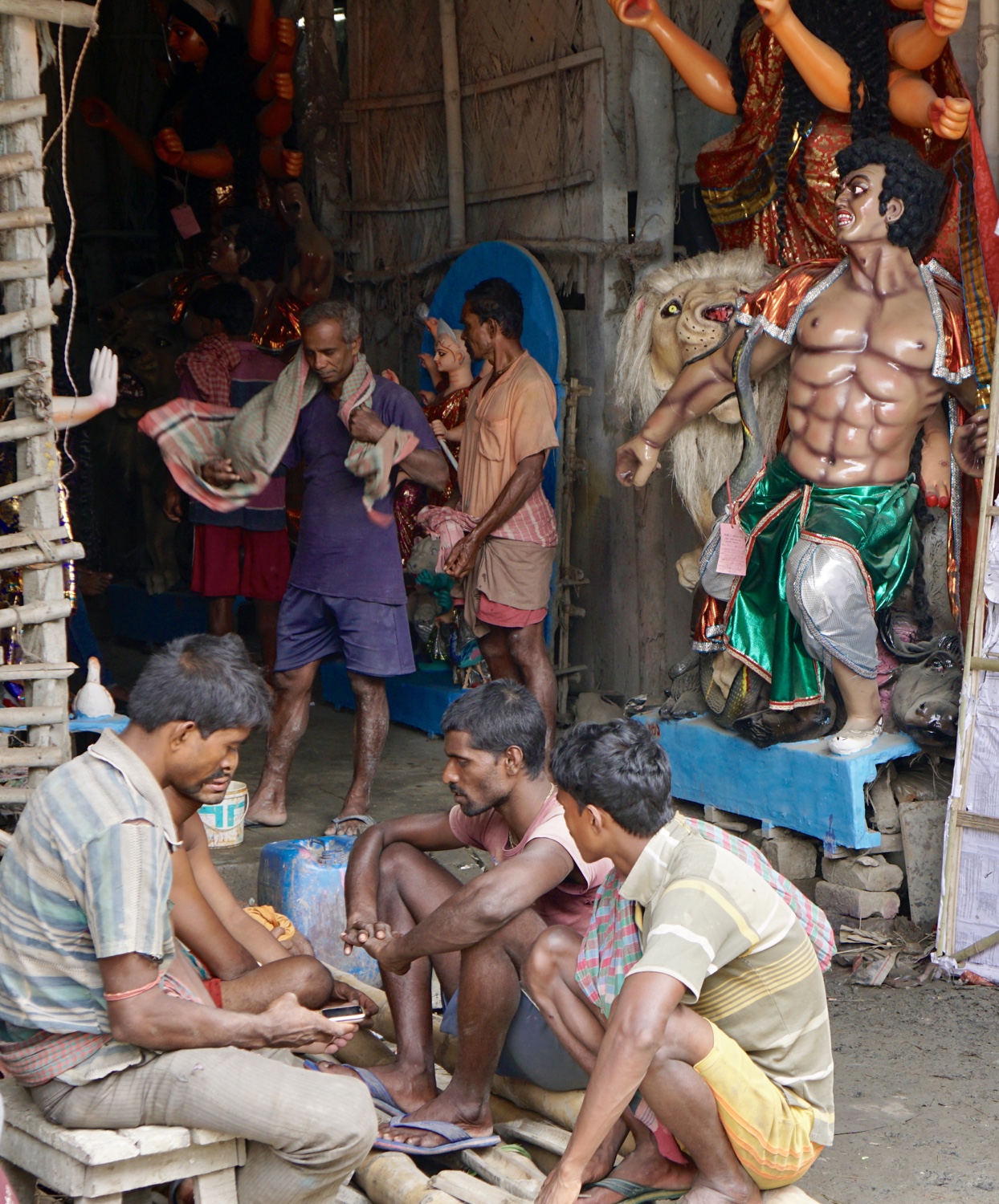 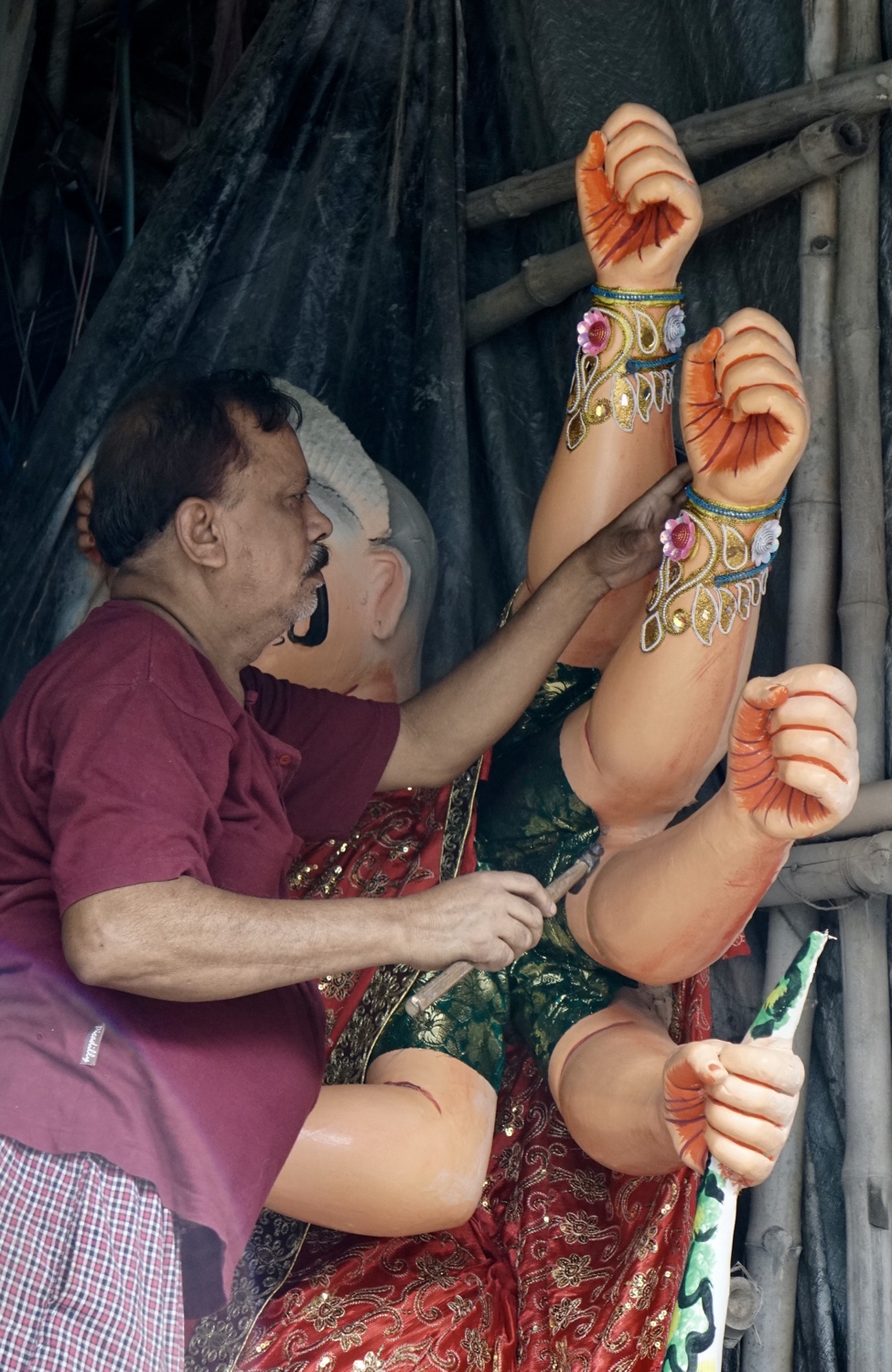 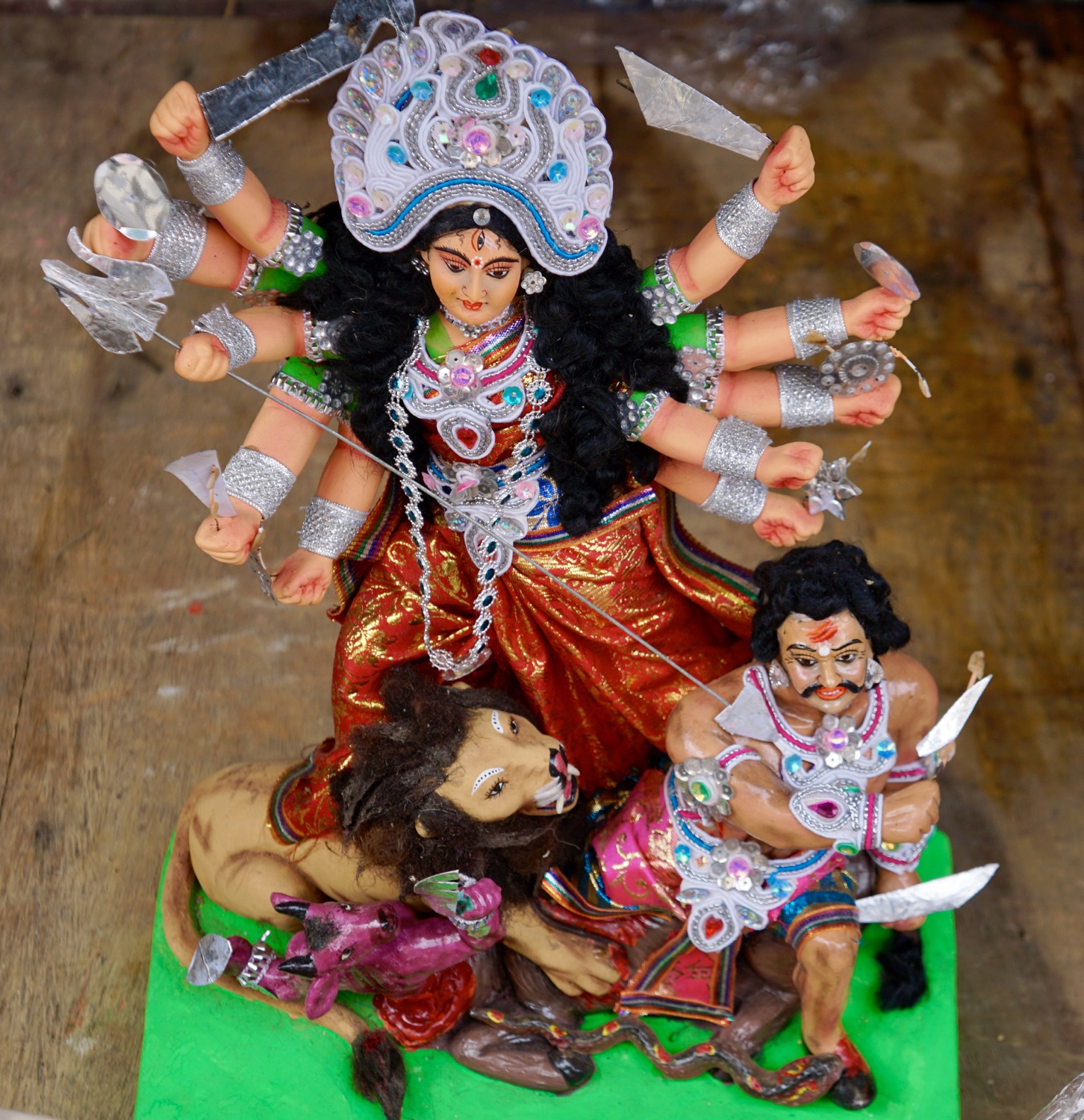 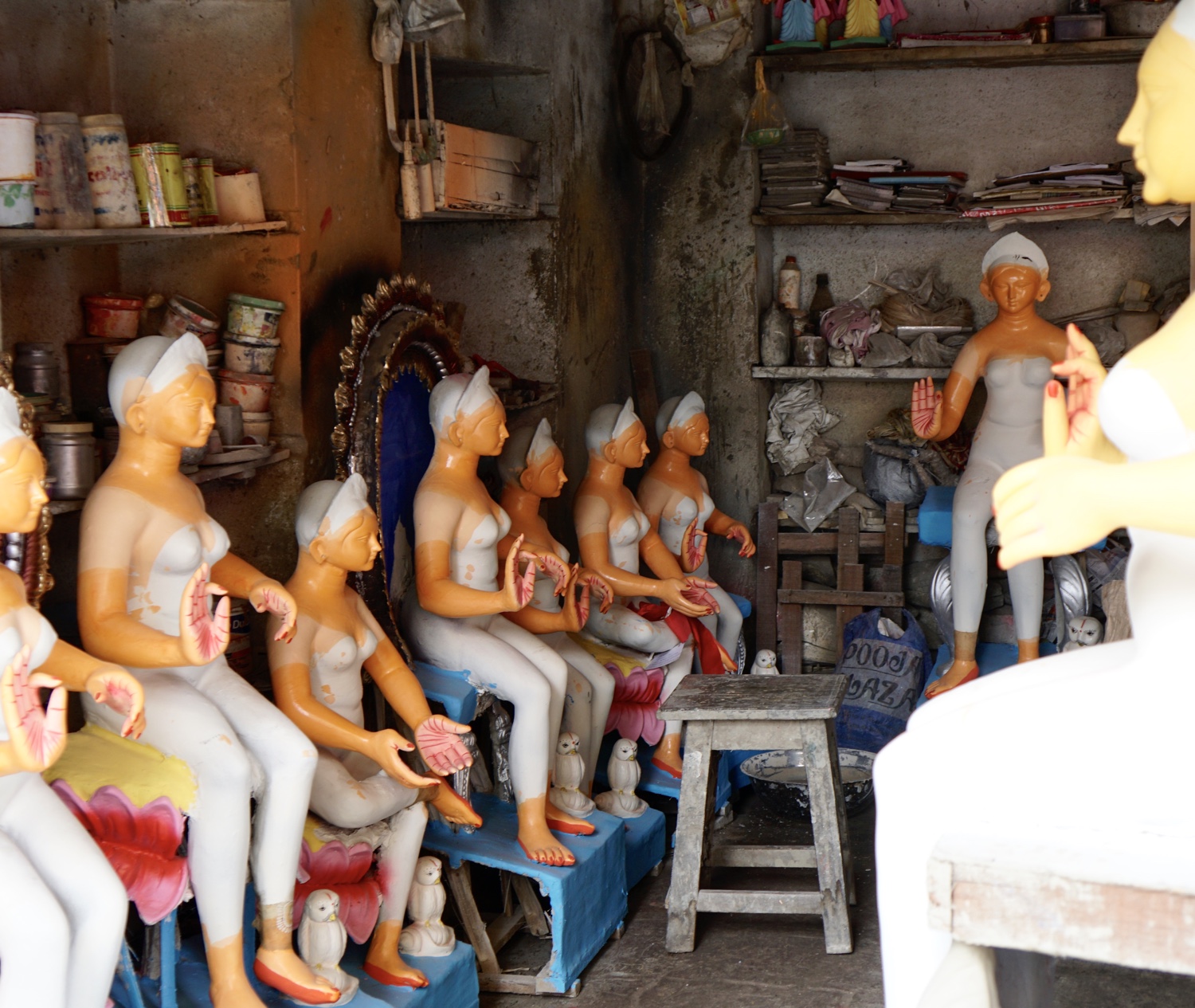 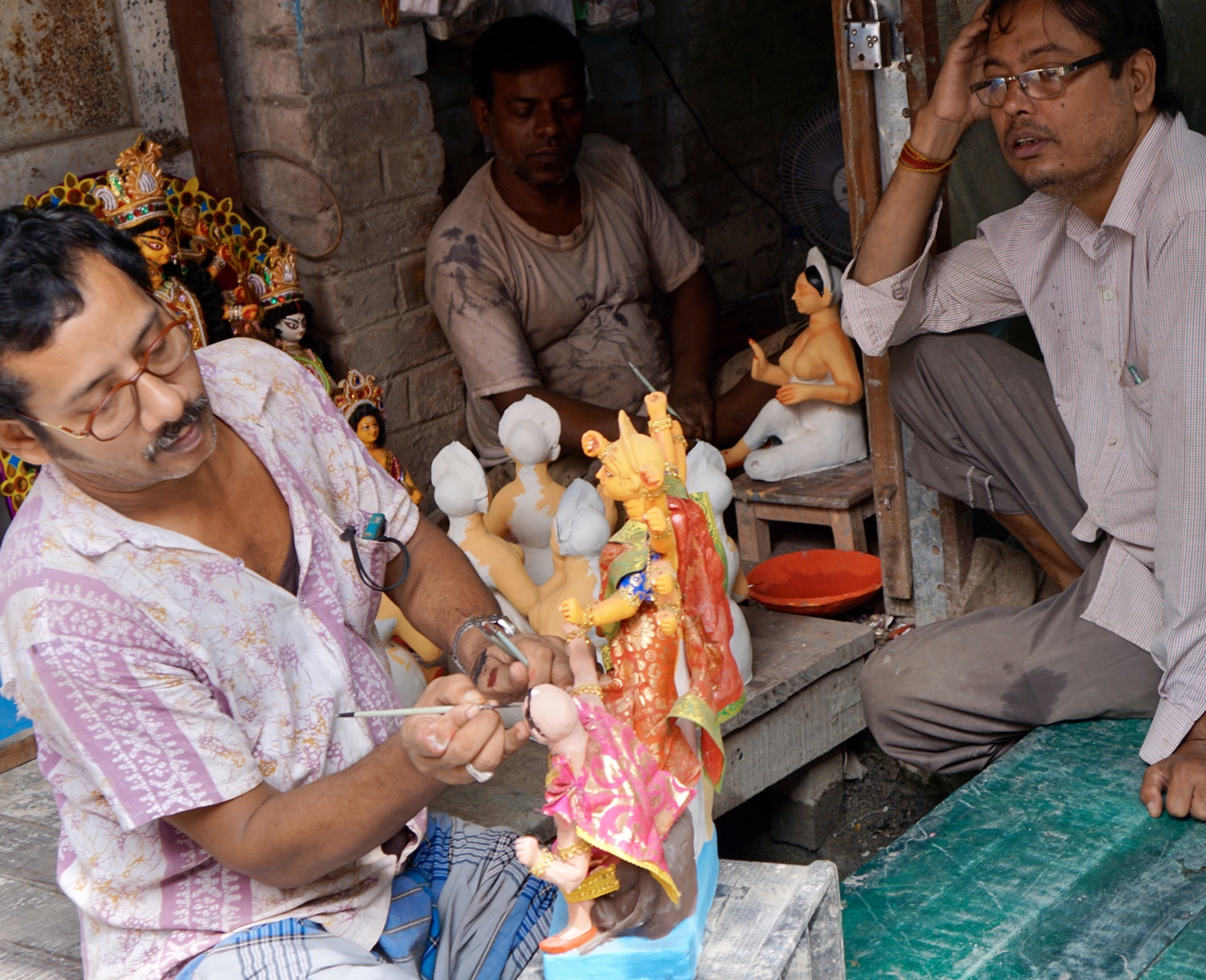 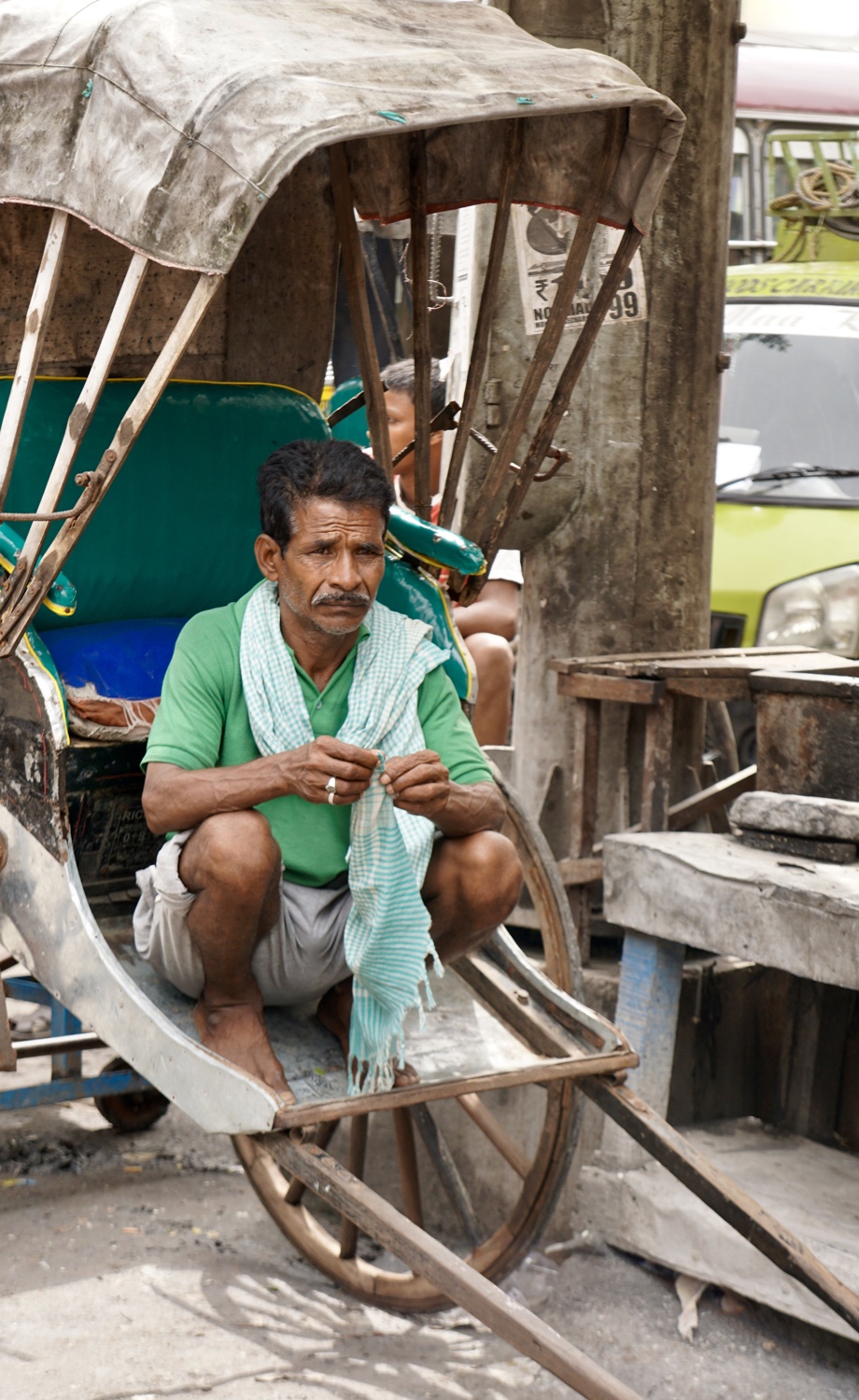 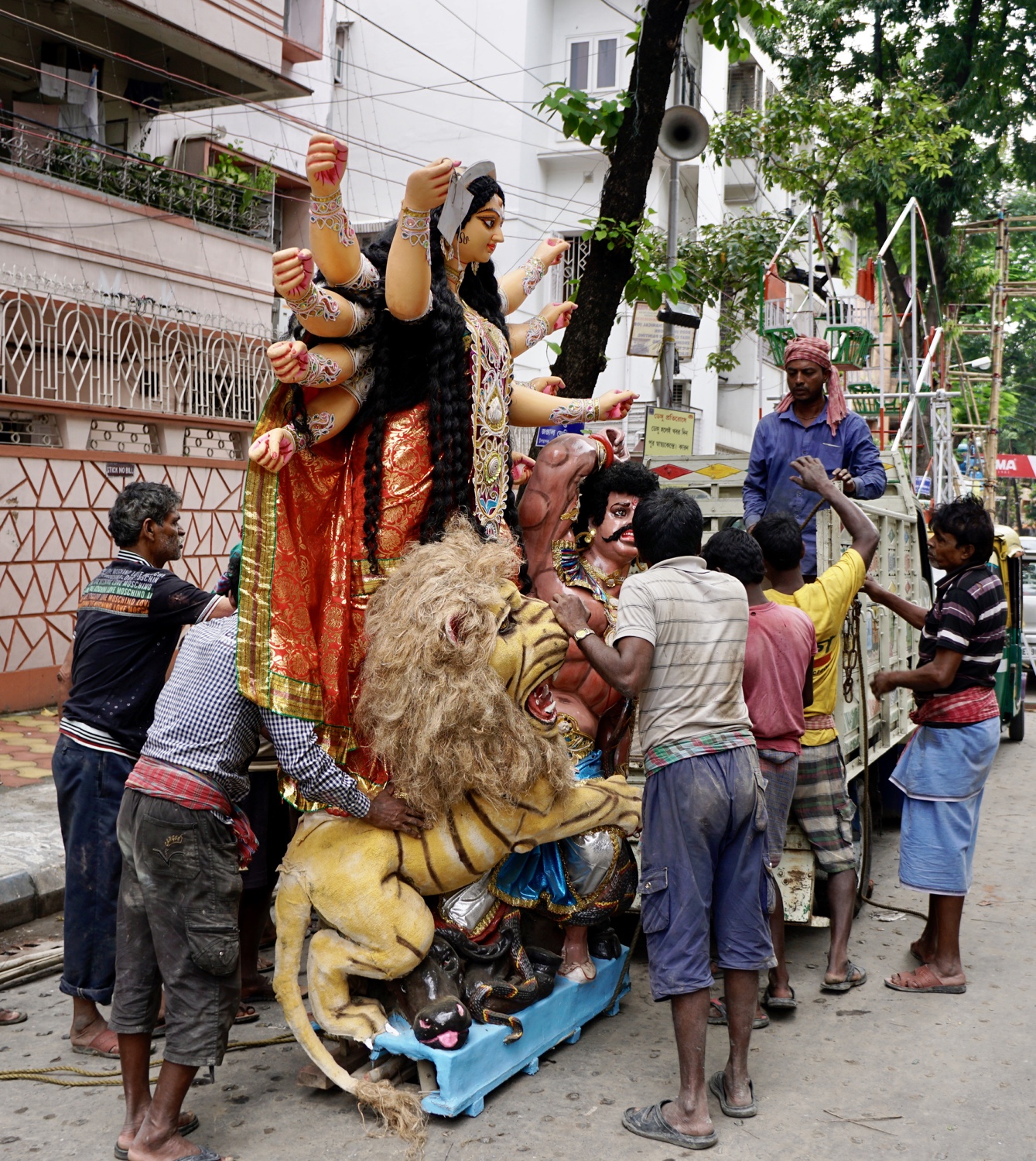 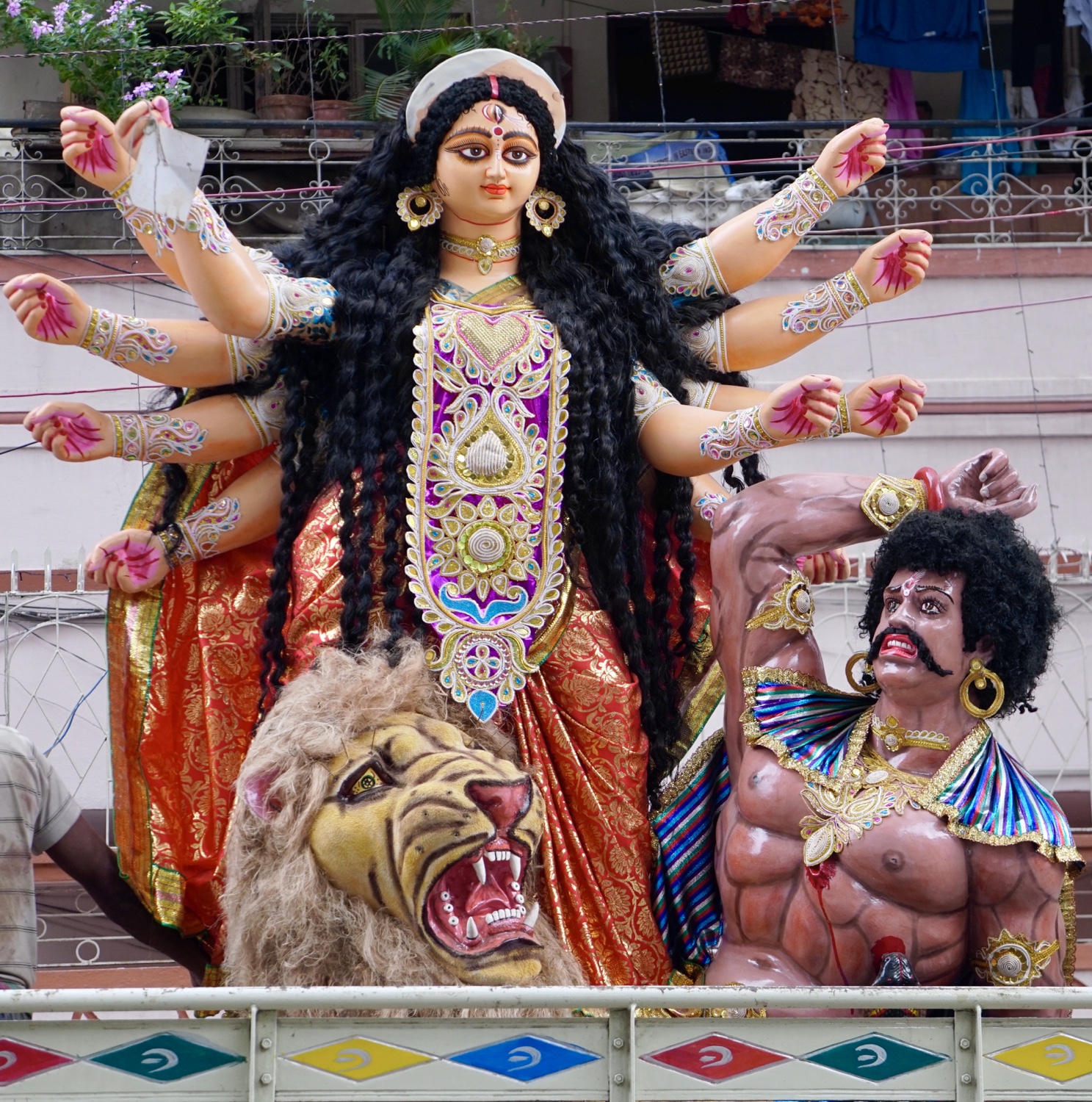 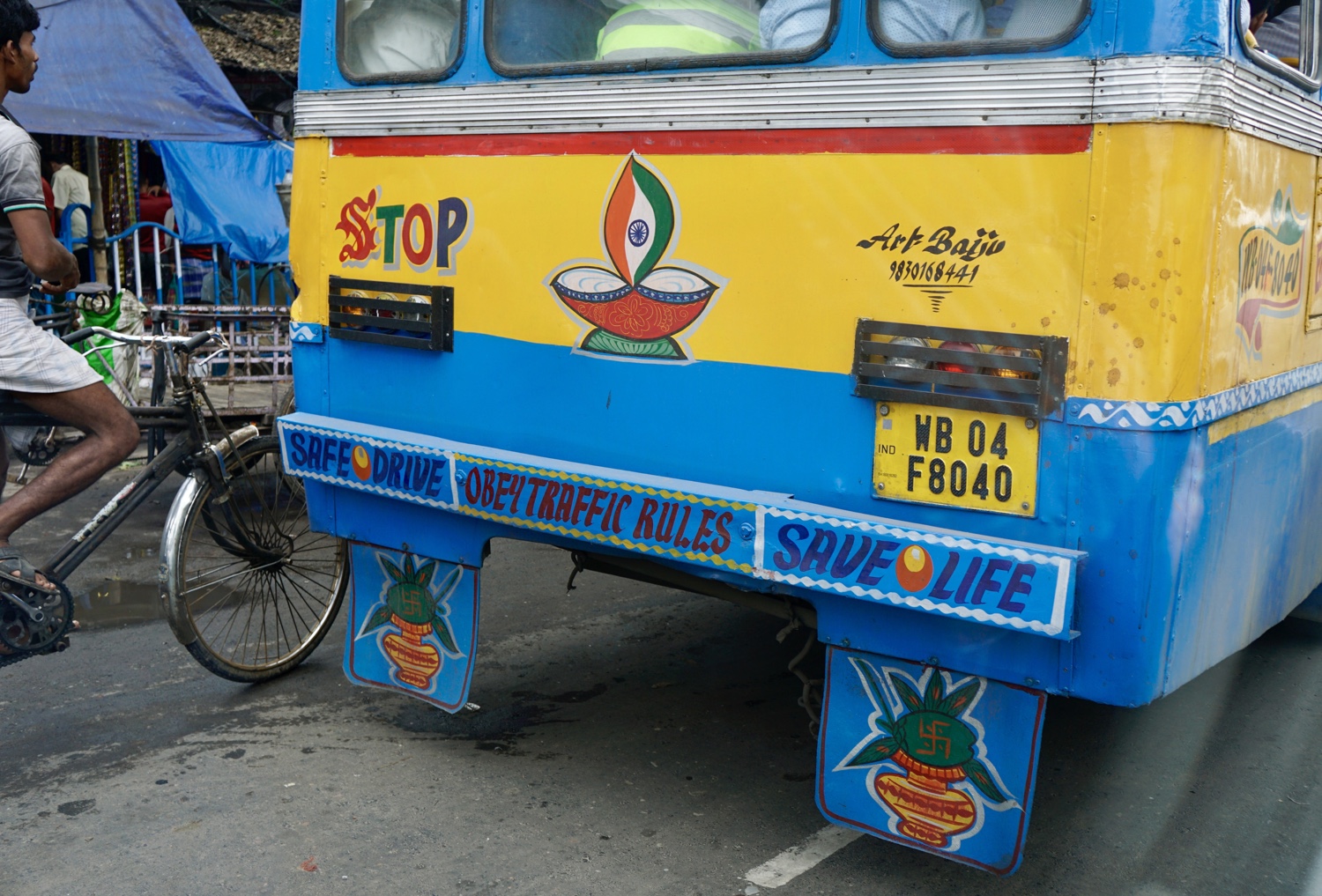
In the afternoon, I visited a Jain temple, learned some of the history of Calcutta from Partha at the Victoria monument and had lunch with Partha, before visiting the very moving tomb and exhibit at Mother House, where Mother Teresa worked and is buried. One gets some sense of the extraordinary work that Mother Teresa did over her long life. While these activities were somewhat rushed, they were all worthwhile, especially the visit to Mother Teresa’s. Partha did a good job of describing the Jain temple and giving highlights of Calcutta’s history, which I’d have benefited more from if I’d had more time or energy. We had rain on and off in the afternoon, but it didn’t interfere materially with our activities.
Below are a few photos of Mother Teresa’s Motherhouse of the Missionaries of Charity. I have not included any of the Jain Temple or the Victoria Monument (museum), because those would be sorta boring.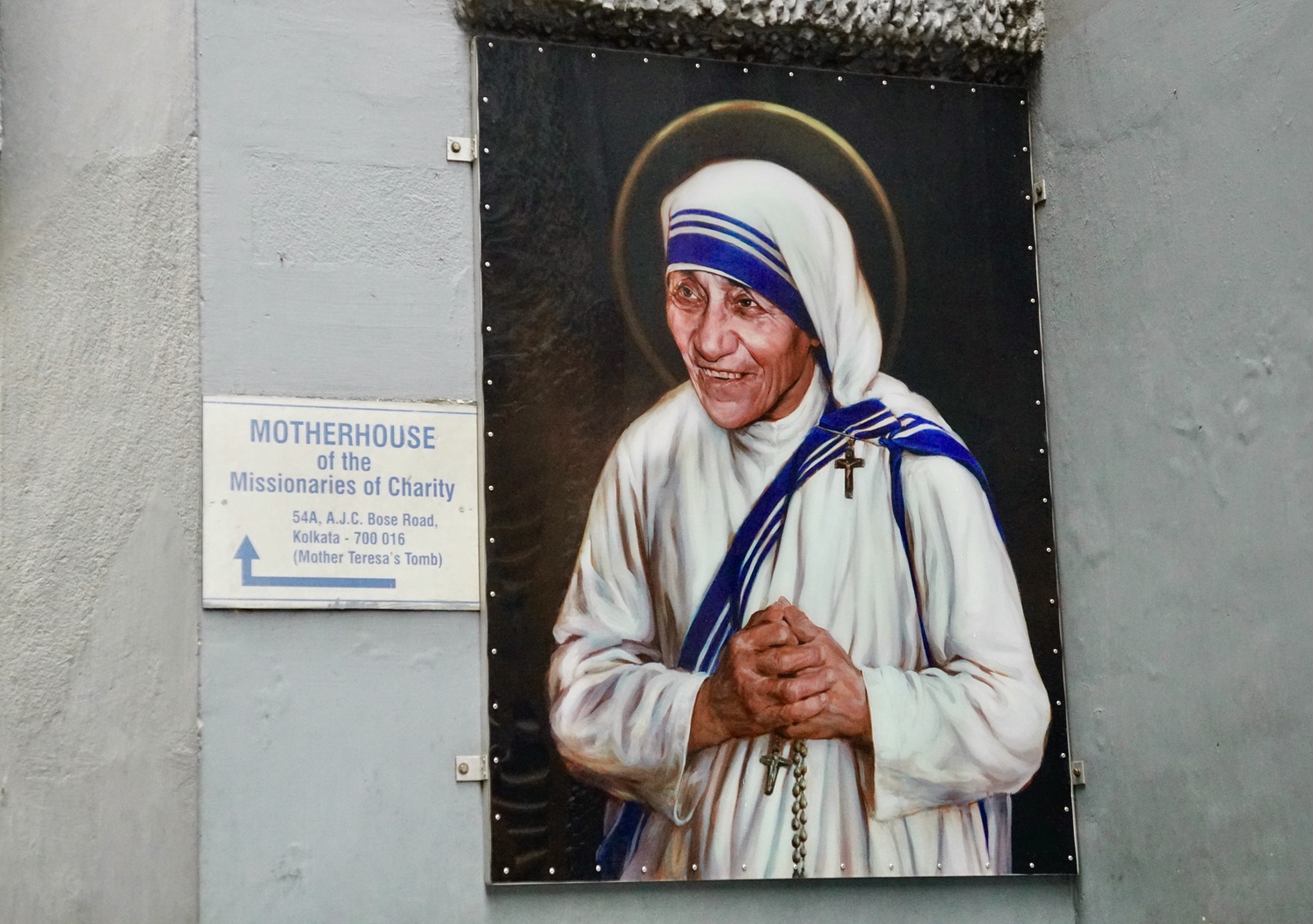 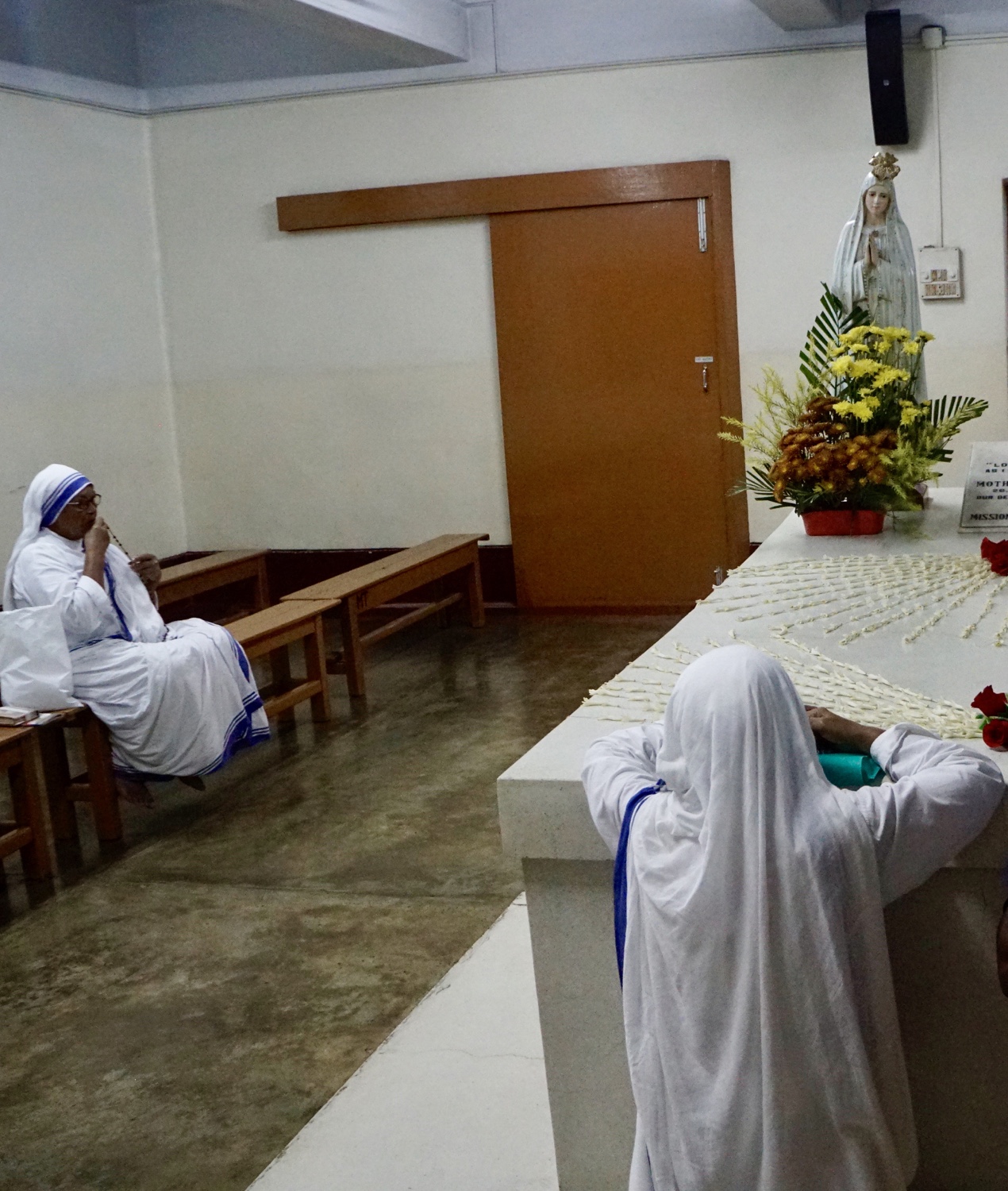 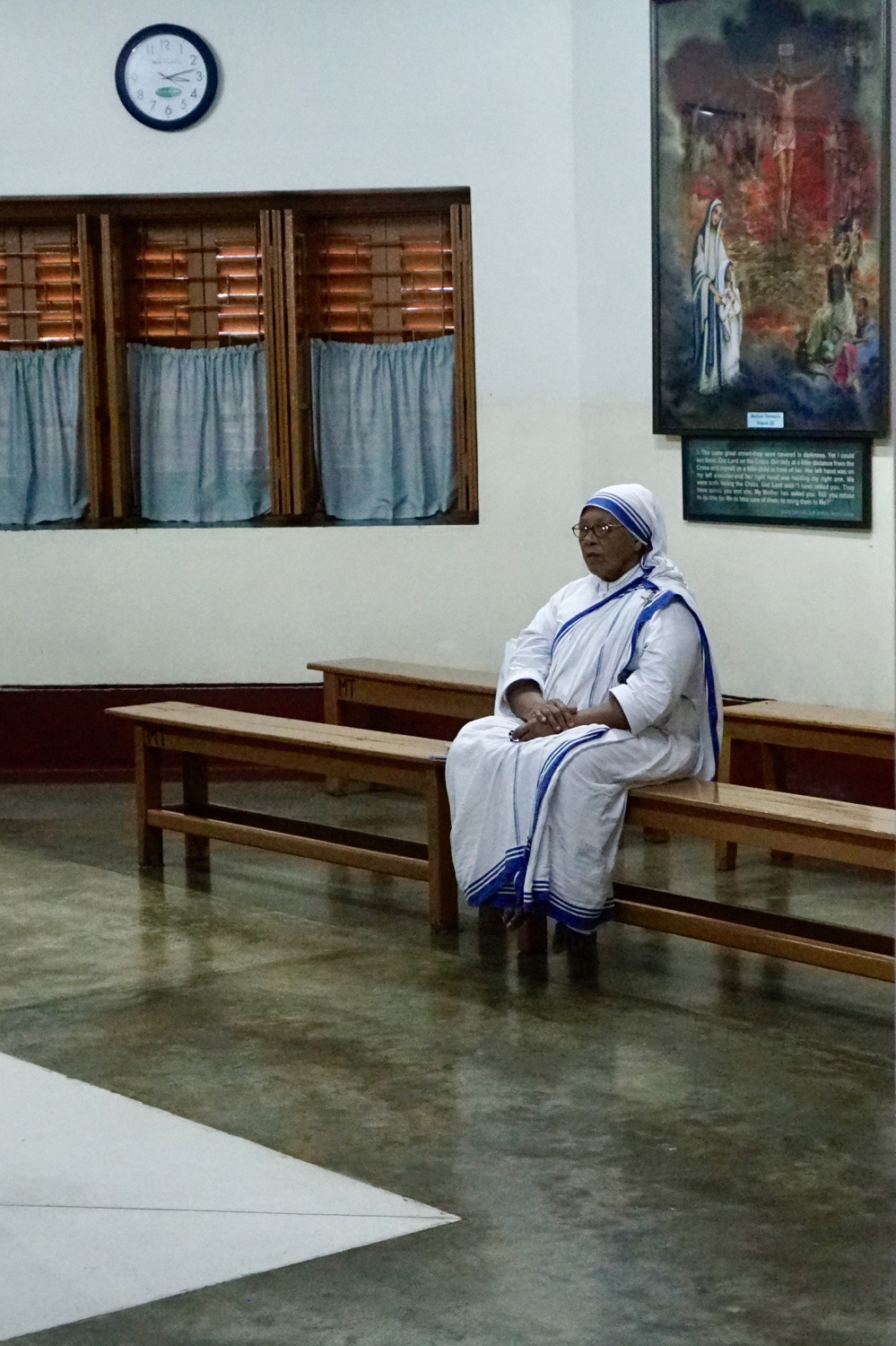
Overall, it is hot and humid, with our air conditioned vehicle a most welcome respite. Streets are crowded and there’s a constant cacophony of car horns blaring.. Partha says that Kolkata is a “Eoropean” city, and there’s a certain truth to that, as compared to other Indian cities I’ve visited, but nobody would mistake Calcutta for Paris.
Showered and relaxed a bit before going out for the dinner that my other fabulous travel agent (besides Shonali), Jean Zunkel in Santa Fe (jean.zunkel@bjadventures.com), arranged for me tonight with Bomti Isengard, a who mingles across global travel circles and offers a taste of real Kolkata at his home, surrounded by tastefully appointed interiors and an enviable art collection. The interior designer, art collector and consultant invites discerning travelers to browse through it, all the while narrating and answering questions.
This experience largely caters to expats and foreign travelers for whom he is something of a gastro guru. Apart from Bengali cuisine, he serves Anglo-Indian dishes like jalfrezi and vindaloo, which are intrinsic to the city’s culinary fabric, including classics like luchi, dal, aloo posto, fish curry, bhaja, mishti doi.
The day before I left on this trip, Jean wrote to warn me, “I just want to remind you that you need to trust me when you start to walk into the building where Bomti lives. It’s a beautiful old historical building and it looks totally abandoned…..
When you are walked up the steps to the floor of his apartment you may think that his assistant is taking you somewhere to murder you….Have your phone flashlight ready because the stairs can be a bit dark. [In fact, there was an old elevator.]
And then you walk into his apartment…..totally amazing and a huge surprise.”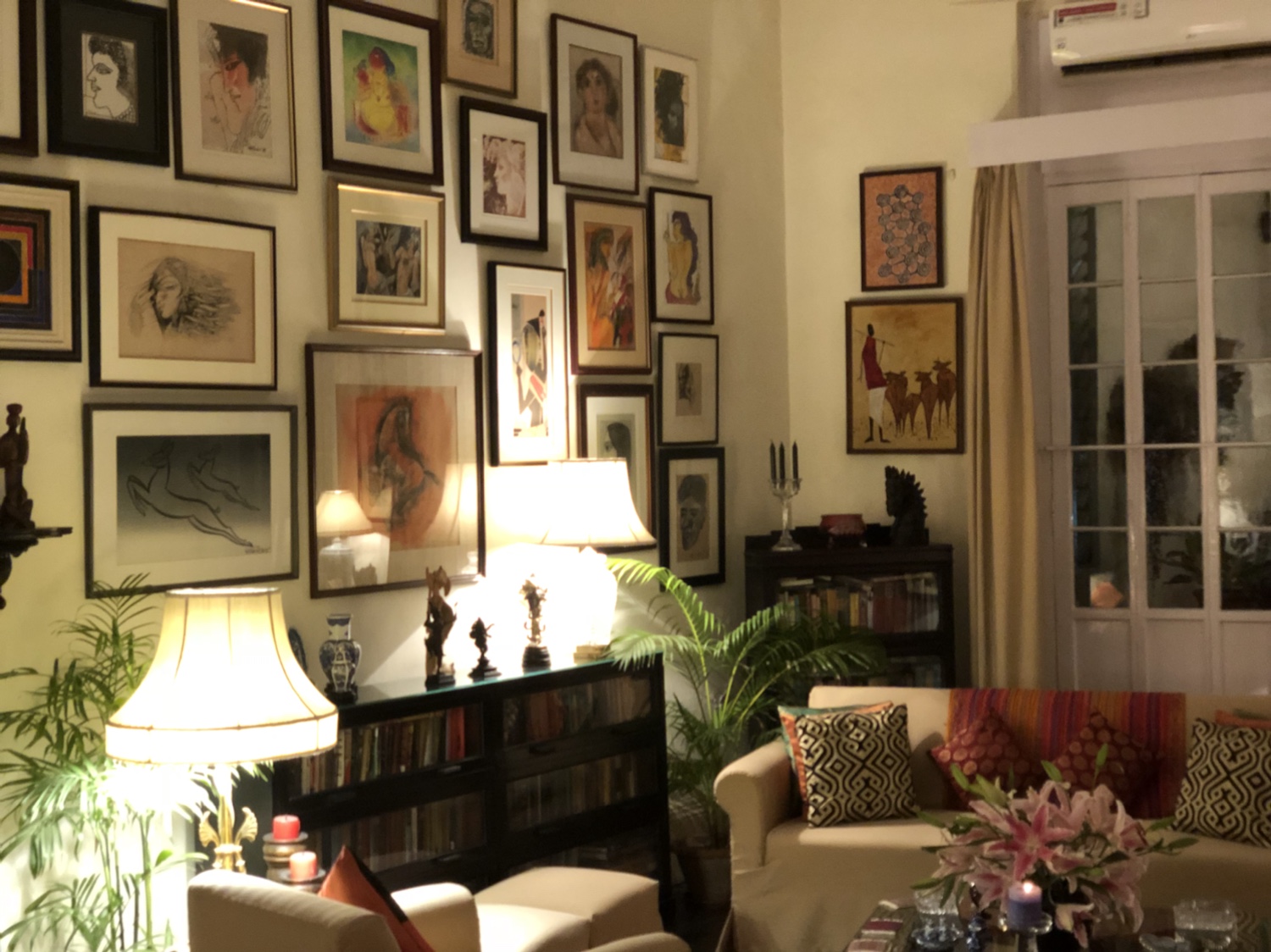 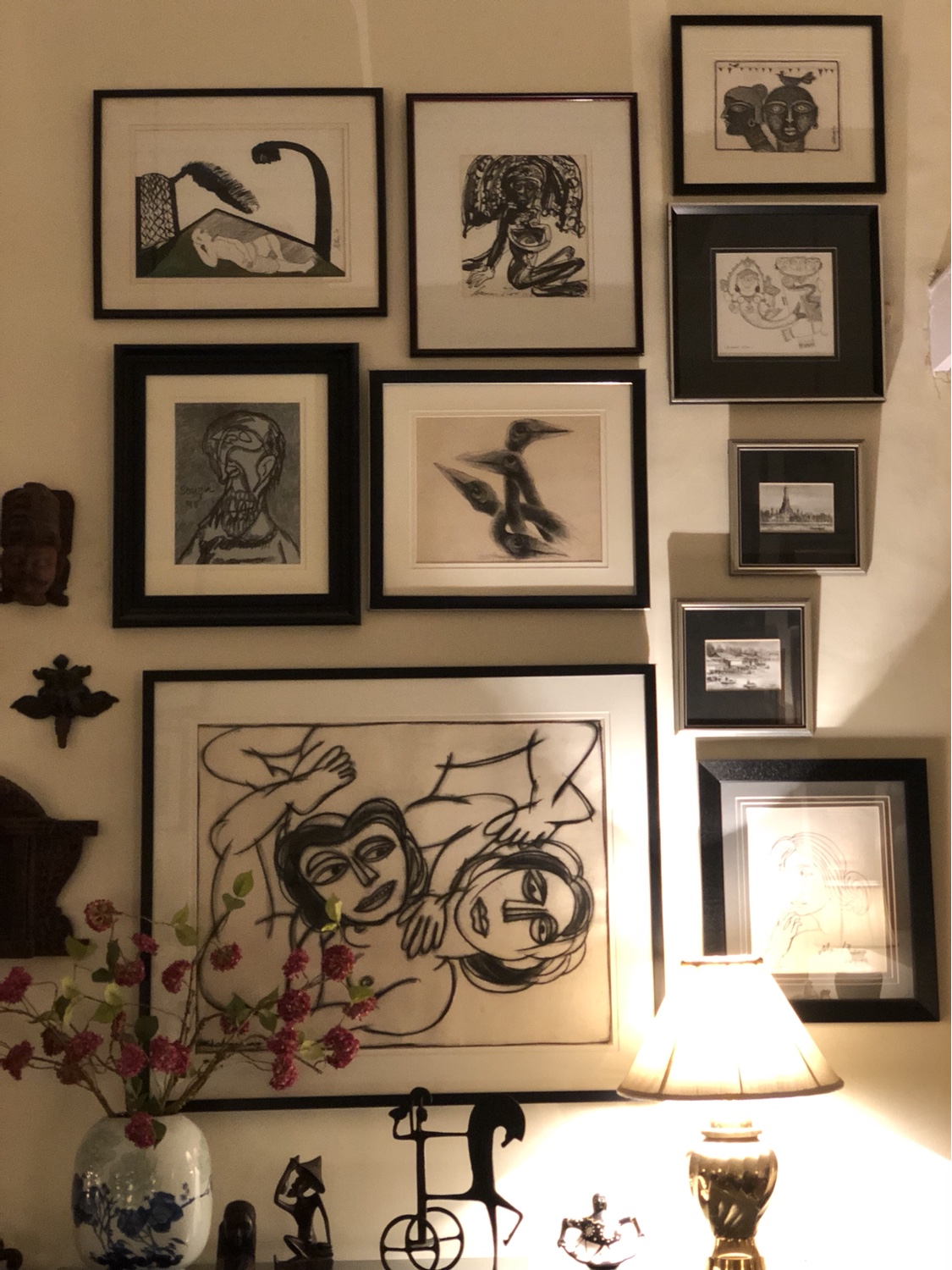
As usual, Jean’s description was spot-on. Indeed, even getting the couple blocks from the hotel to his building was harrowing, because the streets were mobbed with people, and one had to dodge cars, mud puddles and dogs. The approach to the apartment, located in what had once been a huge department store, was seedy, but safe.
Bomti also was hosting a couple from Argentina, Heather and Will (Will was originally from Canada), a couple from Devon in England, Jo and Jeff, a woman friend of theirs from England, and we were later joined by Bomti’s mother, who had chosen some of the art, his younger brother, who is in the tea business and with whom I bonded because he had a labradoodle, and an uncle and aunt who had lived in England for 49 years, but had now moved back to India. Drinks, multiple hors d’ourves and about seven main courses were all excellent, as was the surprise dessert, complete with serenade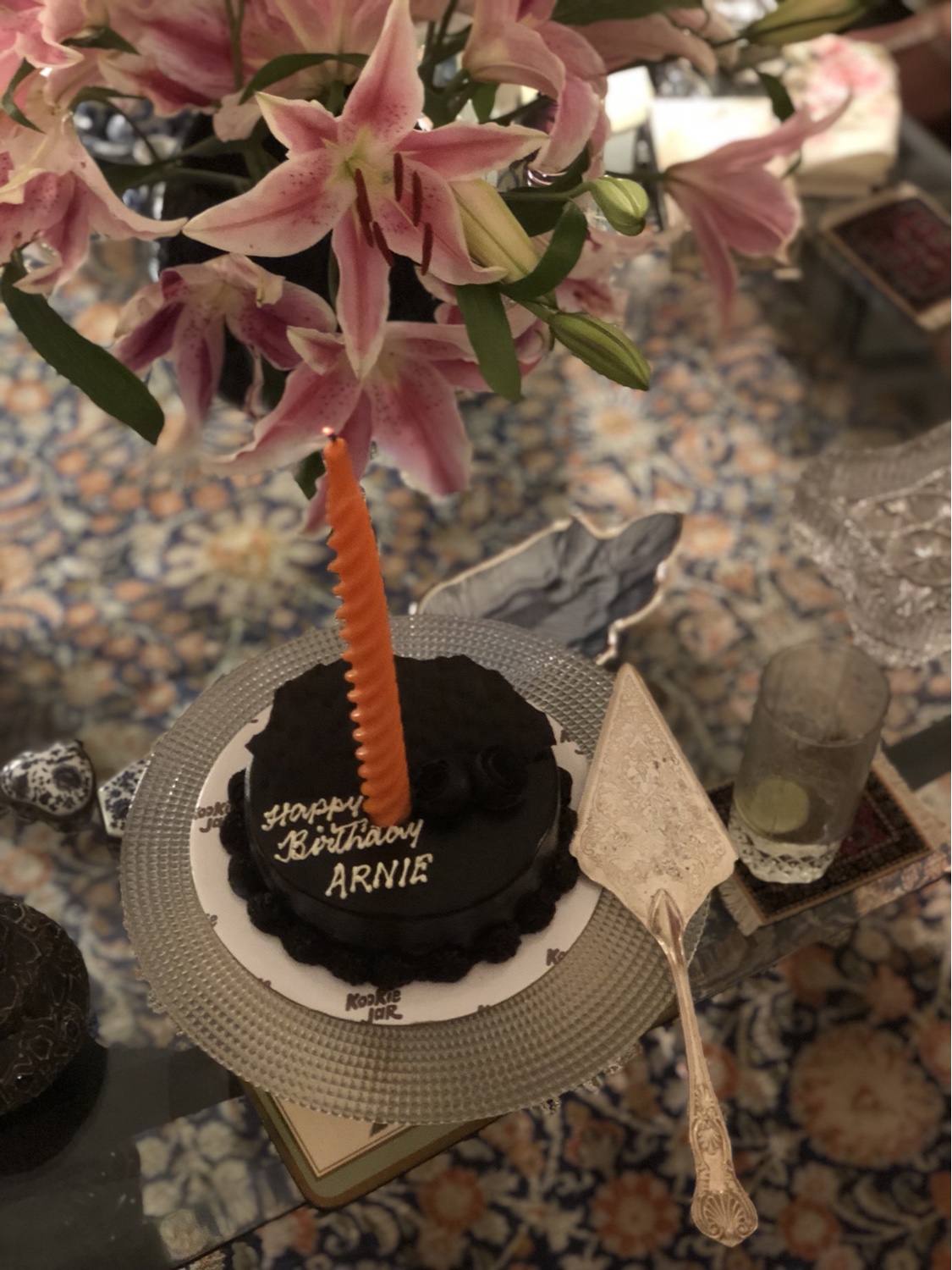
Conversation was varied and lively. We looked at art which Bomti is selling (in another room), but nobody was interested in buying. My impression is that Bomti is more of an art dealer than an art appreciator, but that may not be a fair assessment on my part. All in all, it was a fun and unusual evening, well worth the cost of about $70.
I brought Bomti a copy of Carol and my poetry and photography book, WHERE THE SACRED DWELLS, NAMASTE, which he passed around to everyone. All the guests took time to look through the book and were impressed, as was Bomti, who said that he liked it a lot and asked me to write “To Bomti” and the date above our signatures. And, hey, this seems like the perfect opportunity to tell you about our new book on Southeast Asia that just came out, WHERE FOREST TEMPLES WHISPER. Carol and I are both very pleased with the way it turned out. And, if you’d like a copy (or several) of that and/or our other books, you can order them at www.dualartspress.com. It’s the least you can do, for godsake. 😀
More tomorrow, when I spend my last day in Kolkata.
|
|

















































 At the ghats, where people wash themselves and their clothes, and lie around
At the ghats, where people wash themselves and their clothes, and lie around







 at a beautiful Jewish synagogue, Meghan David, not not in operation
at a beautiful Jewish synagogue, Meghan David, not not in operation


















































